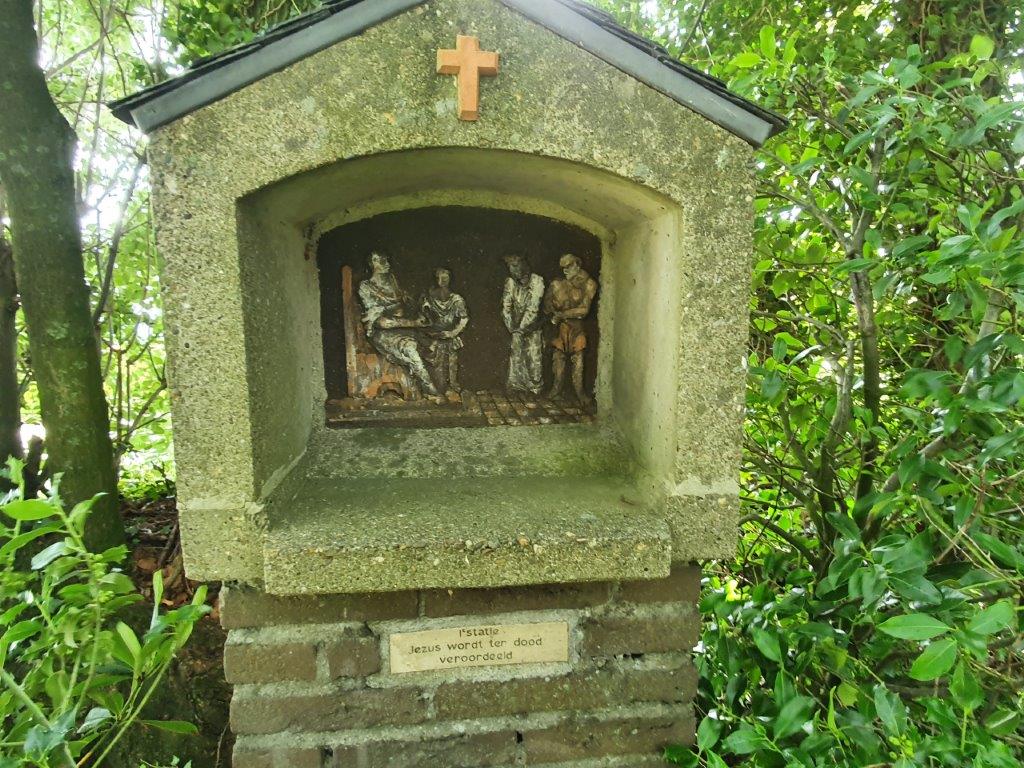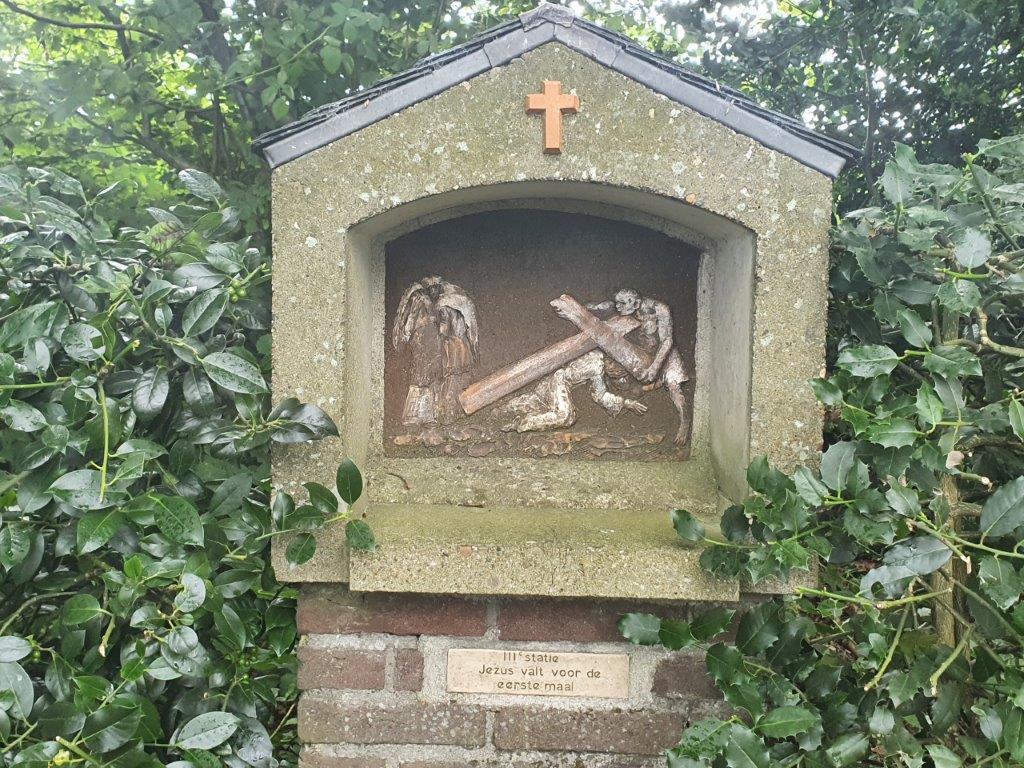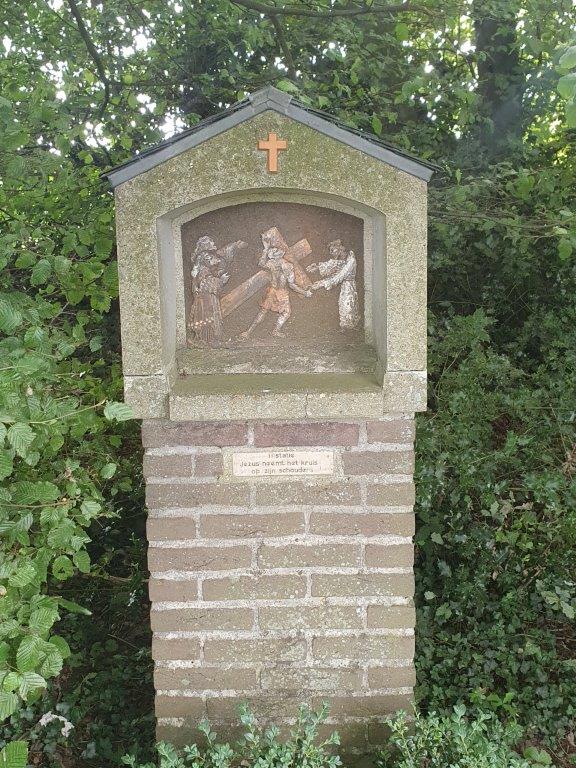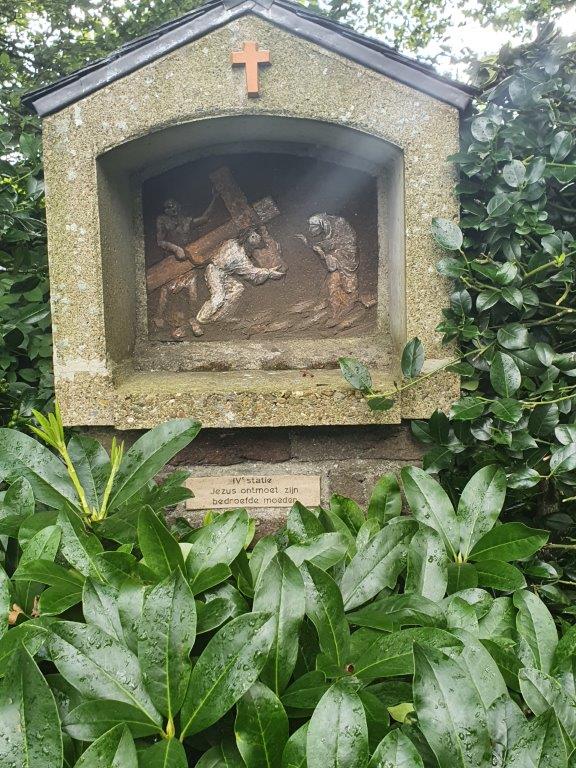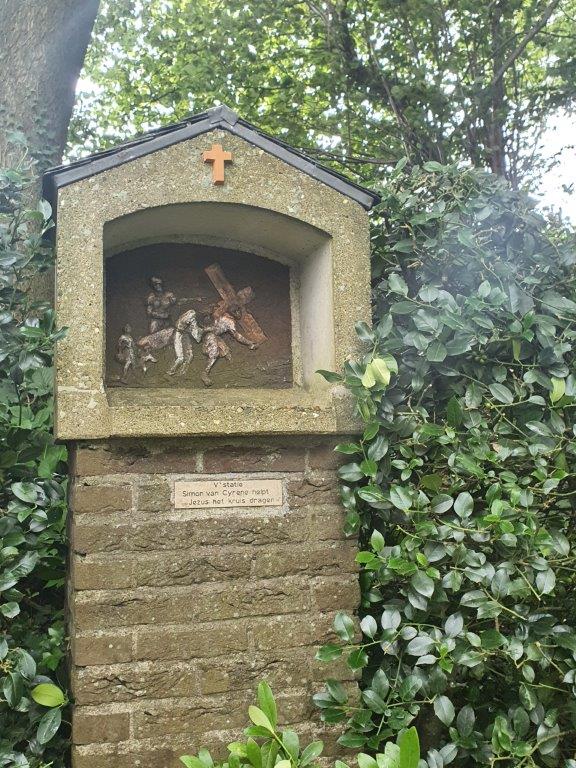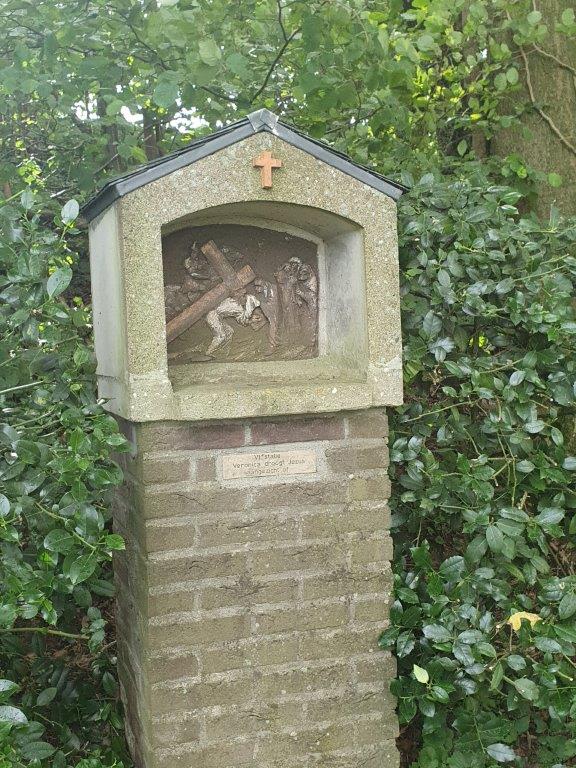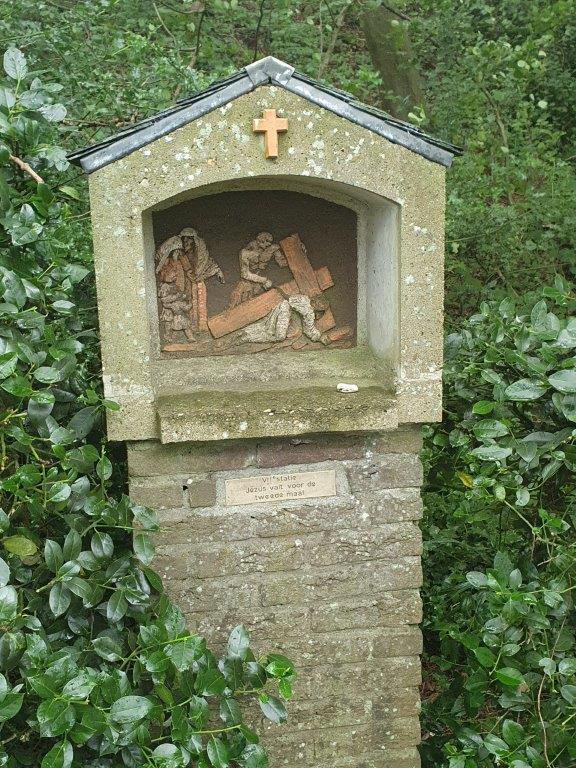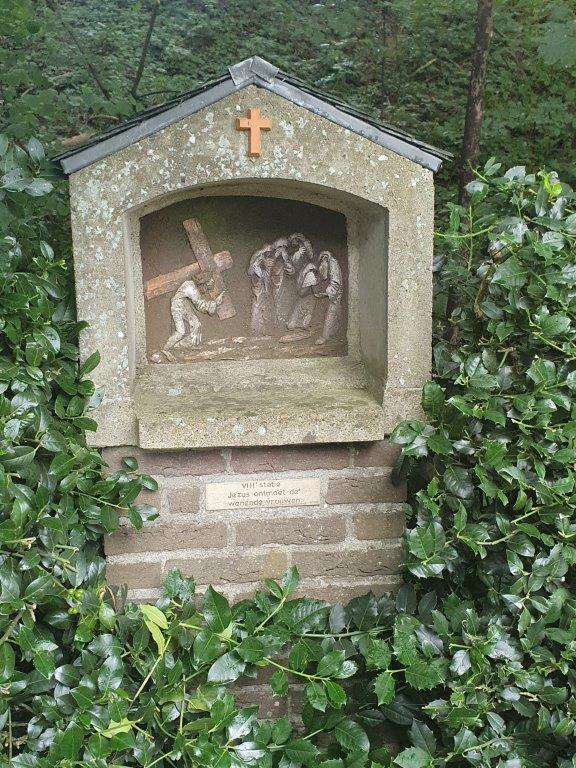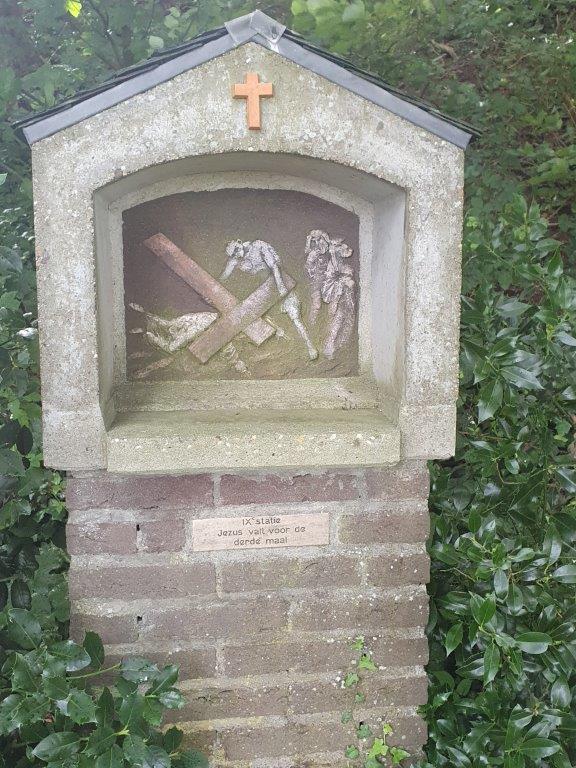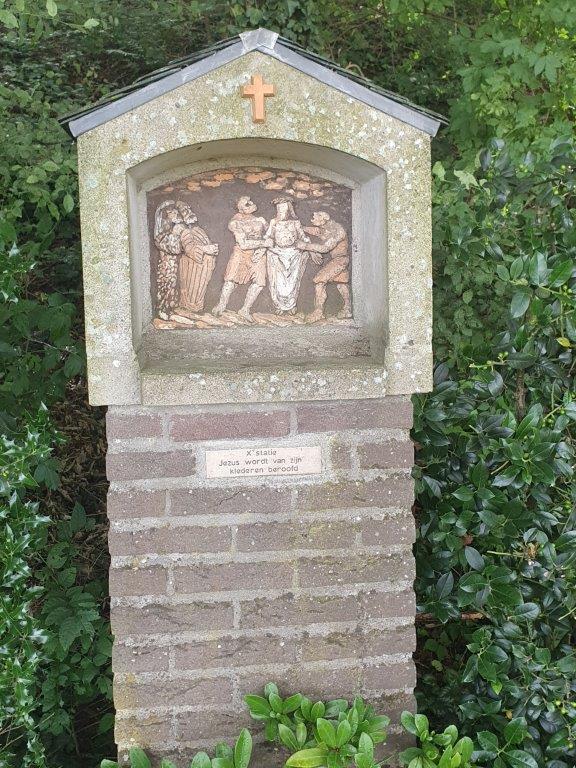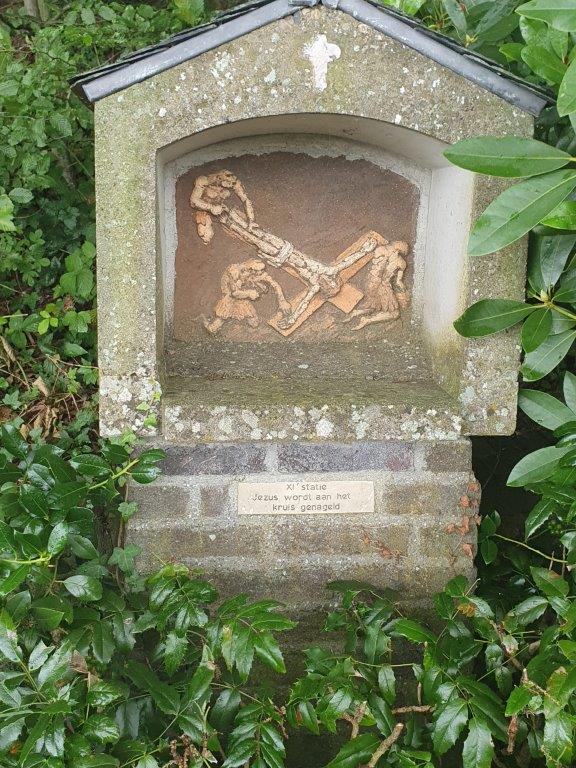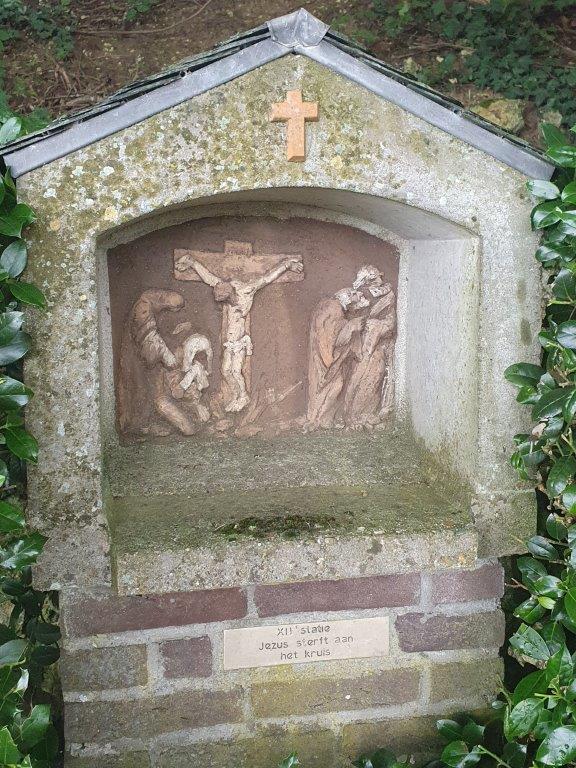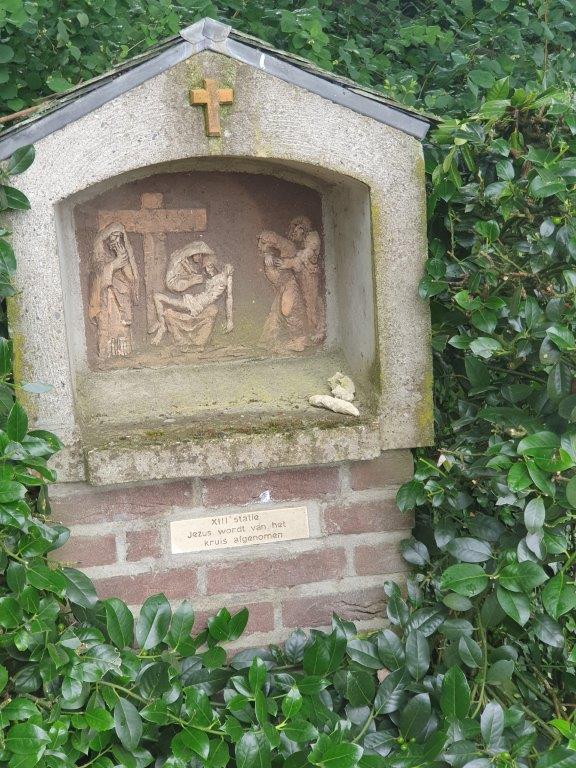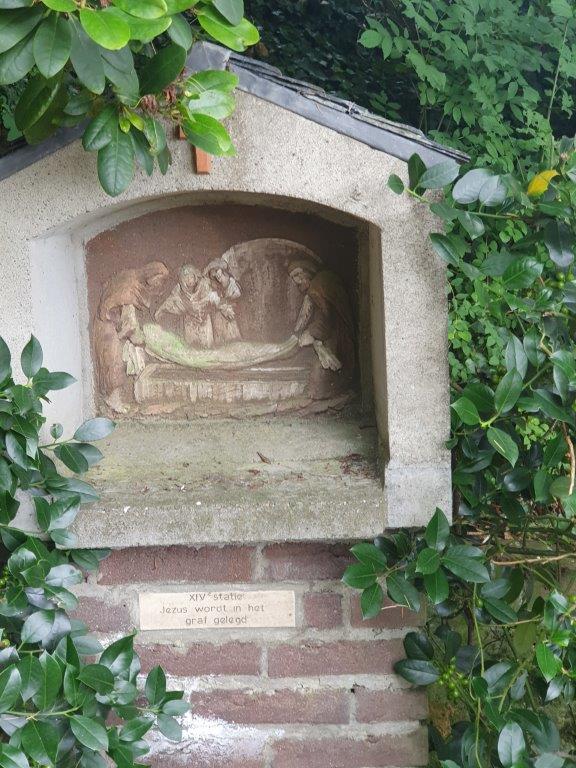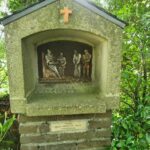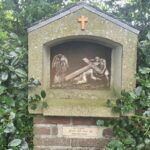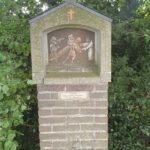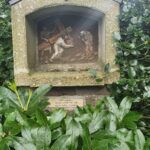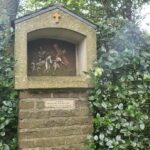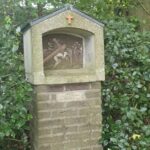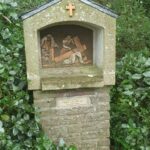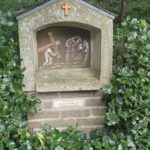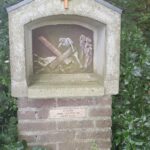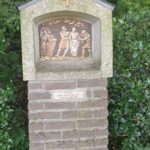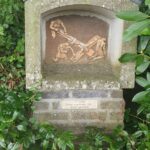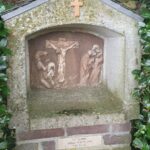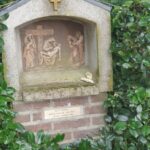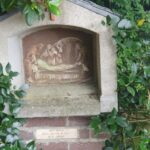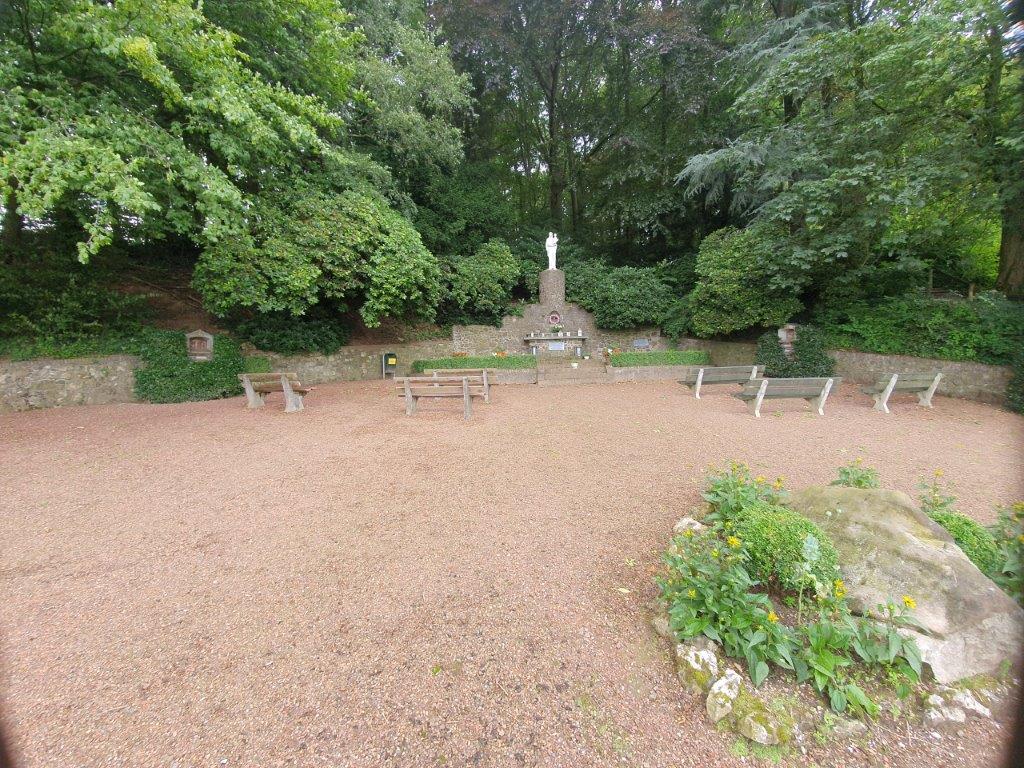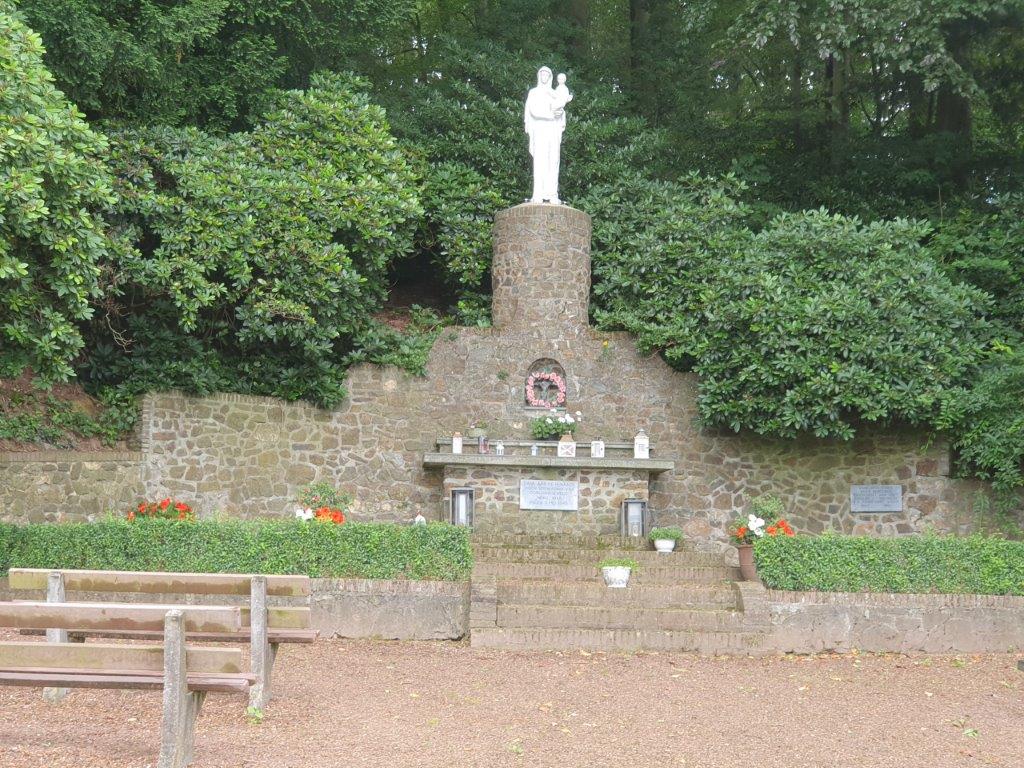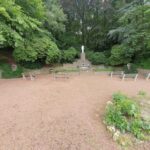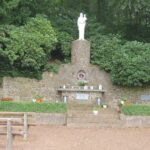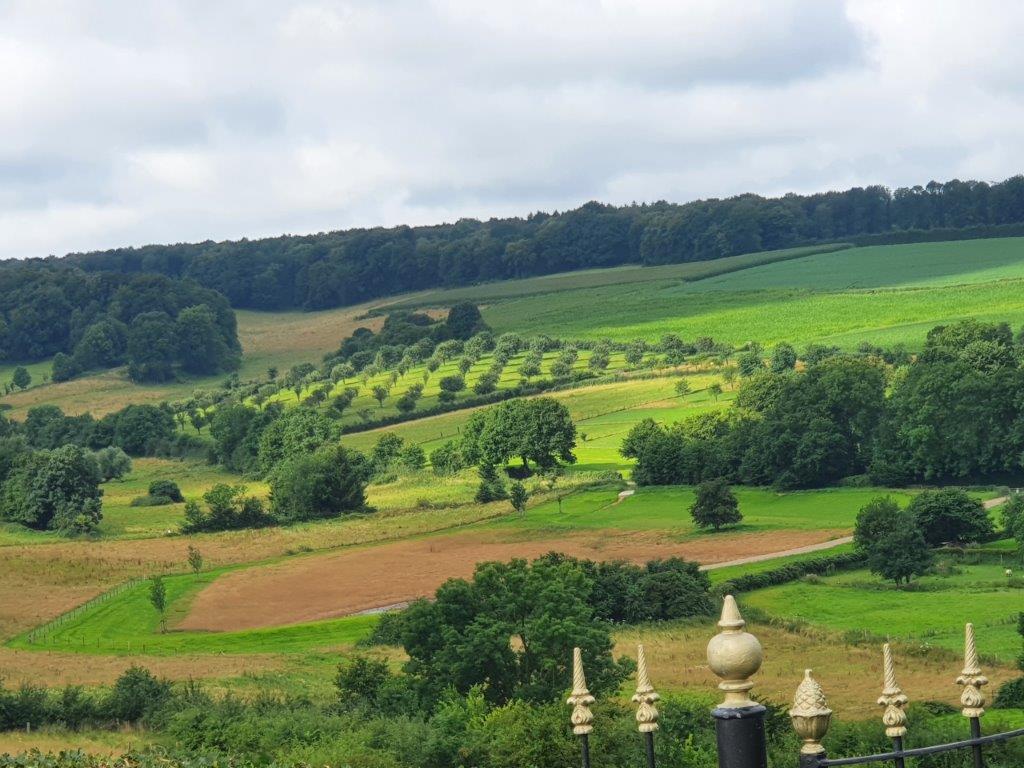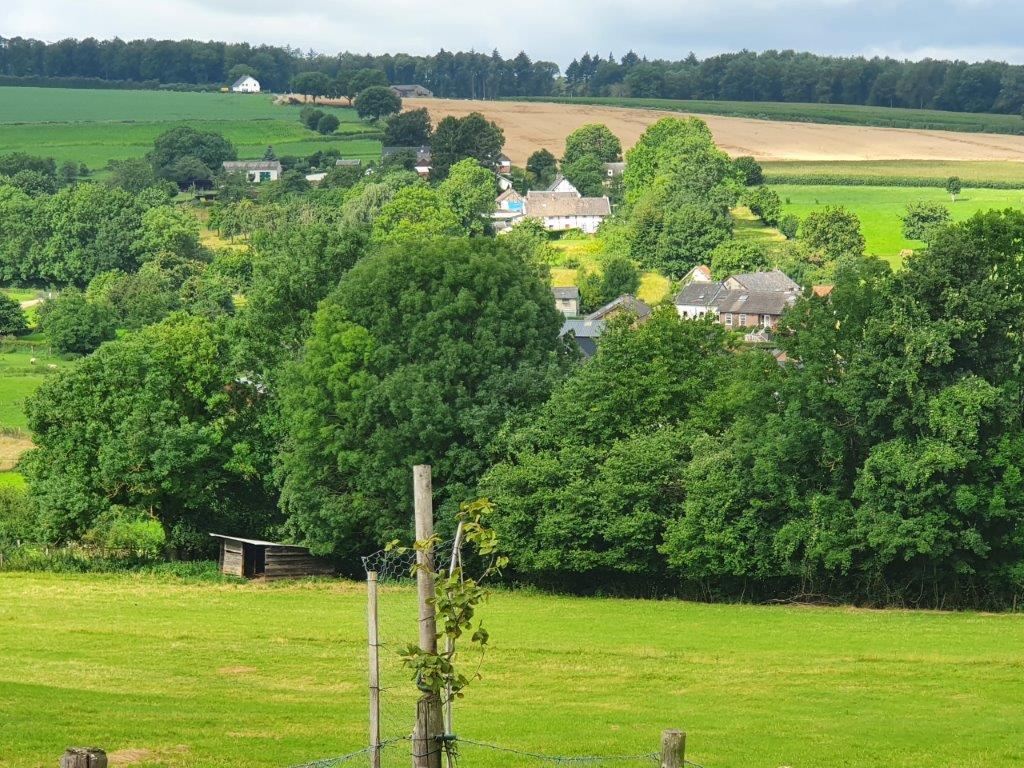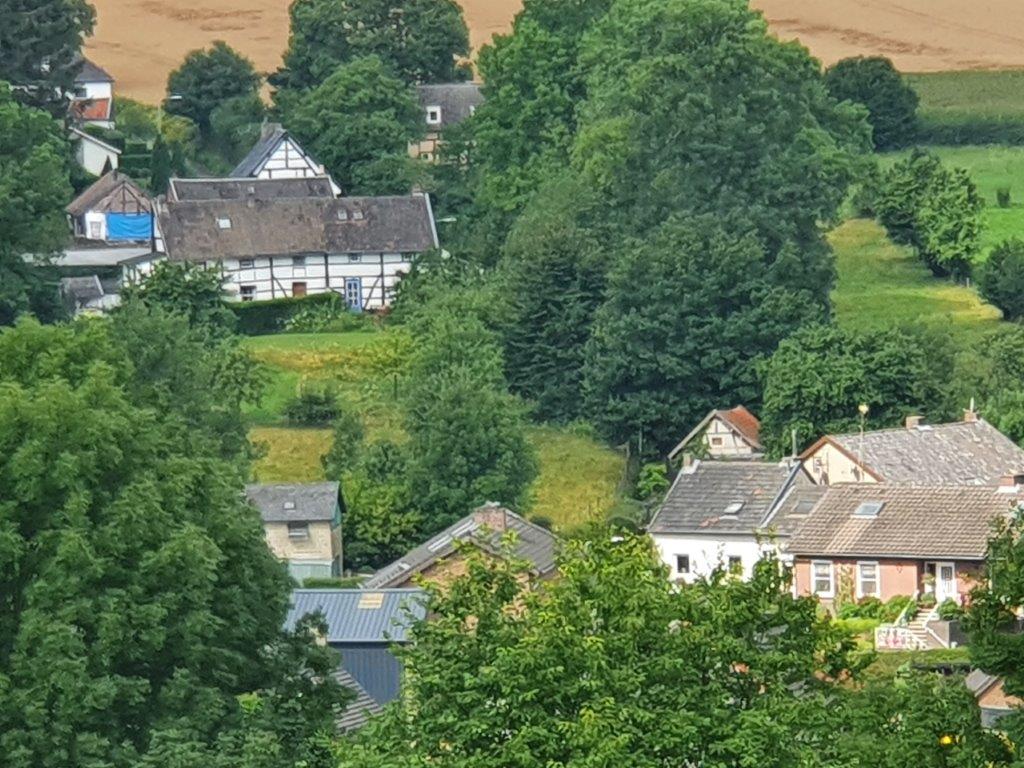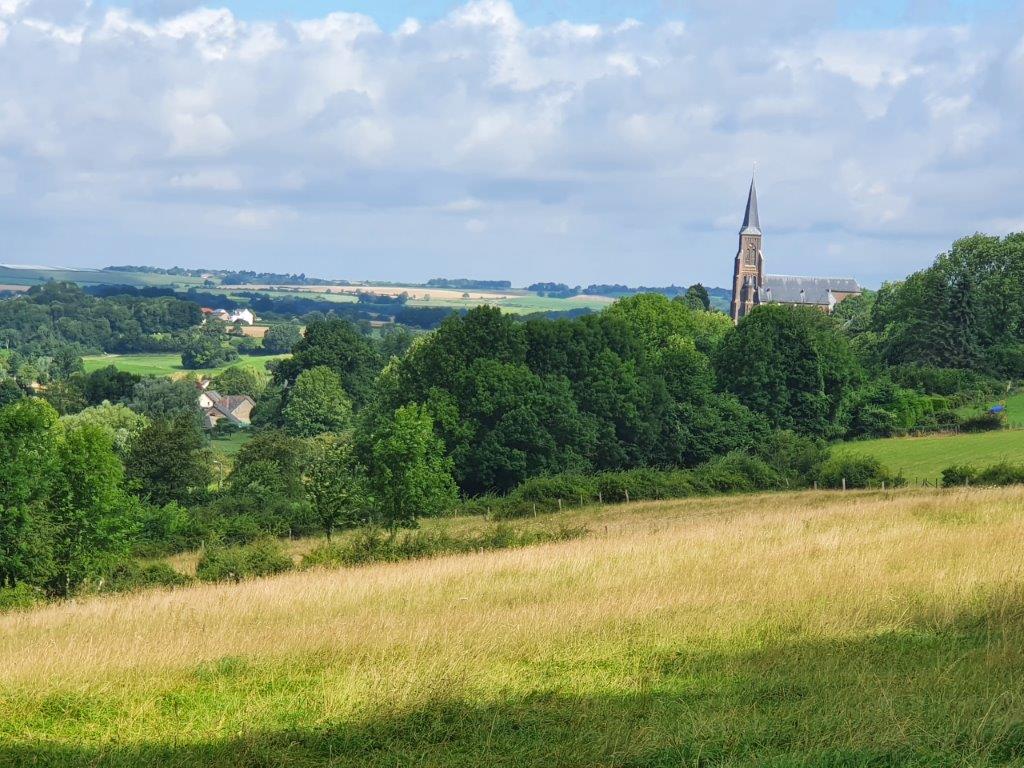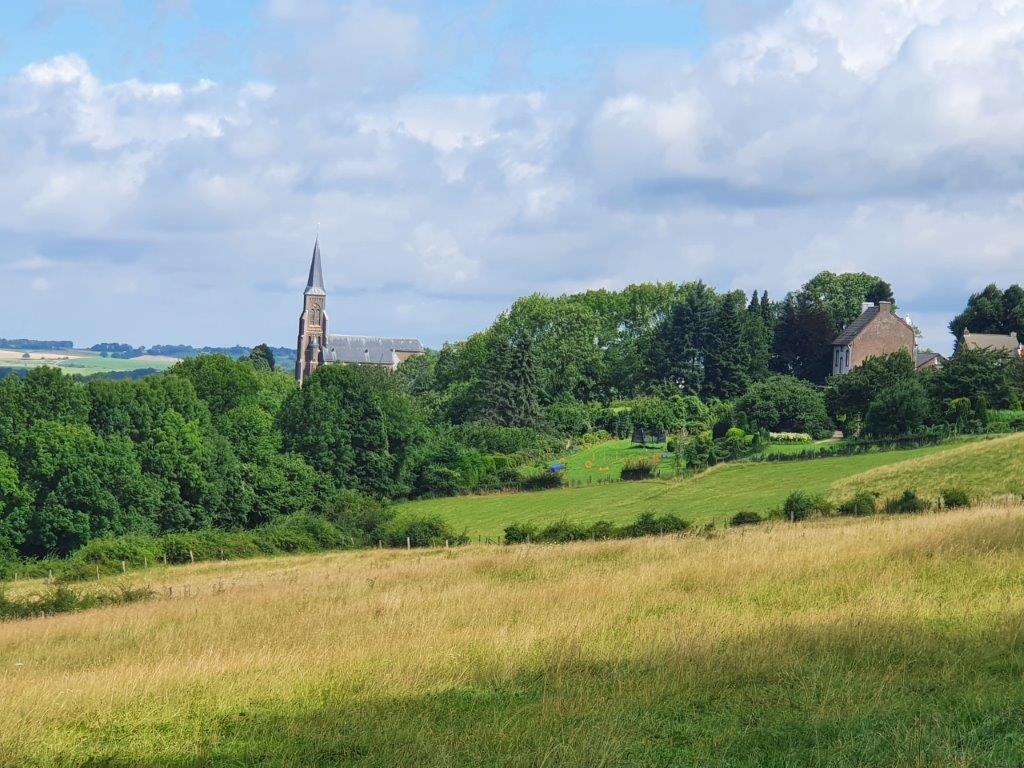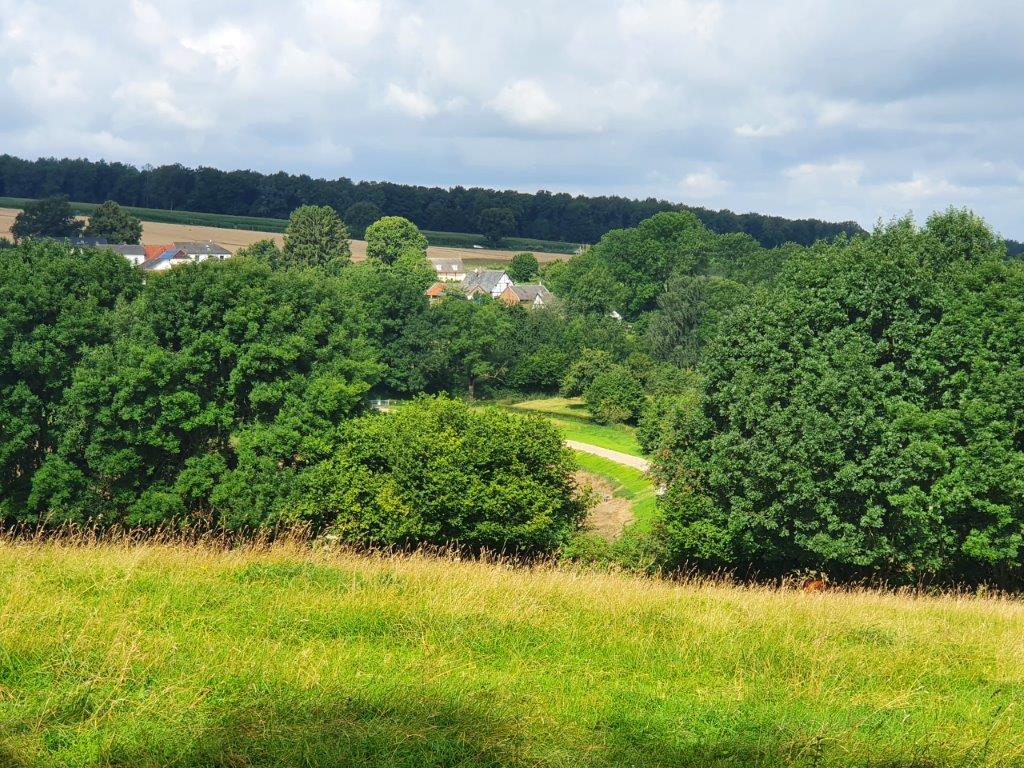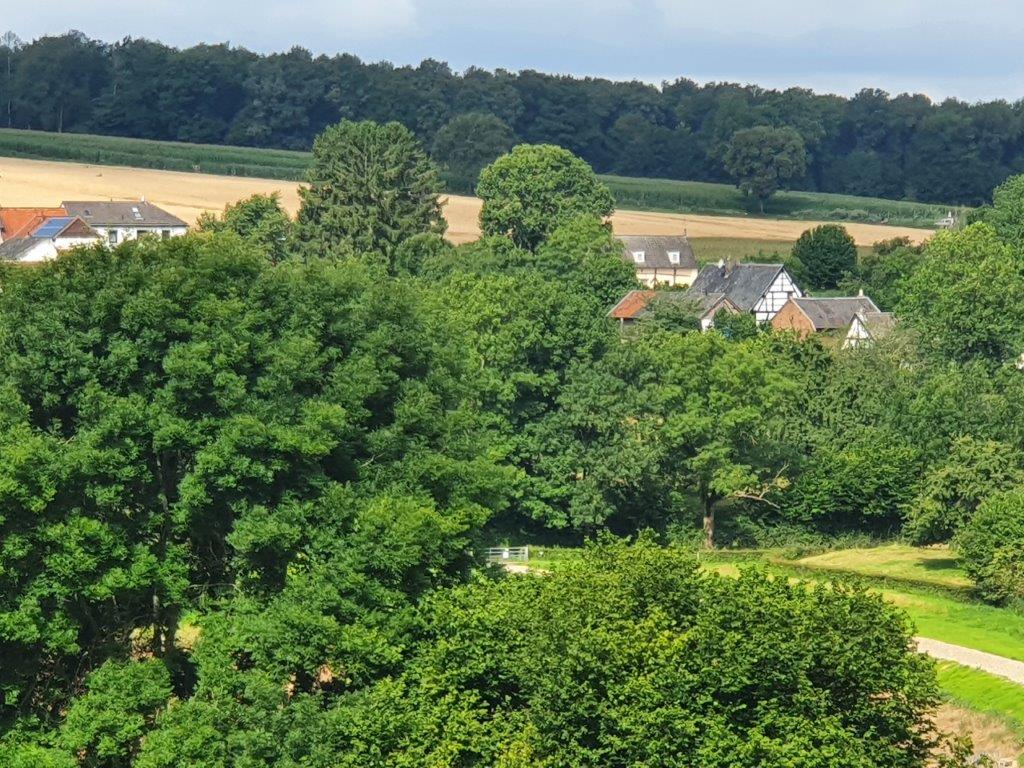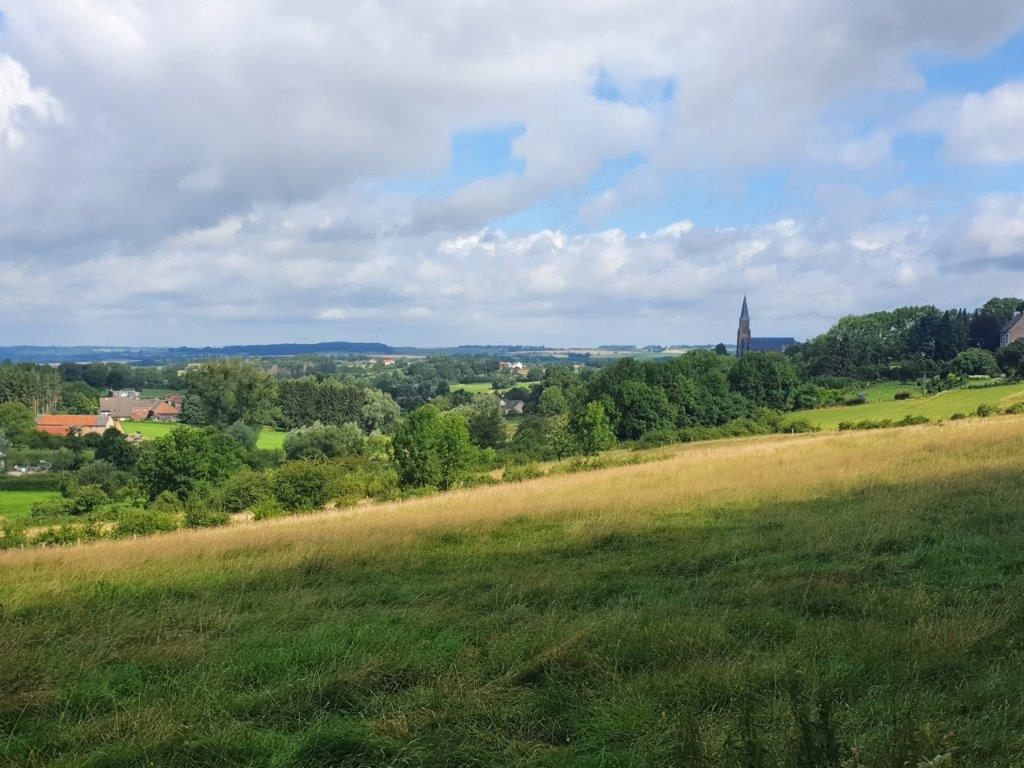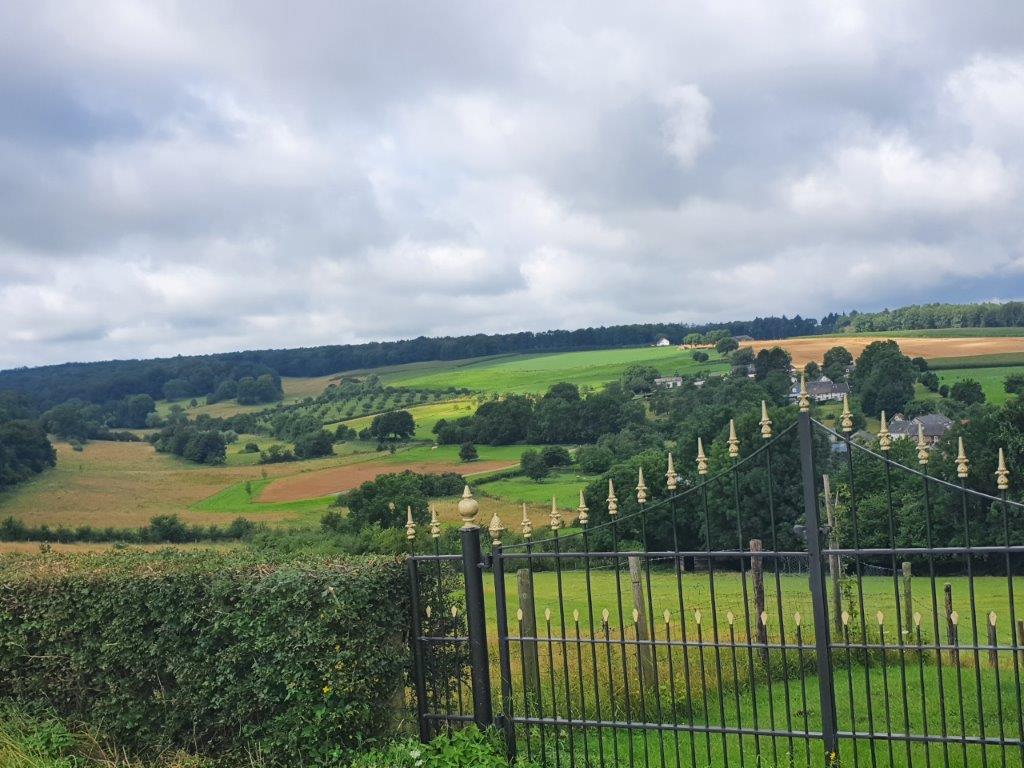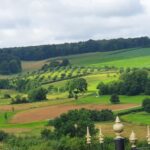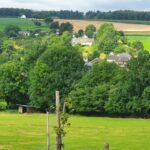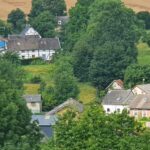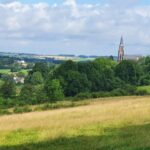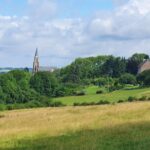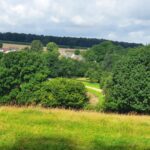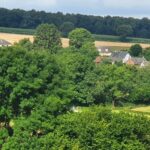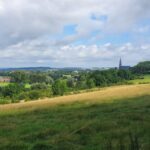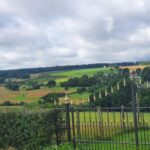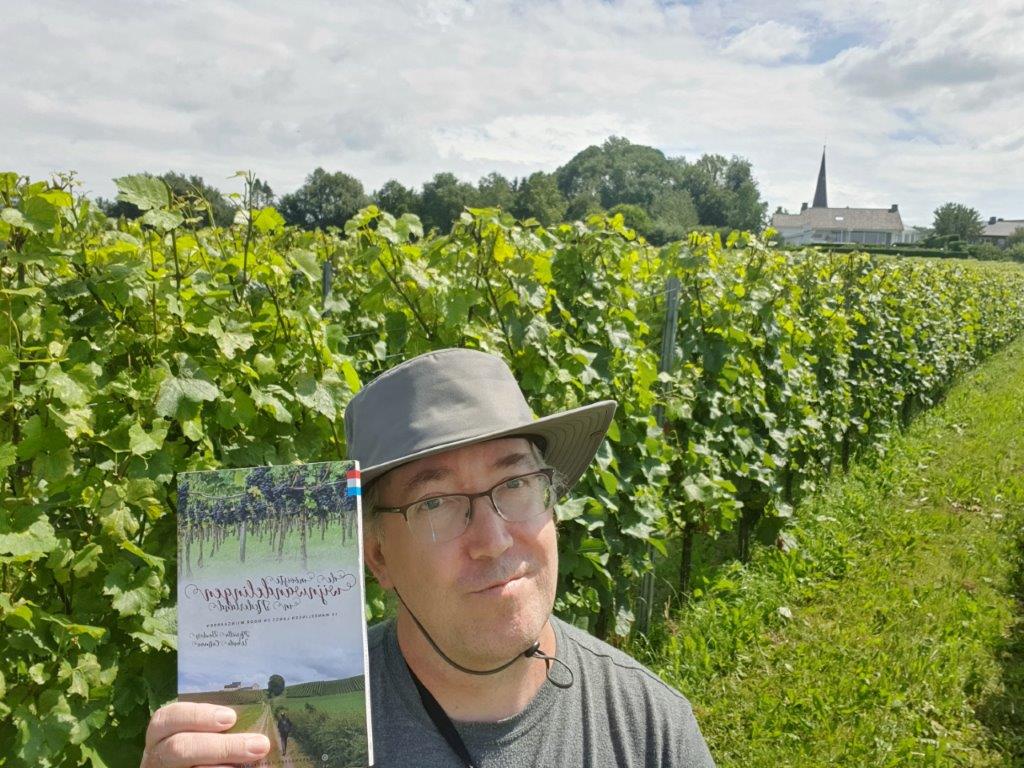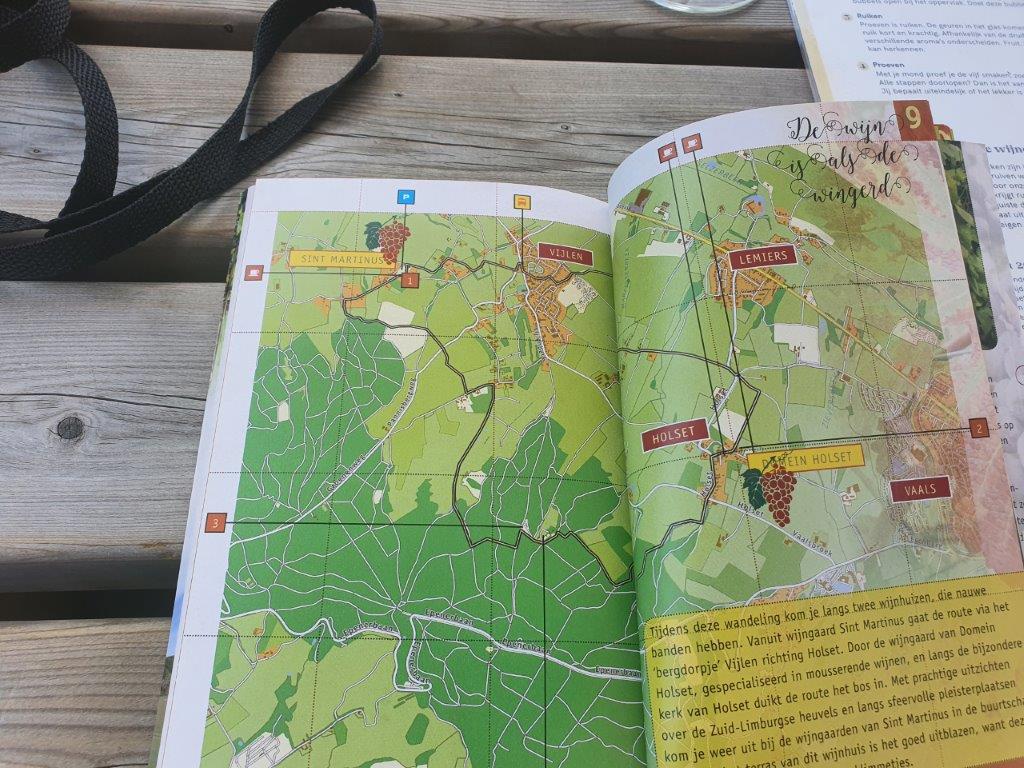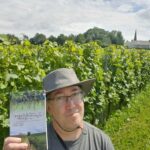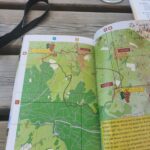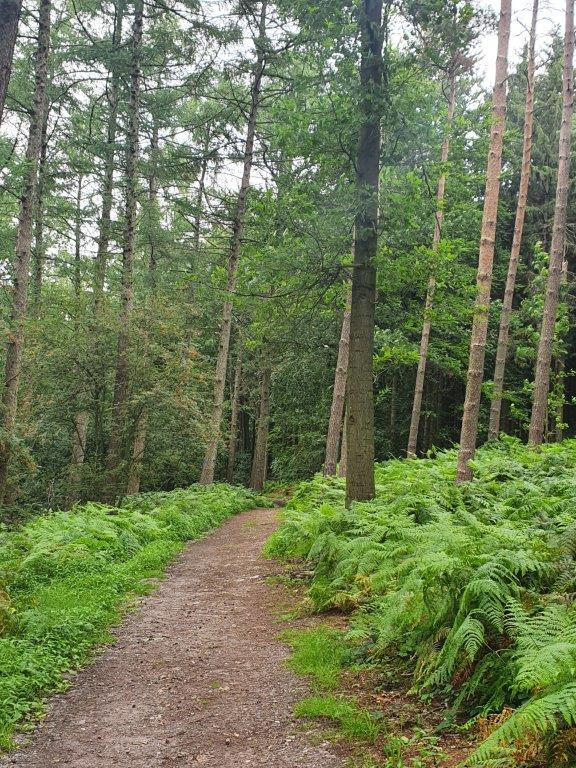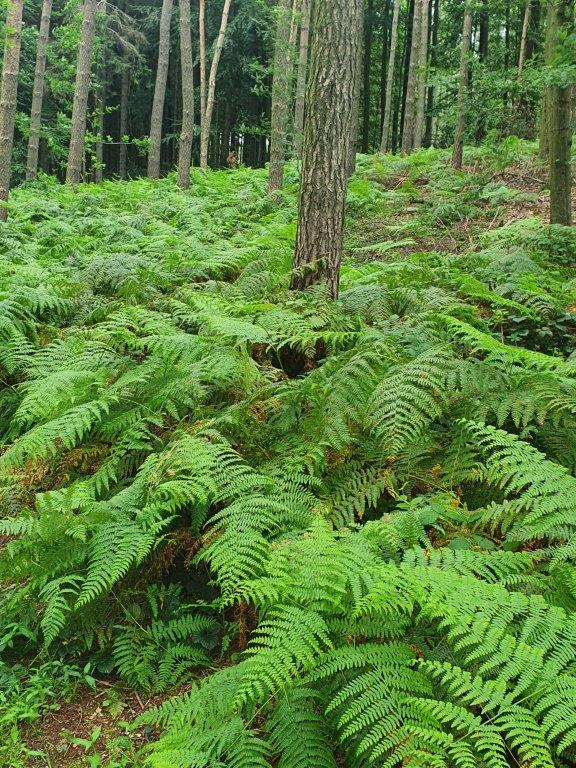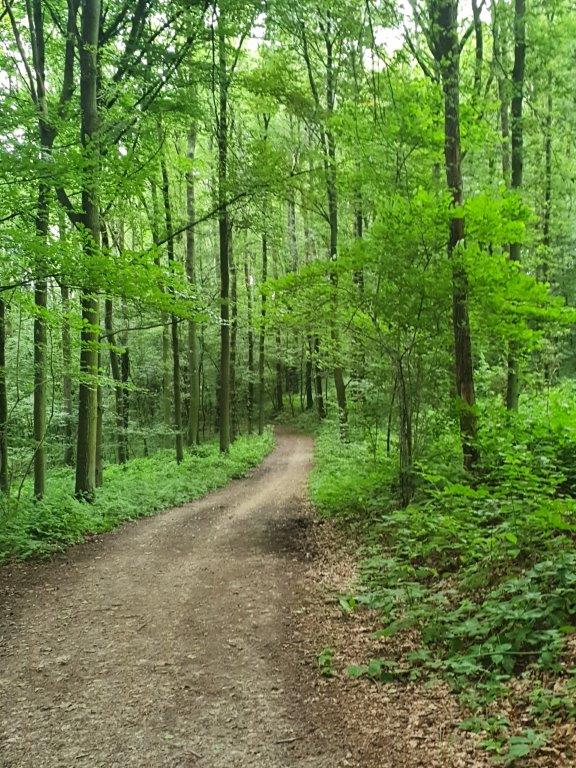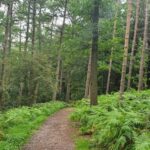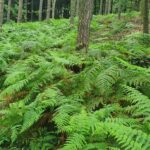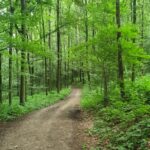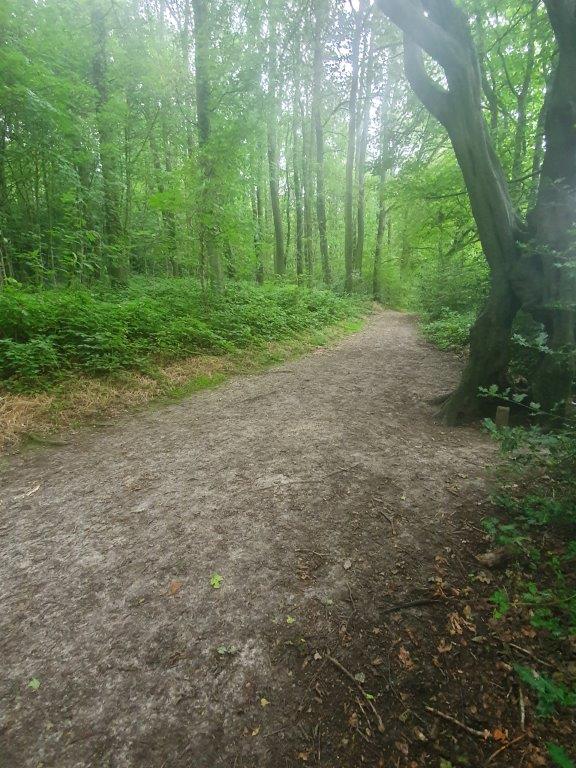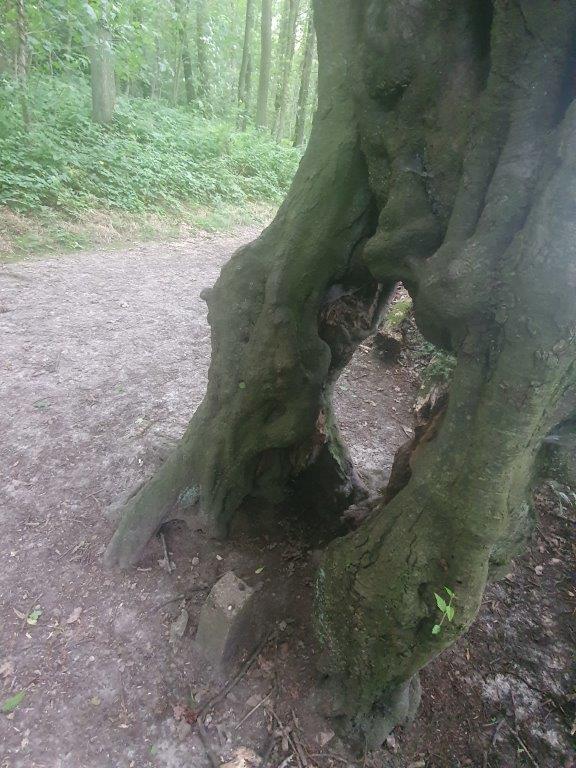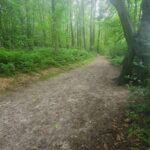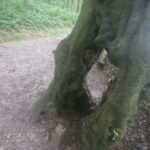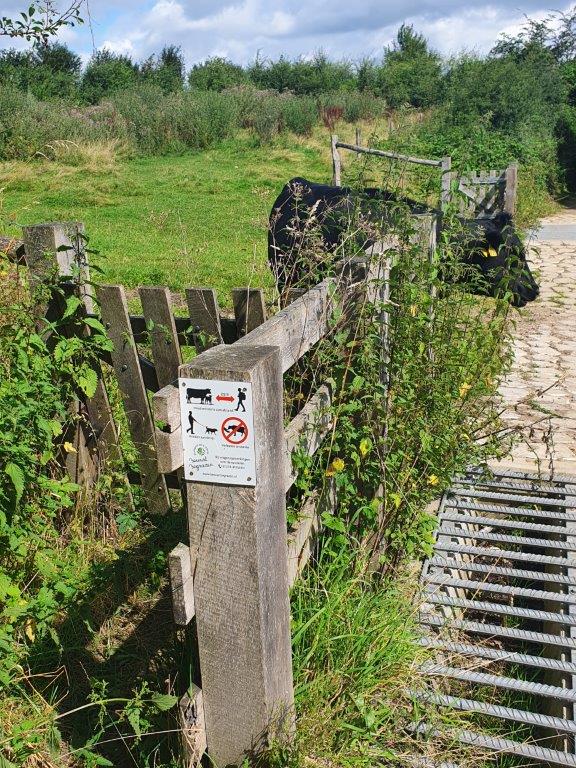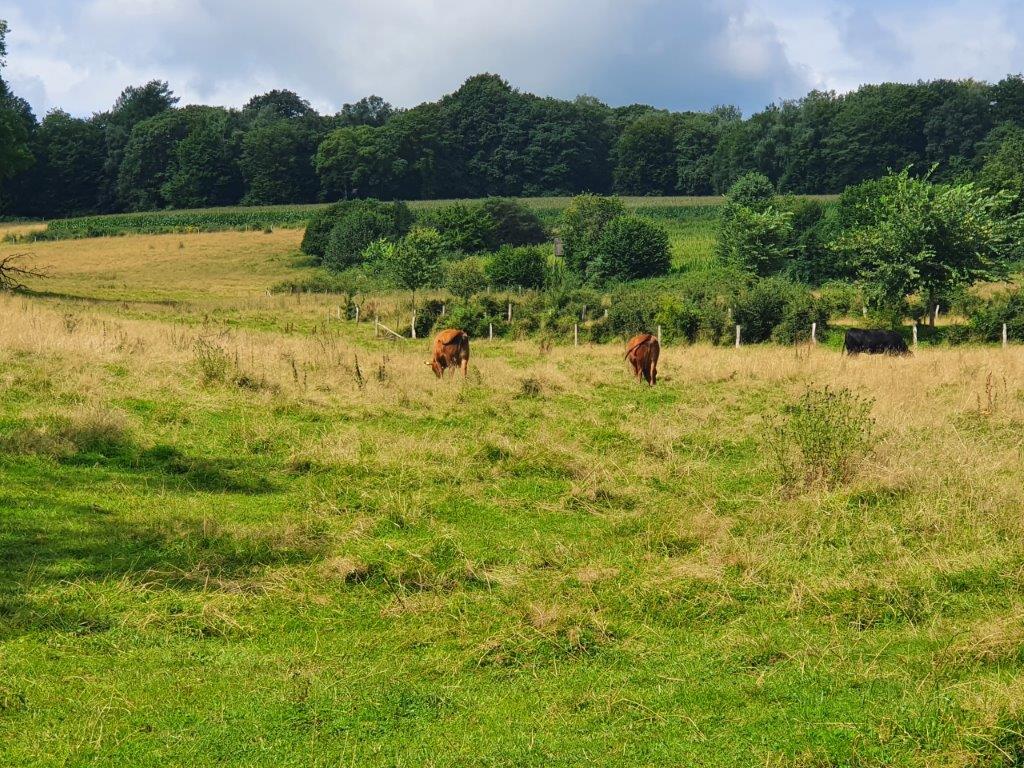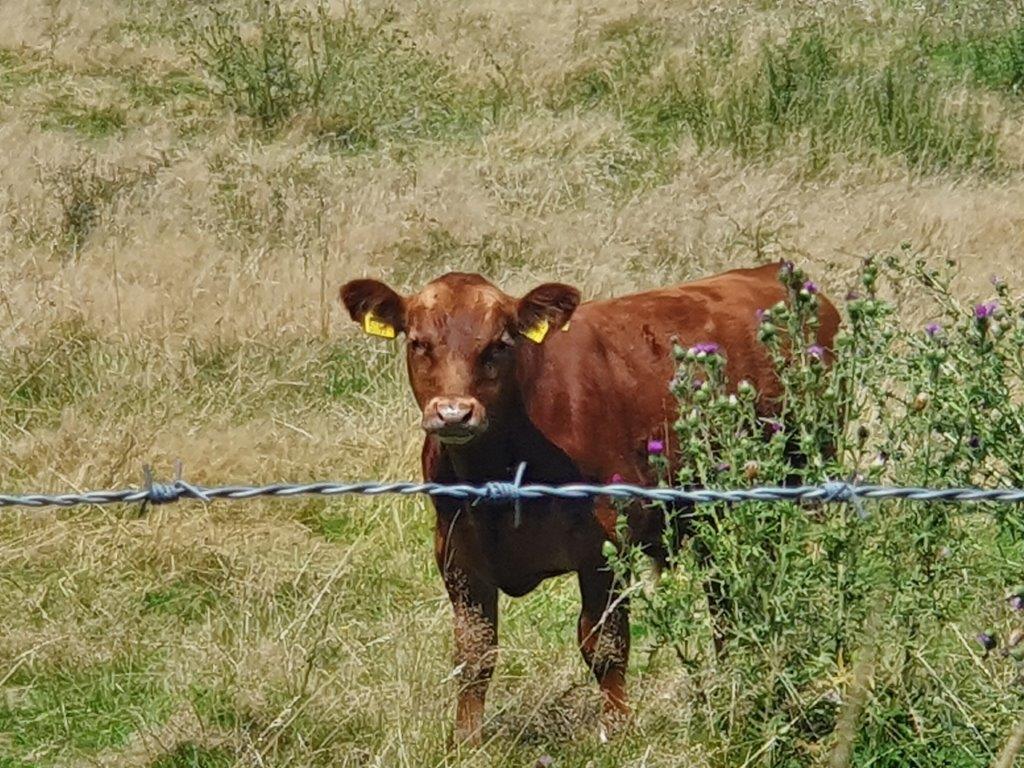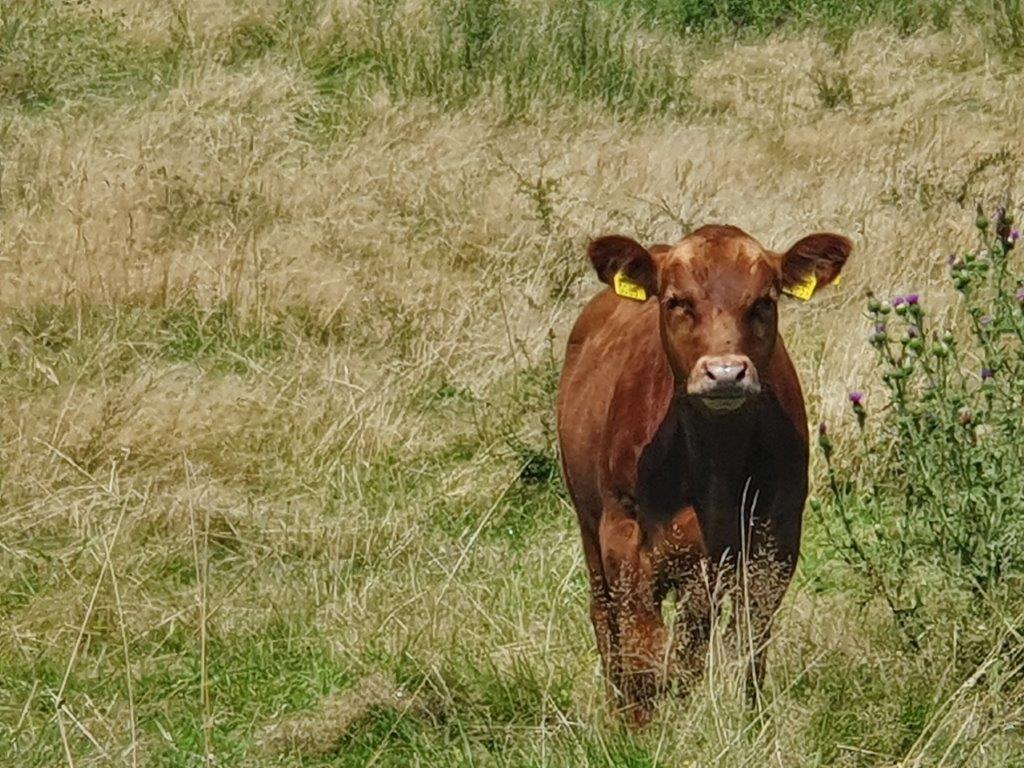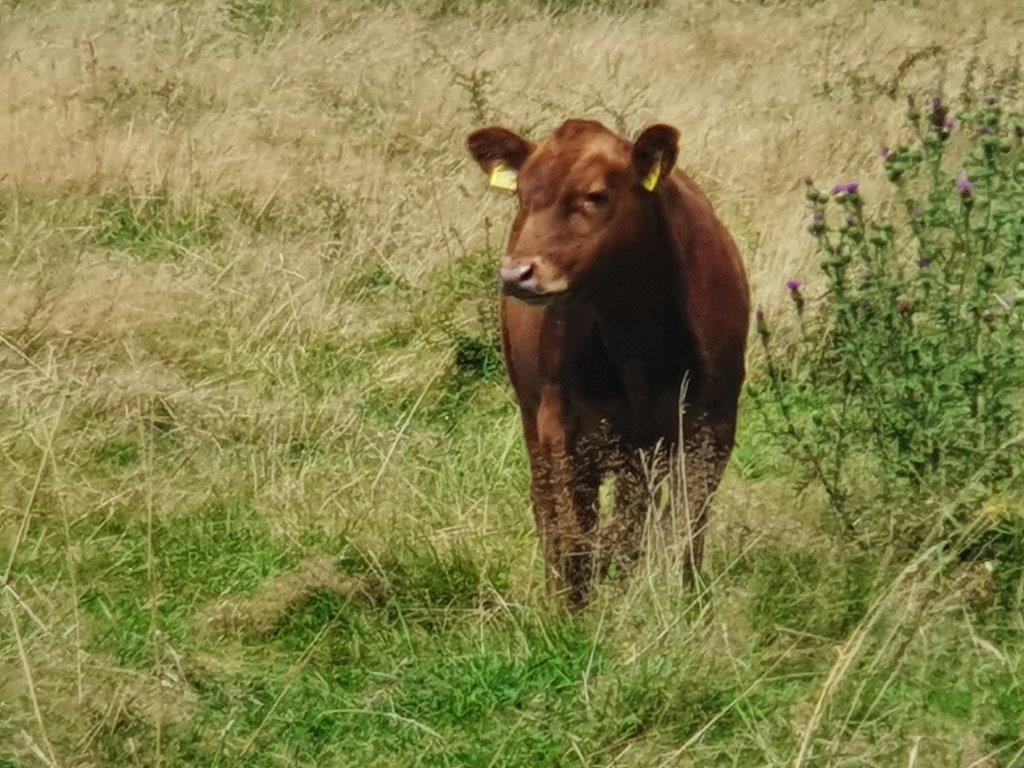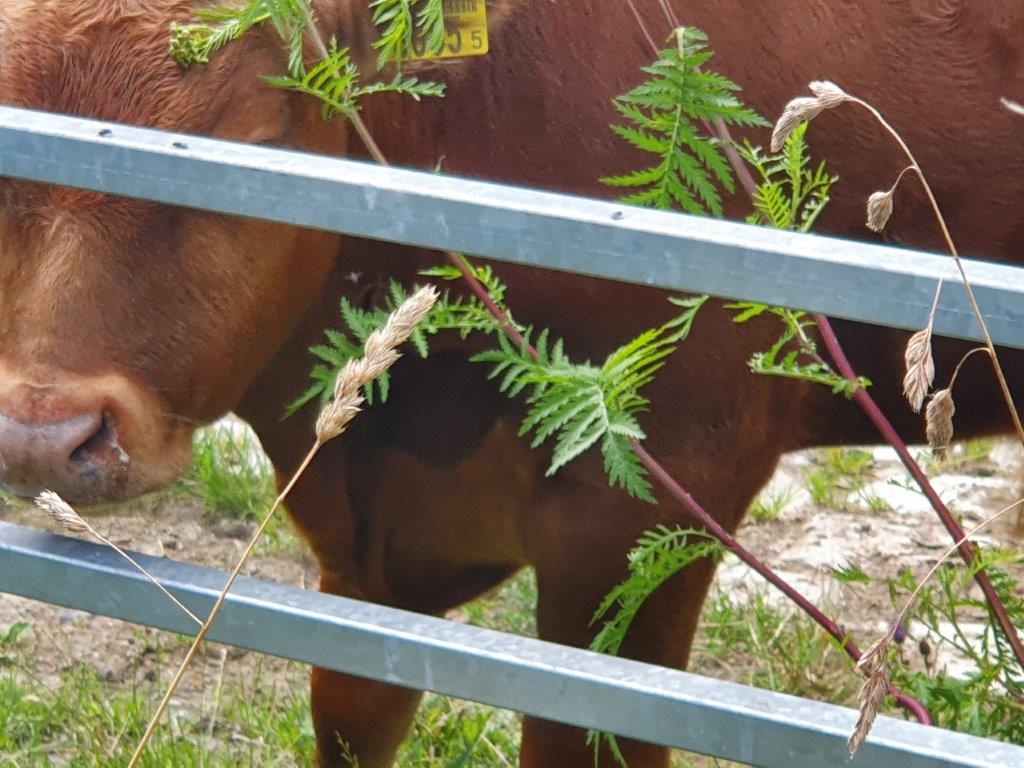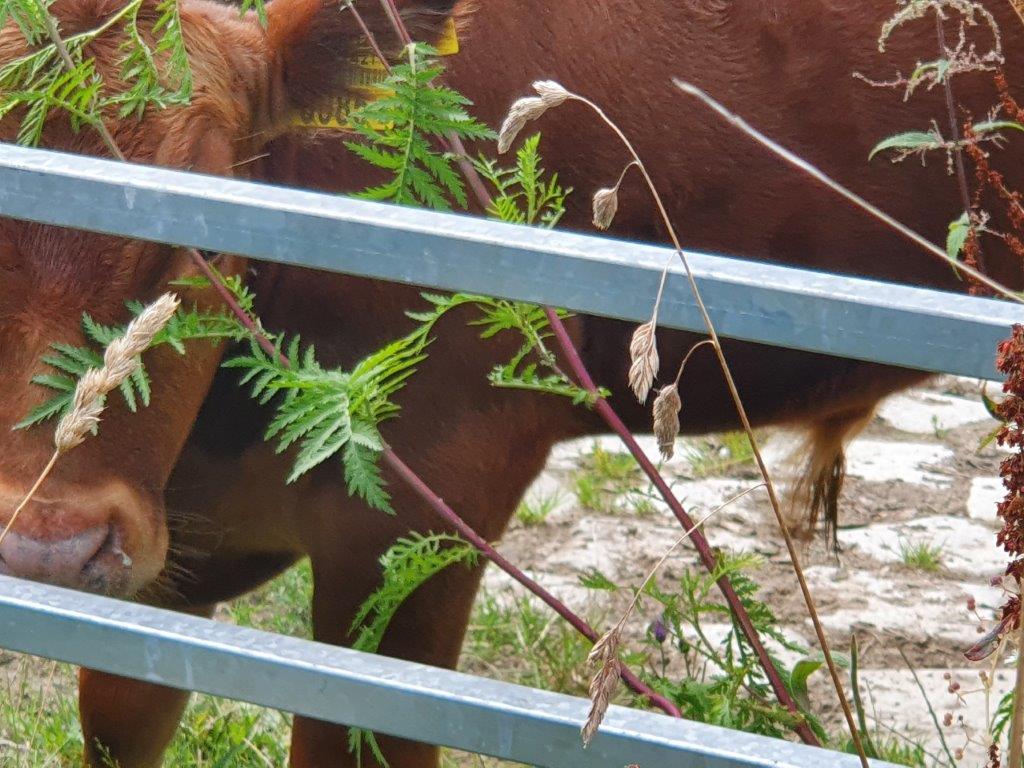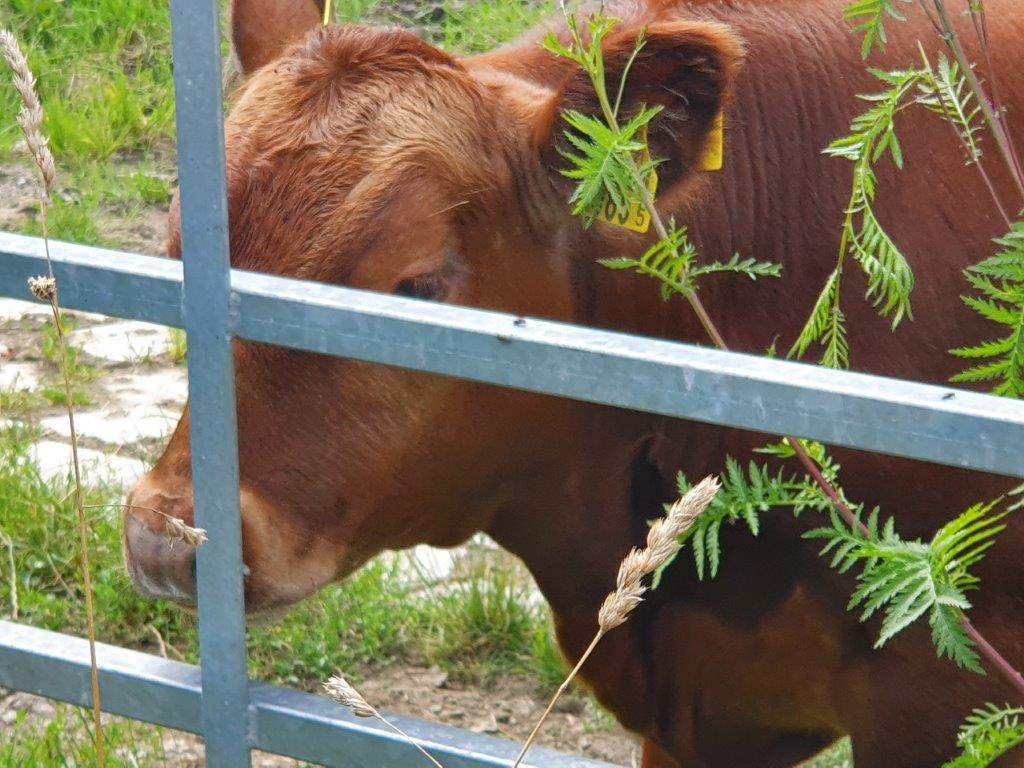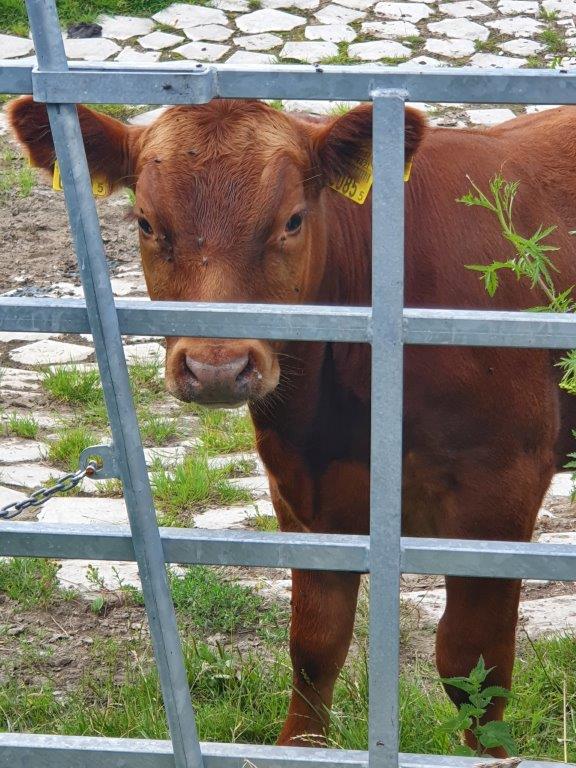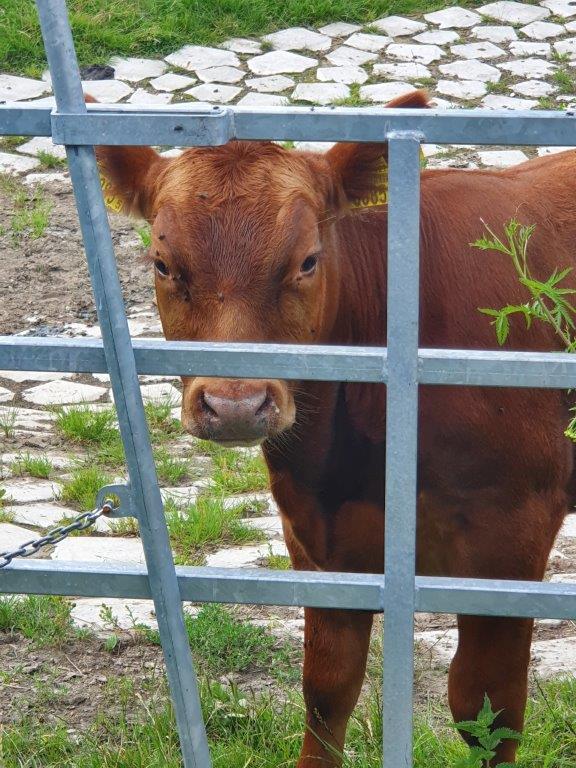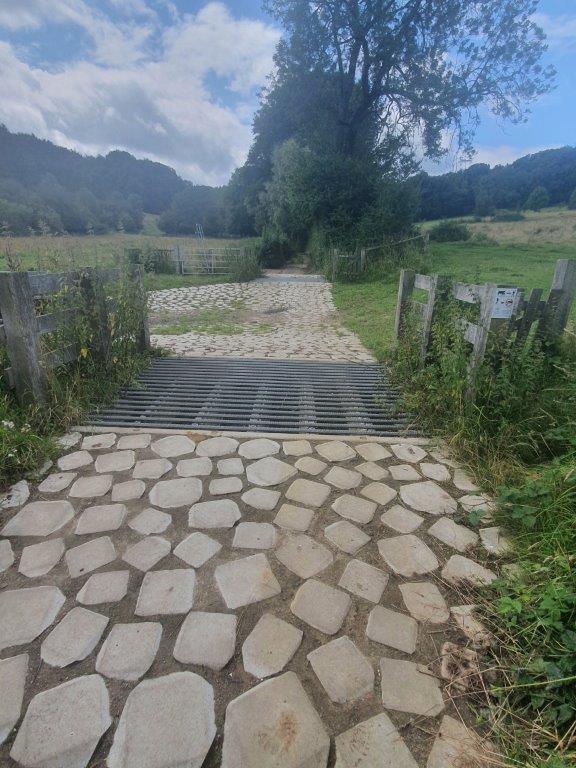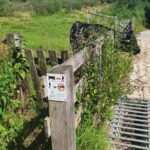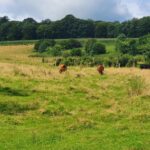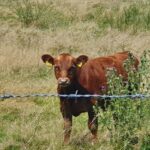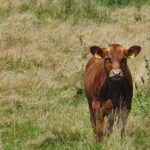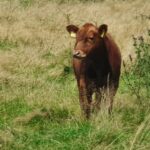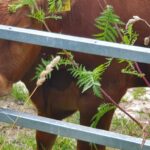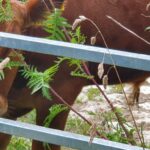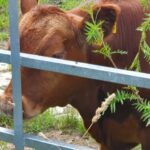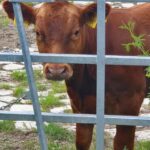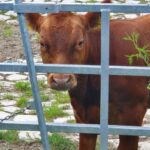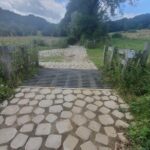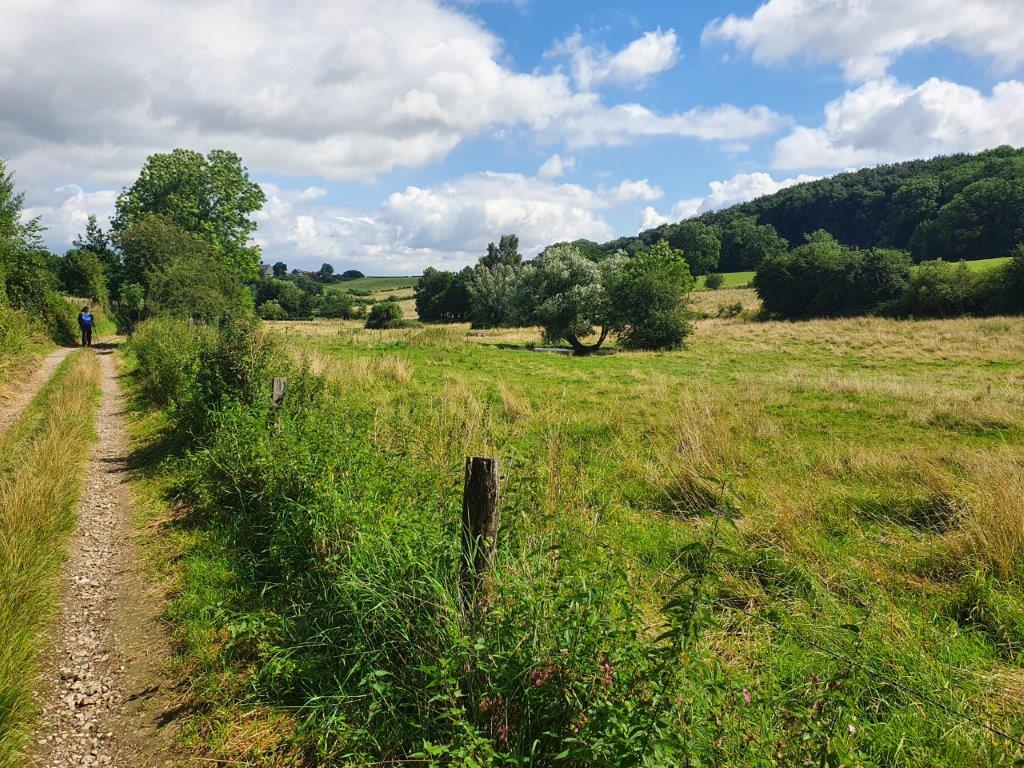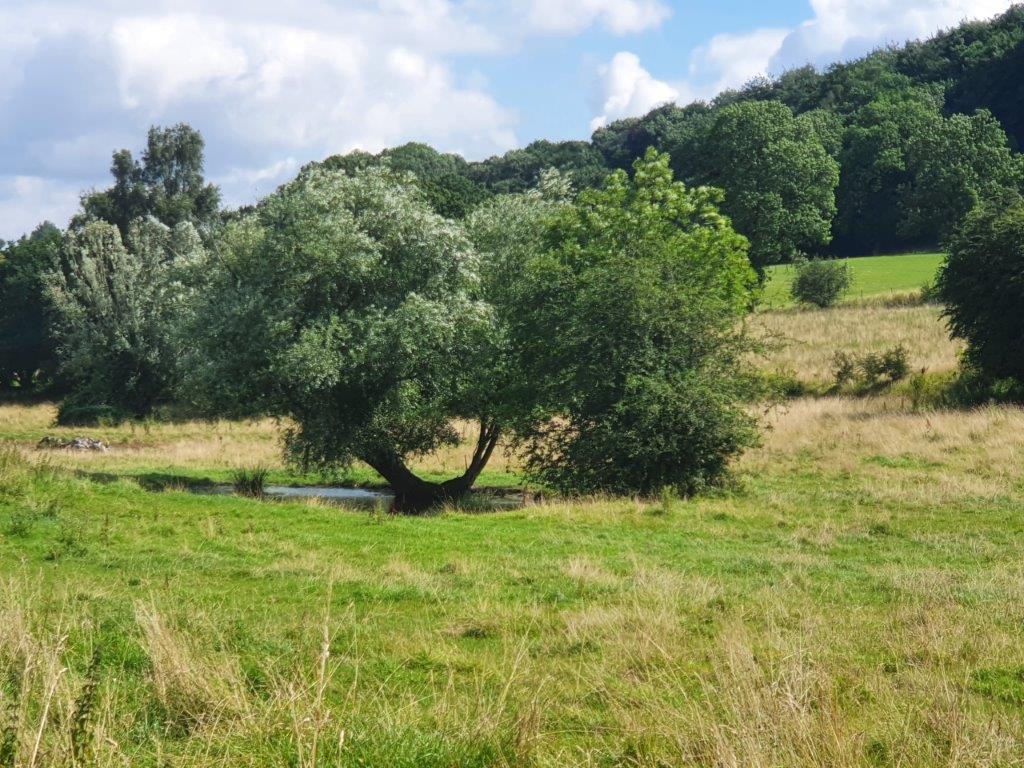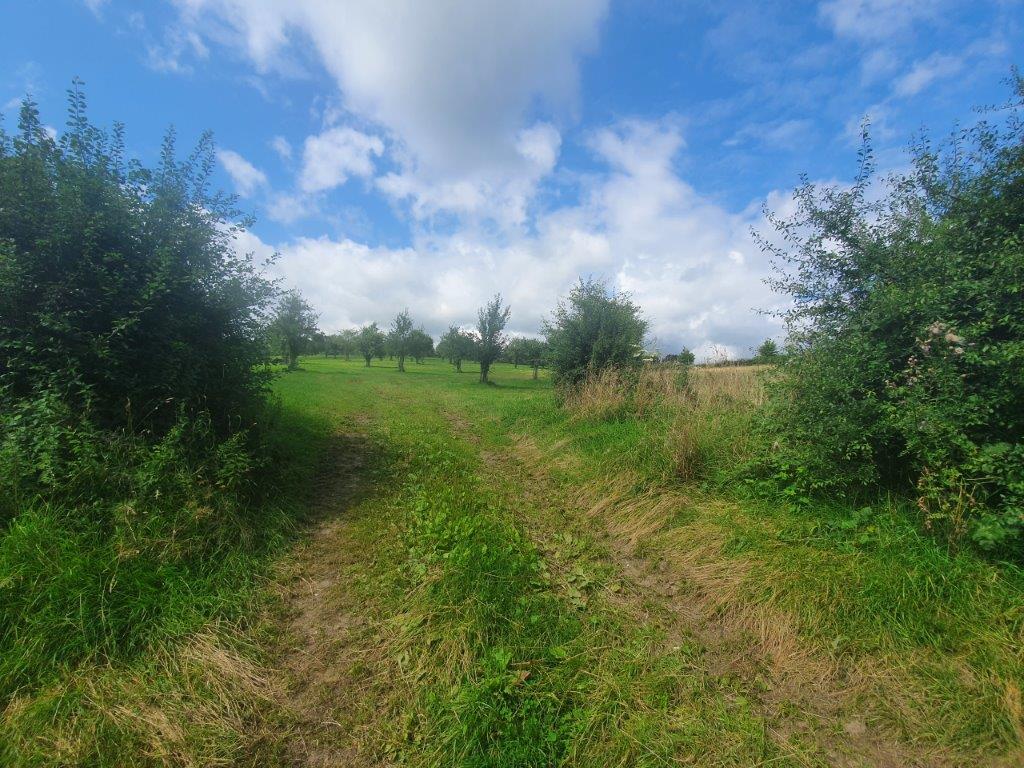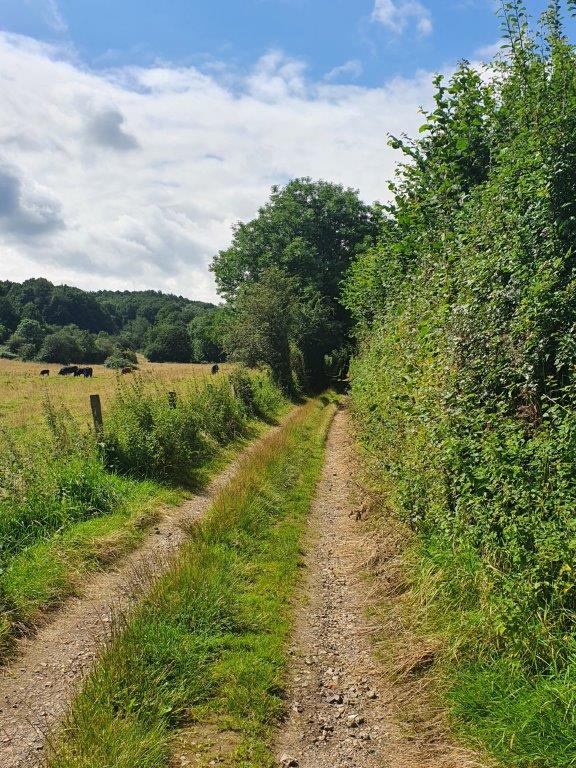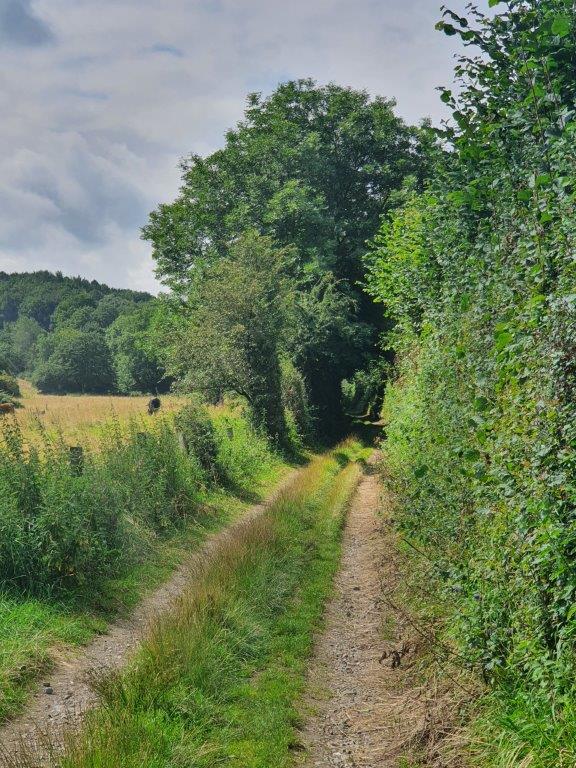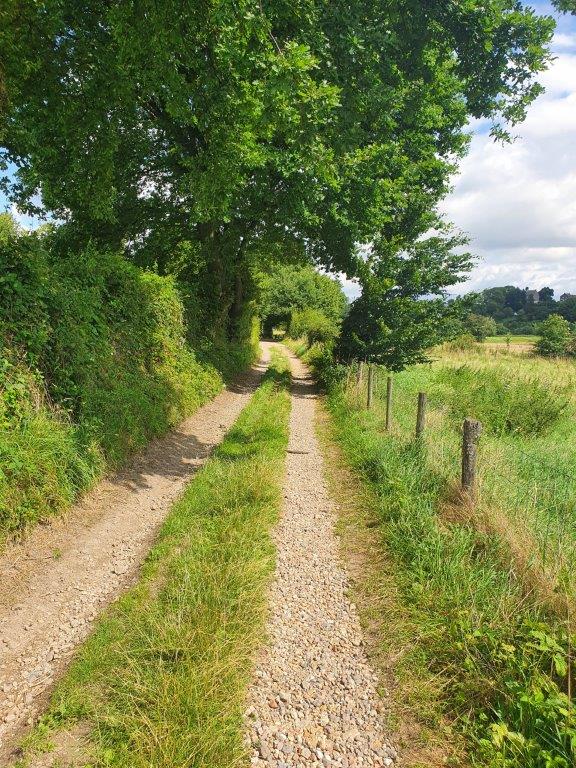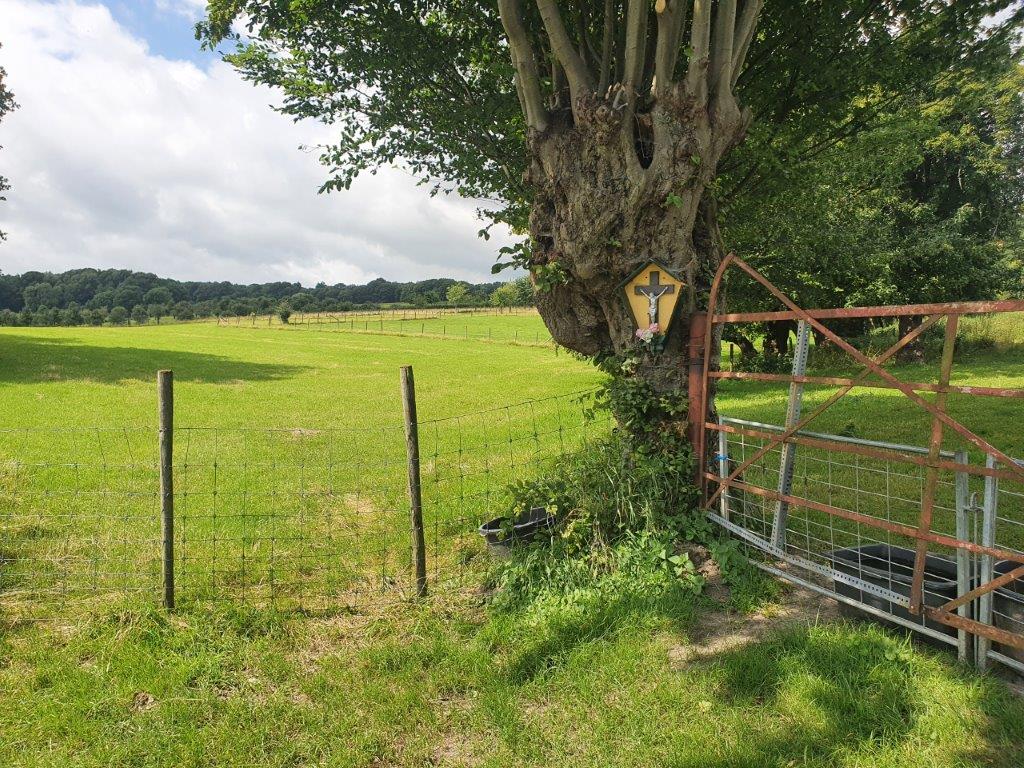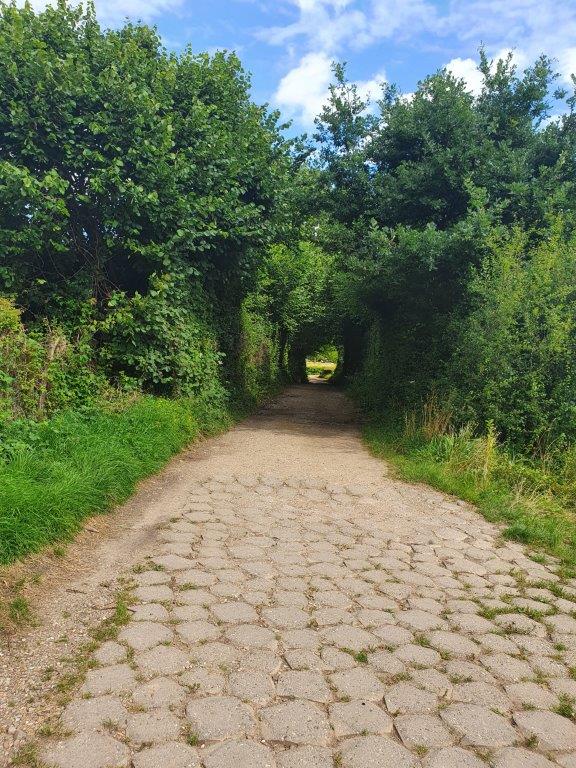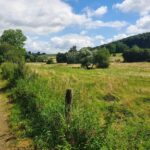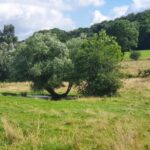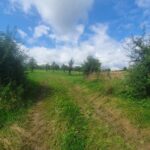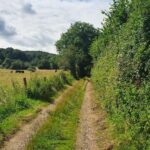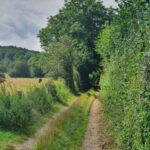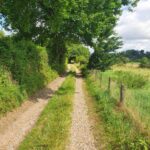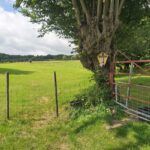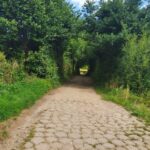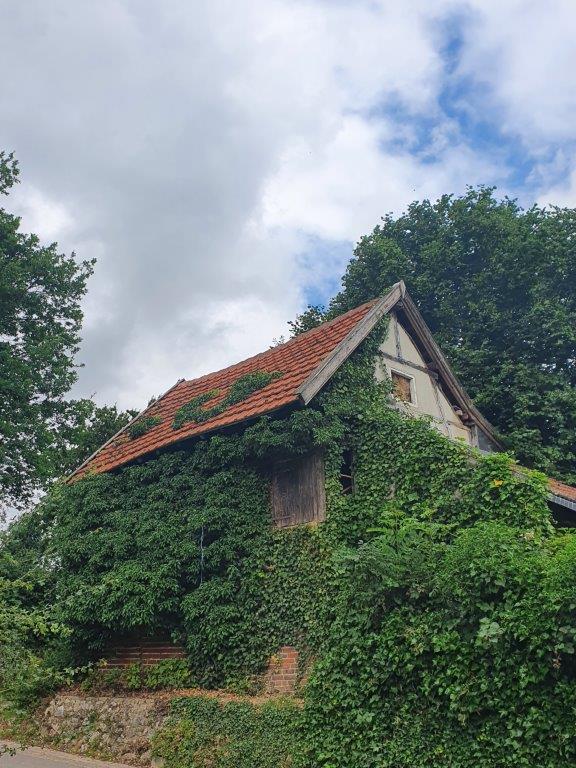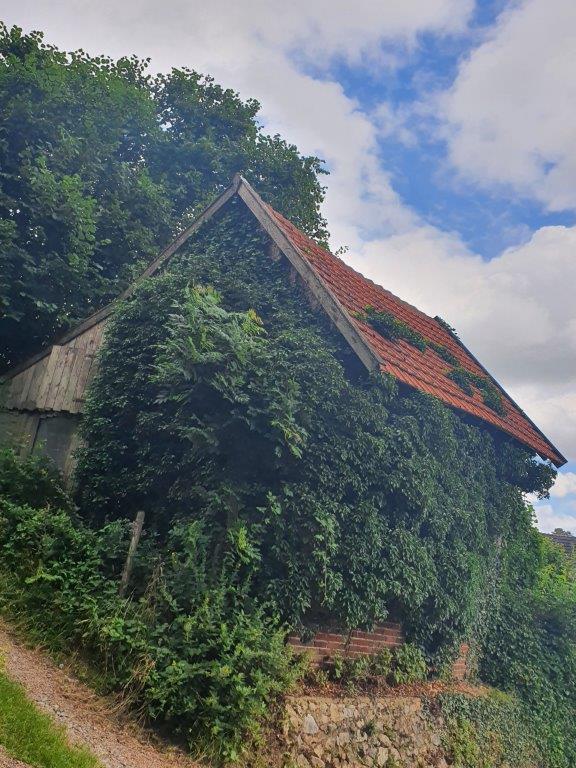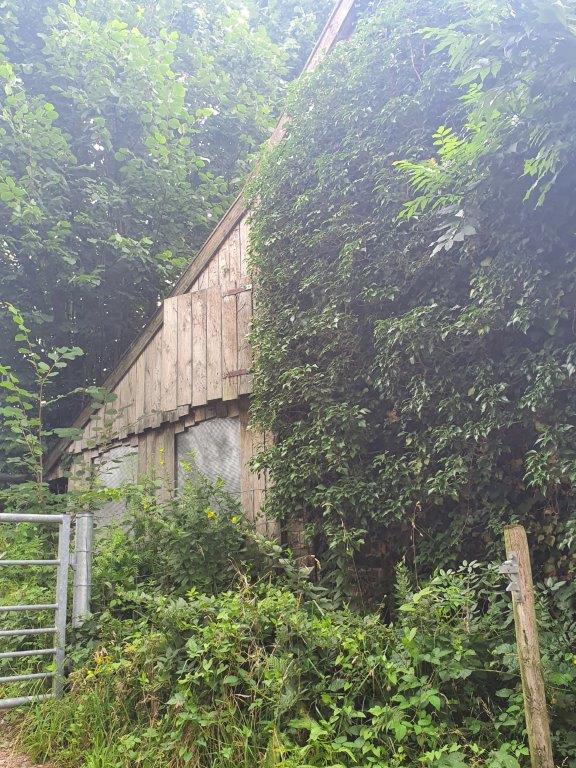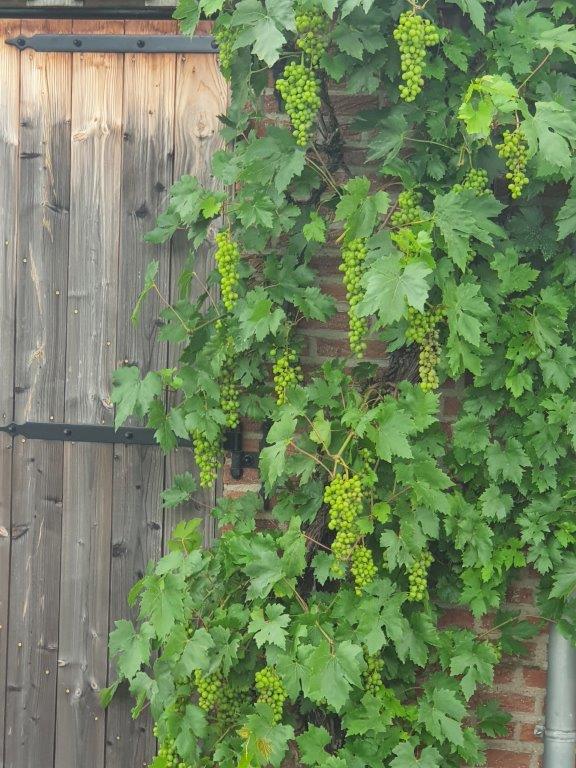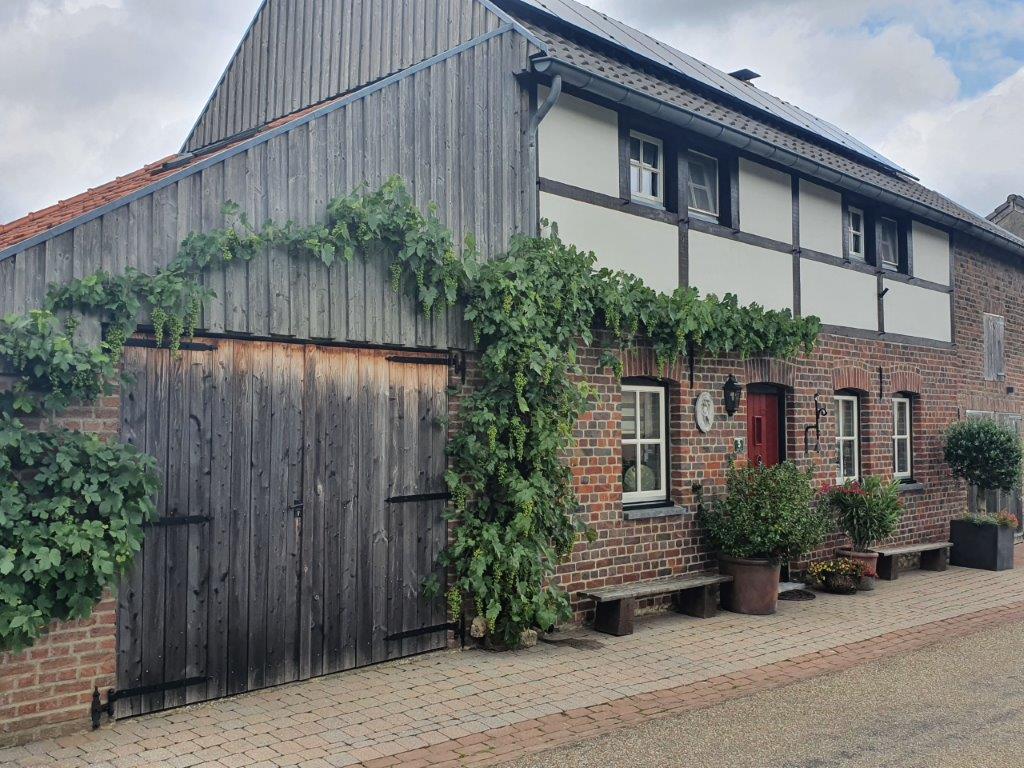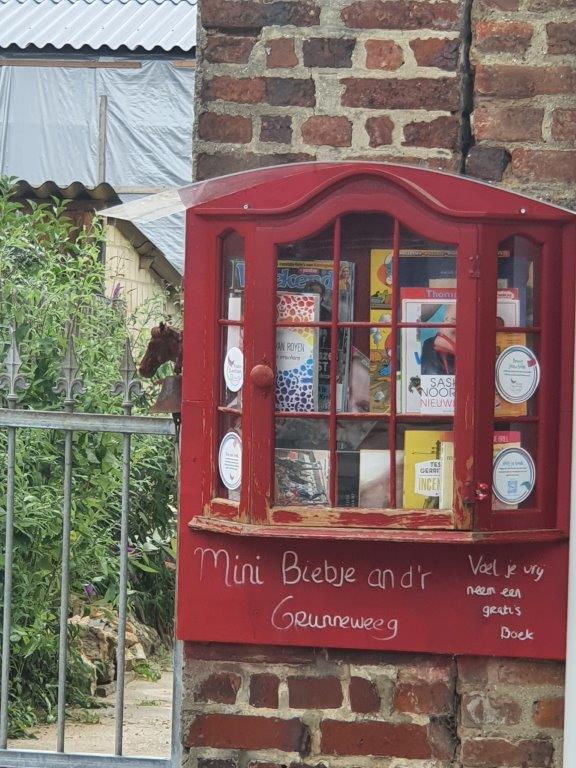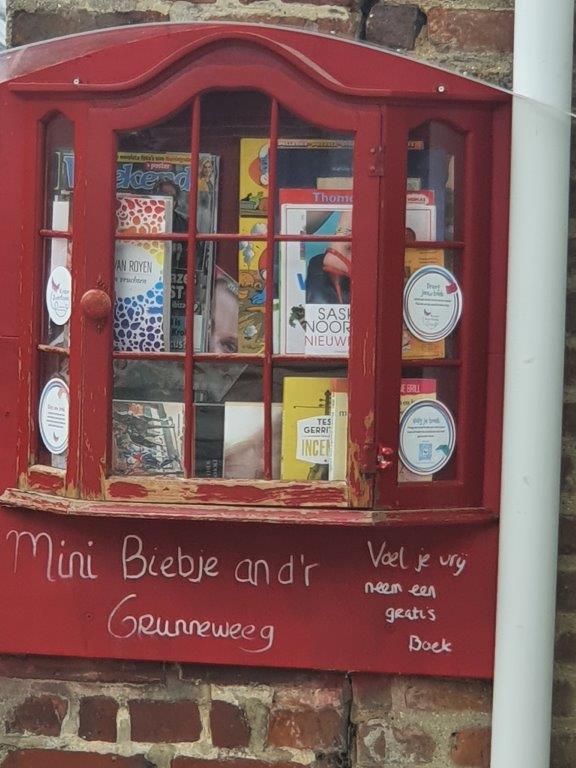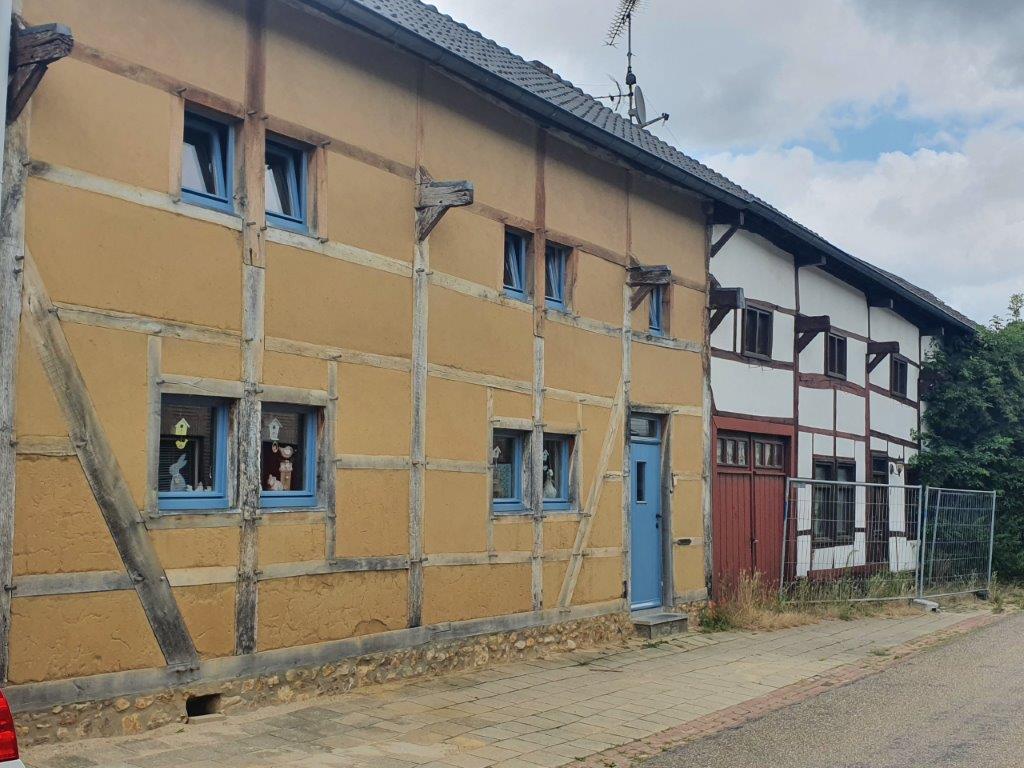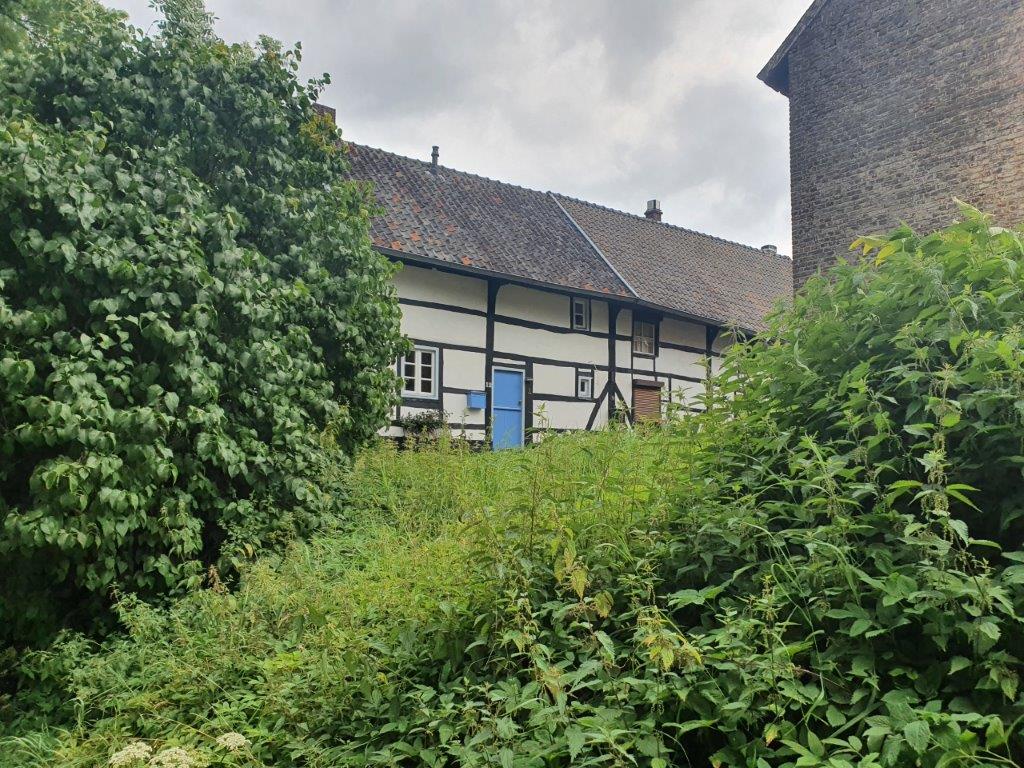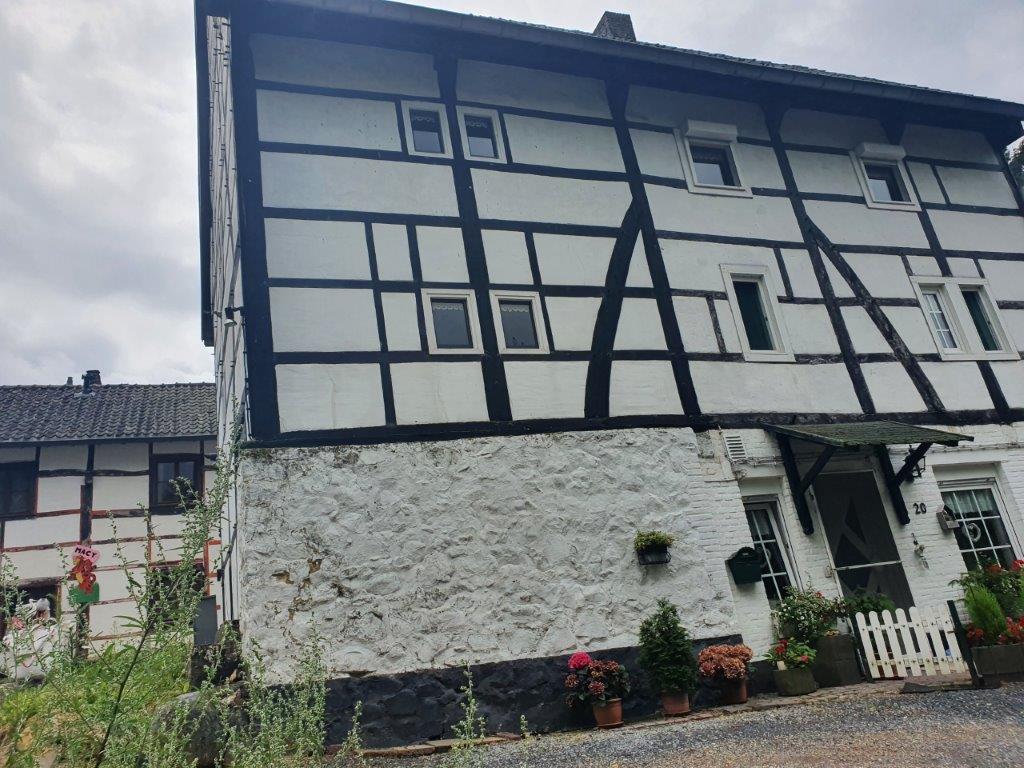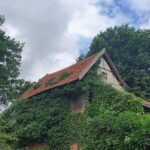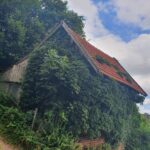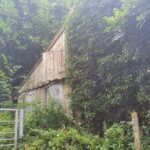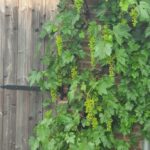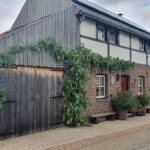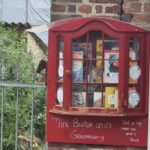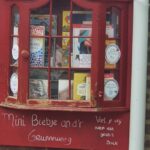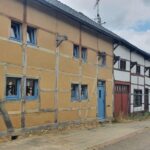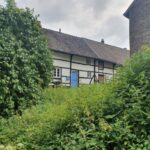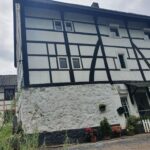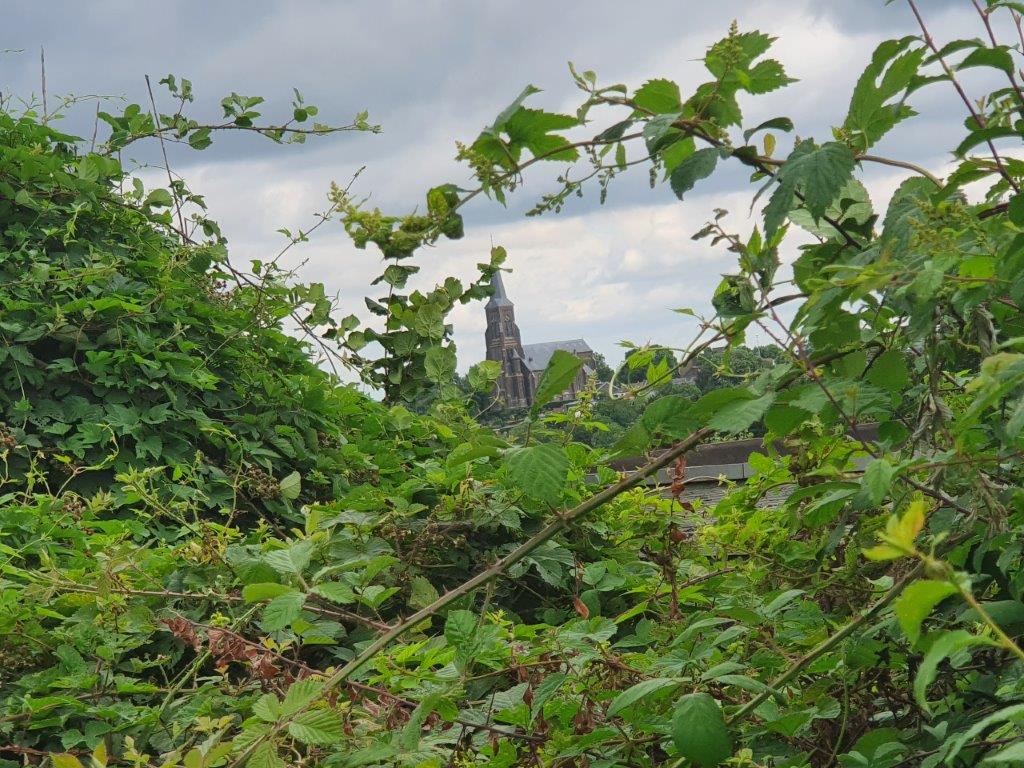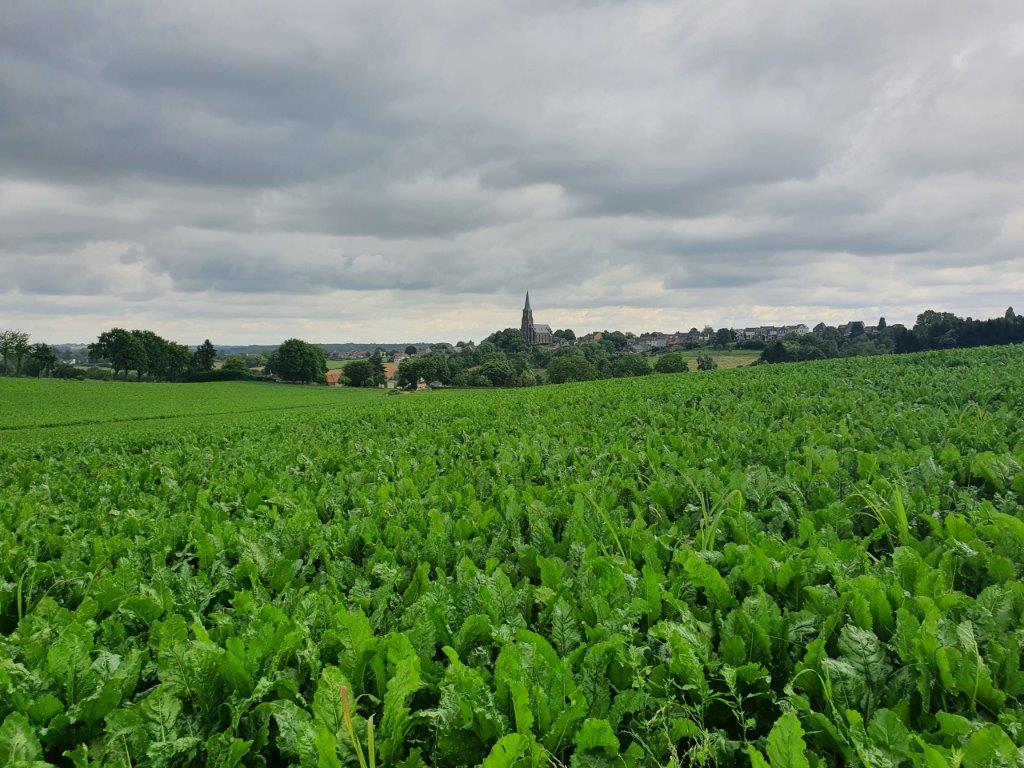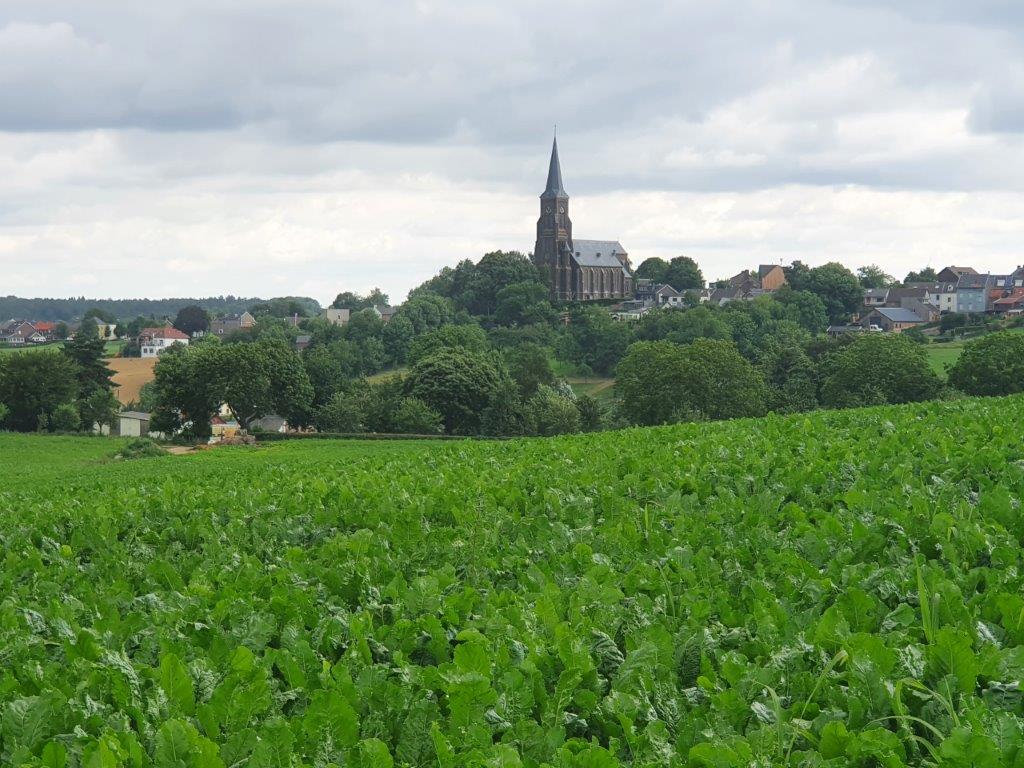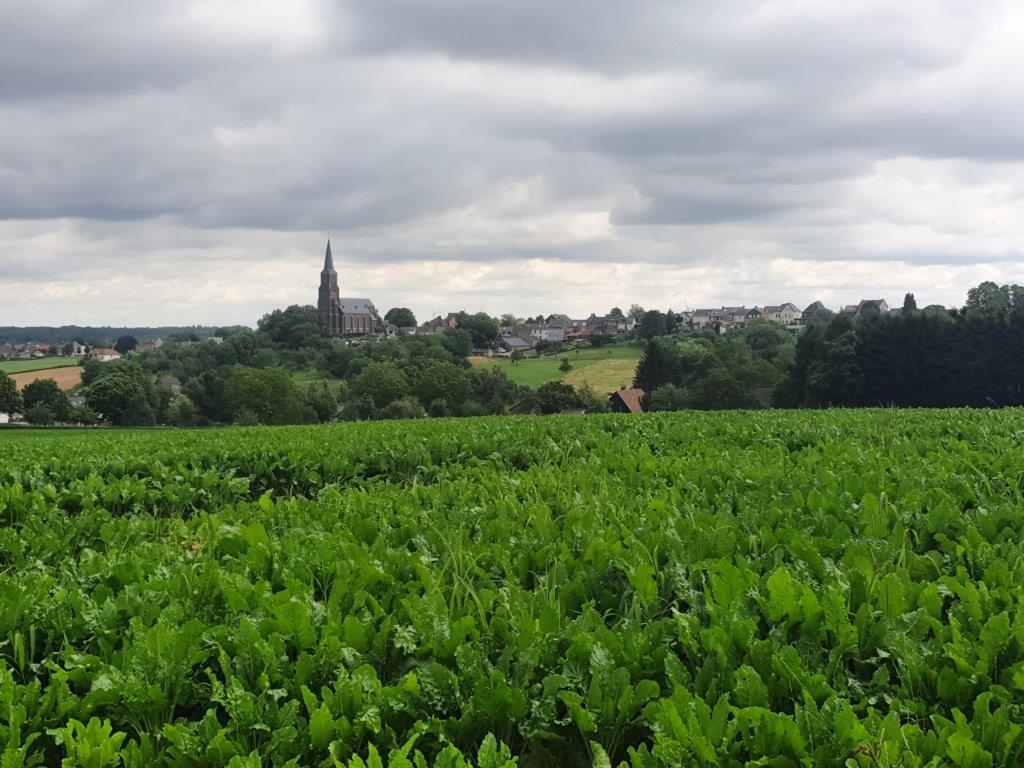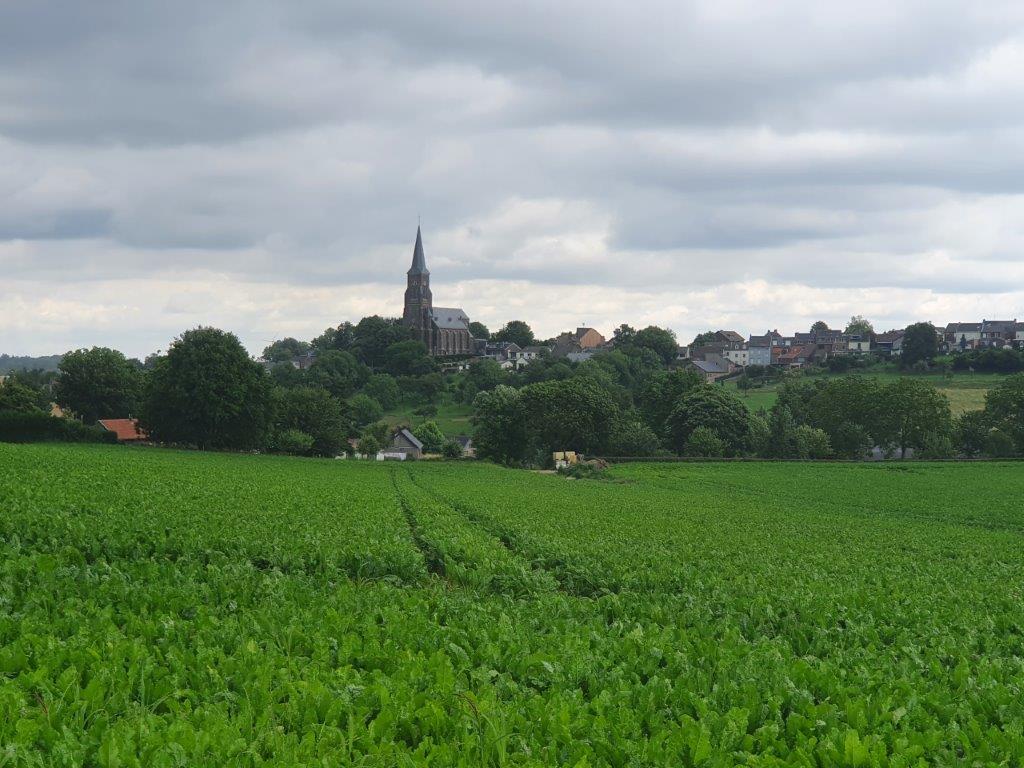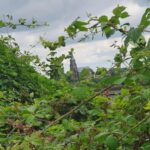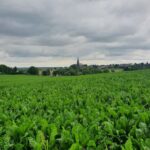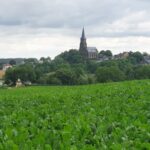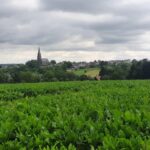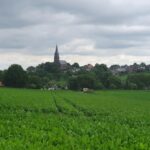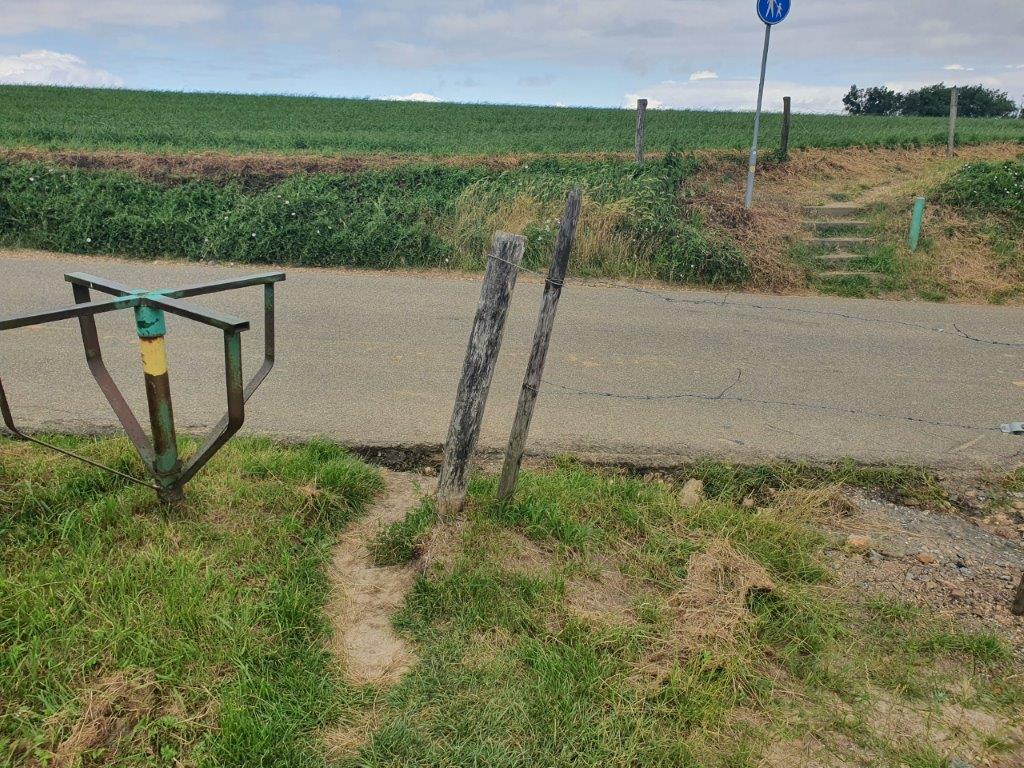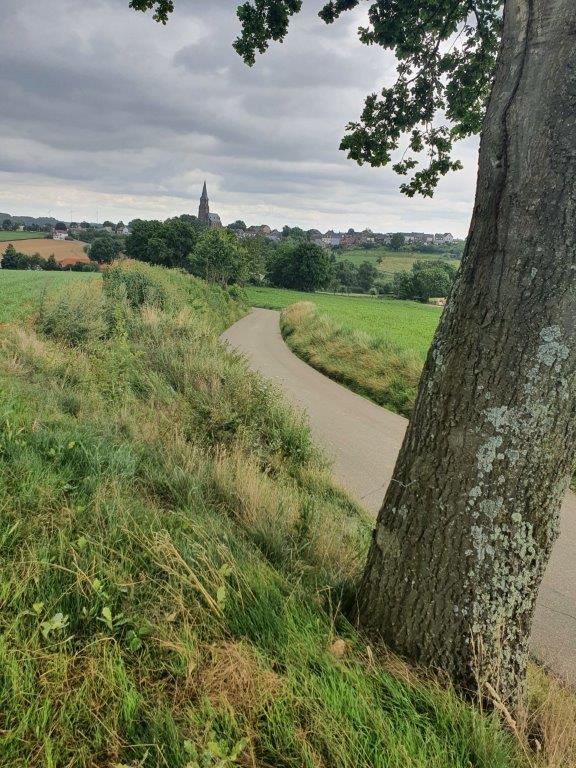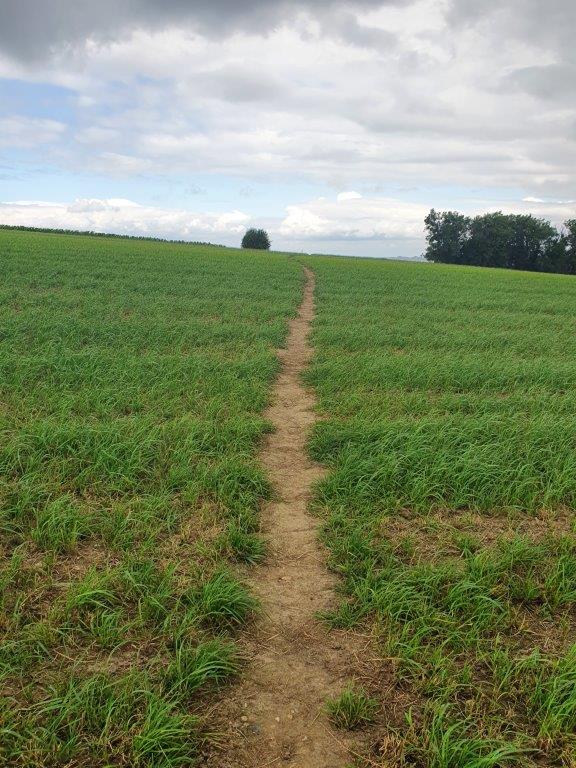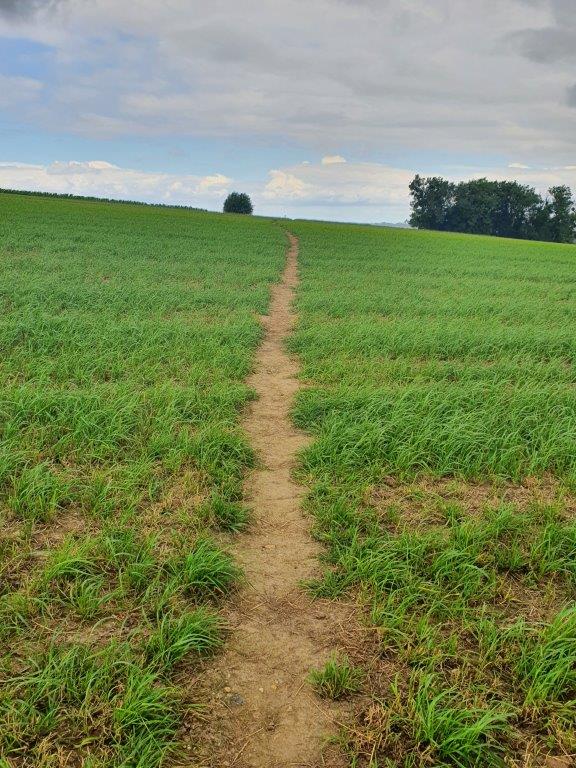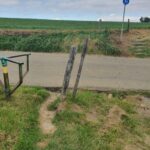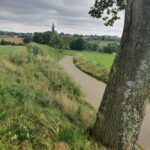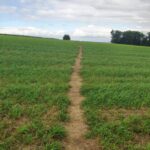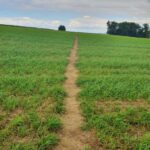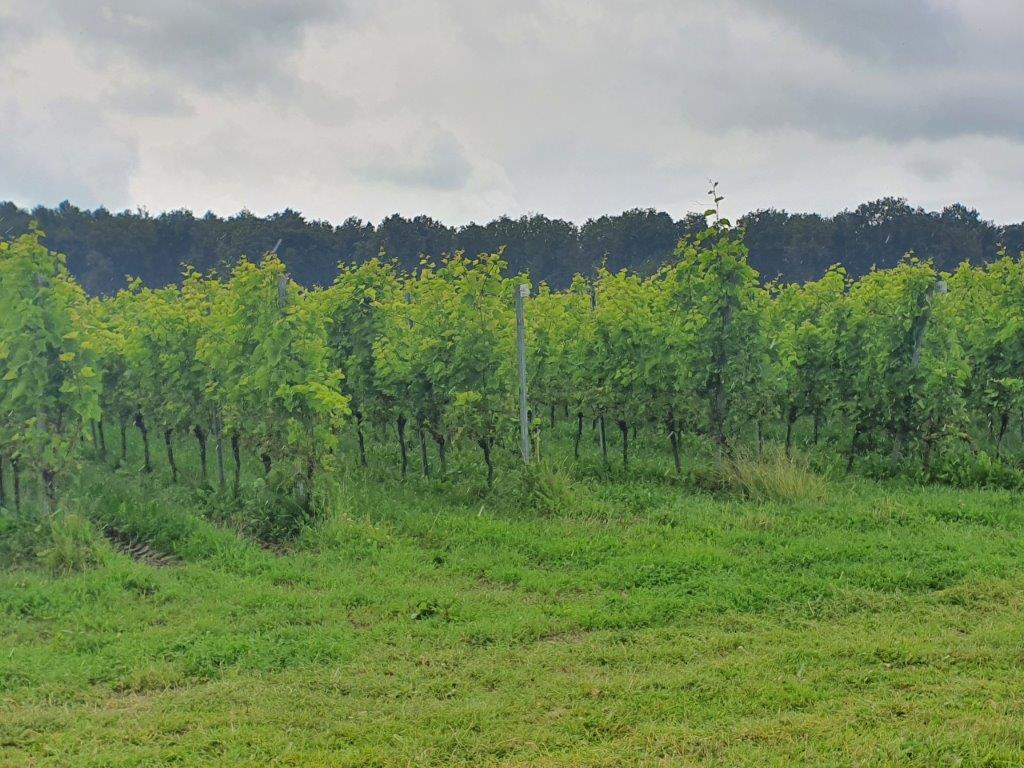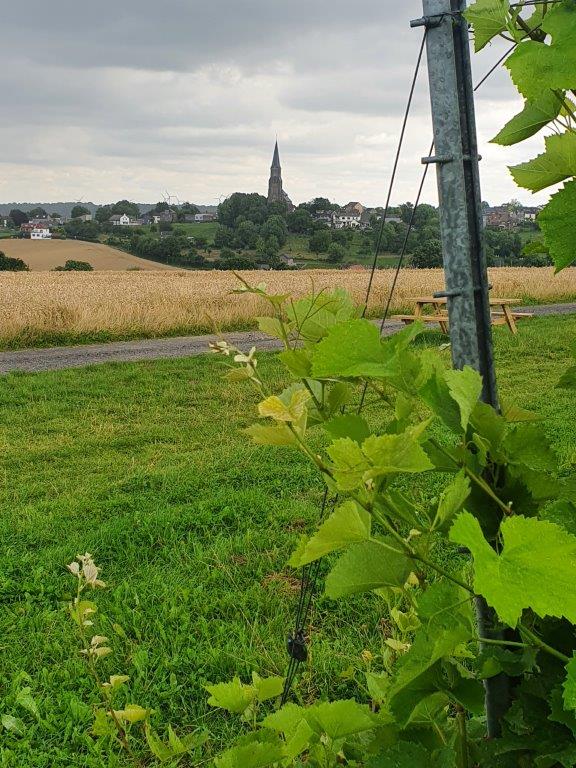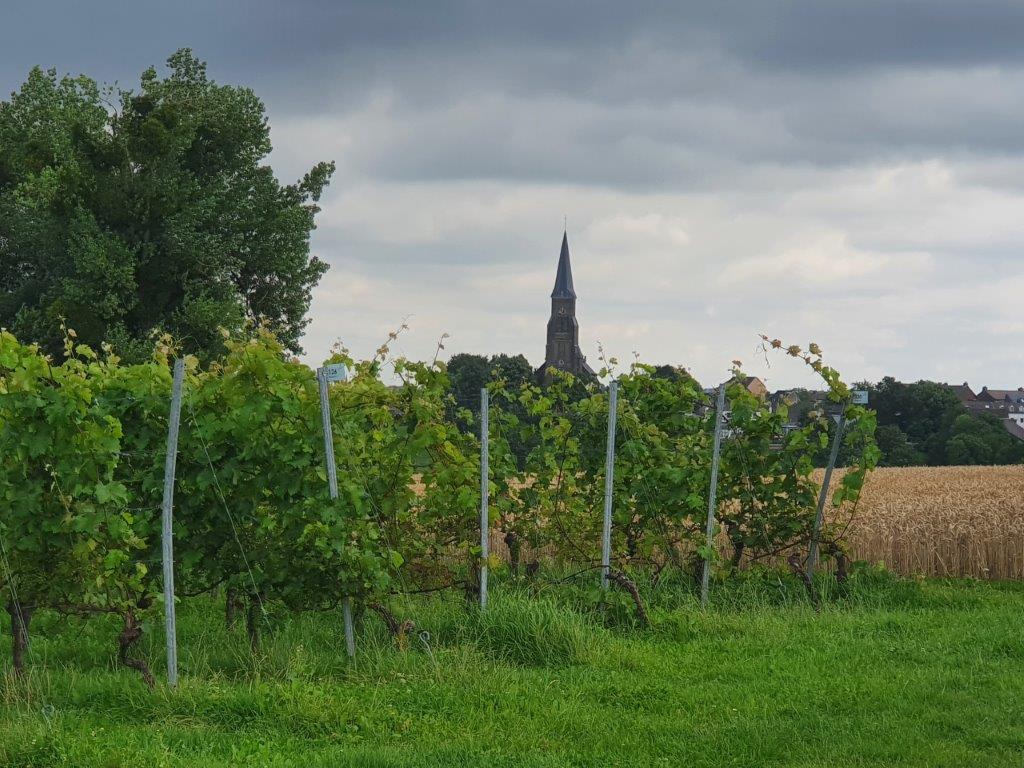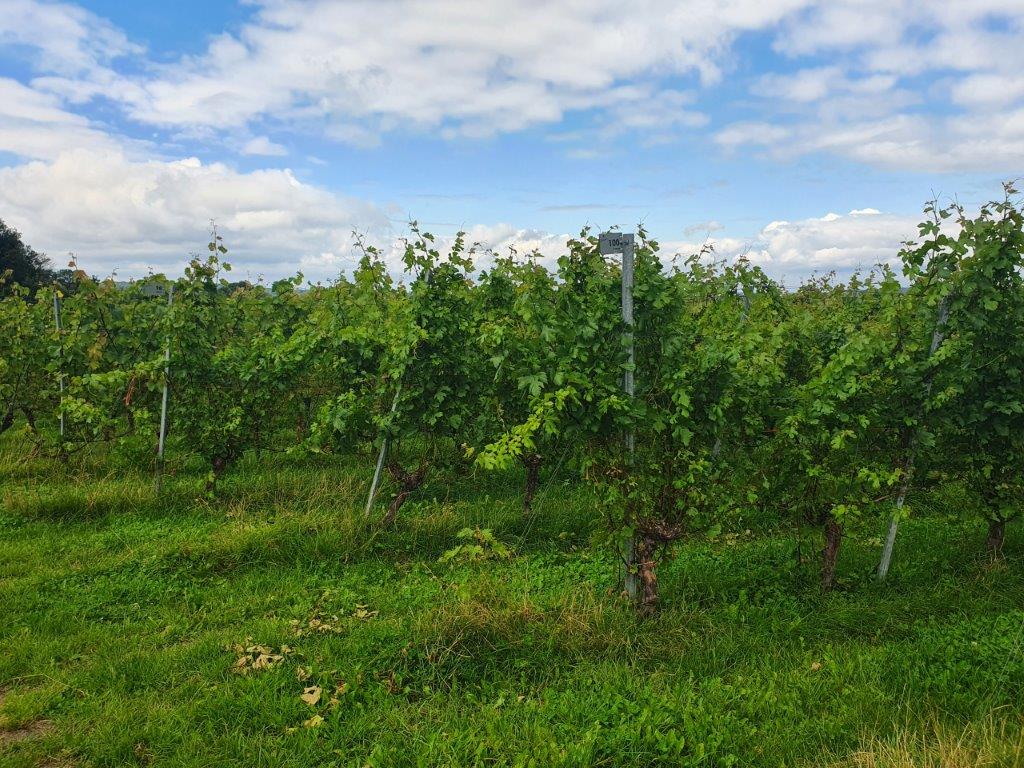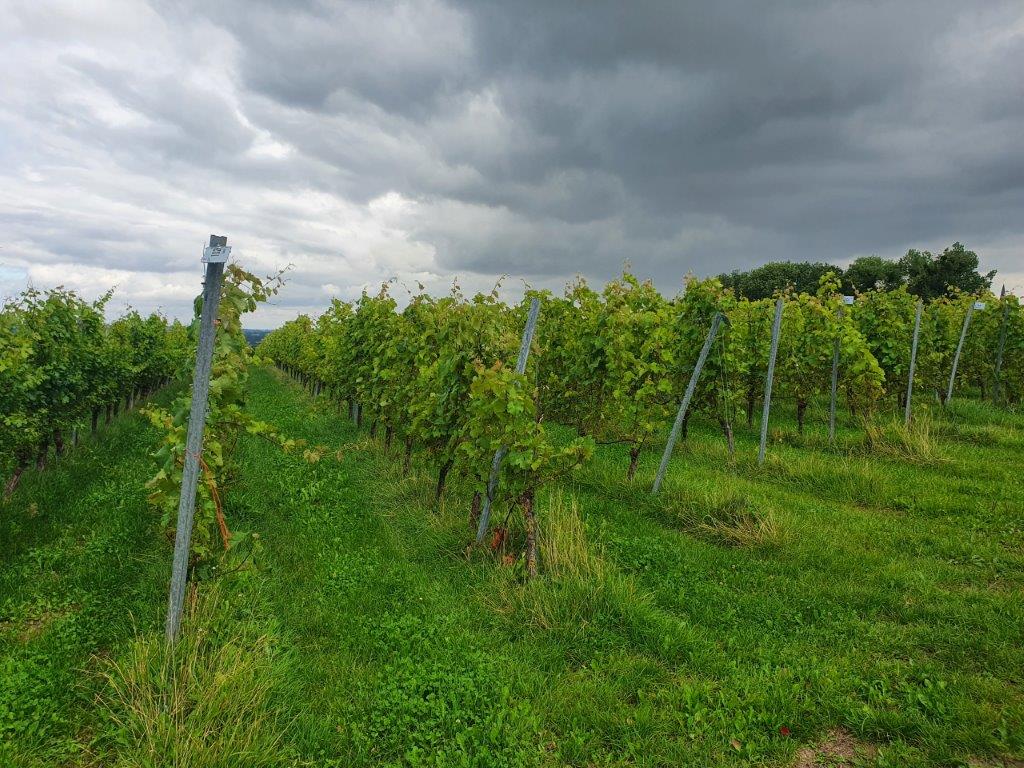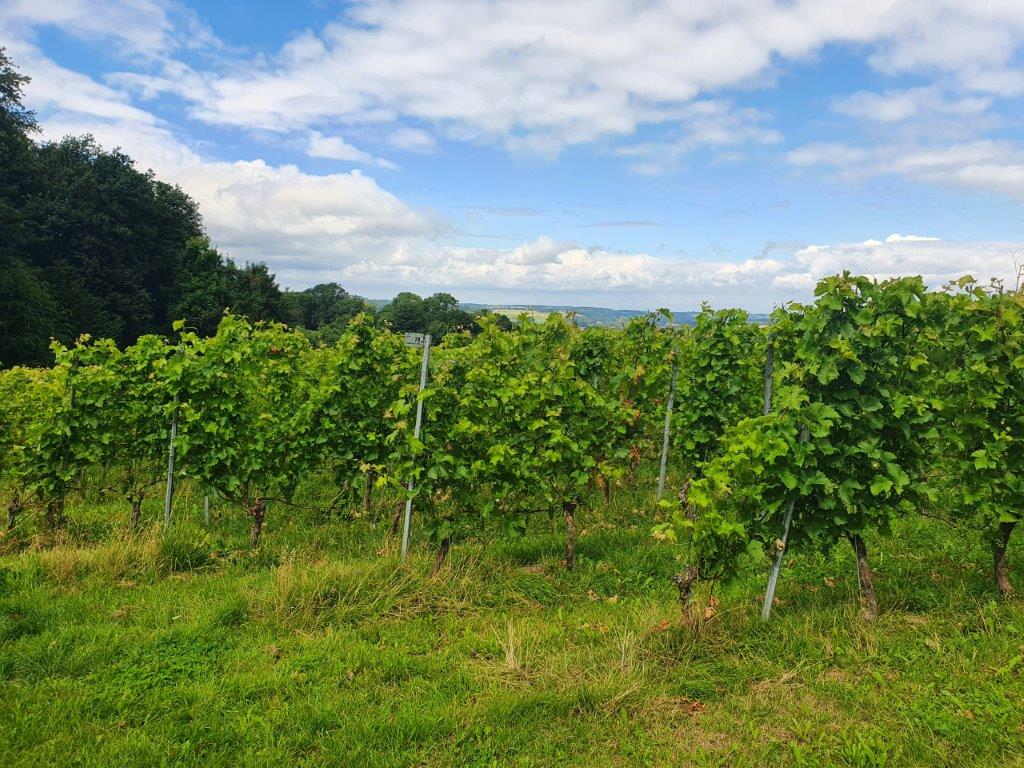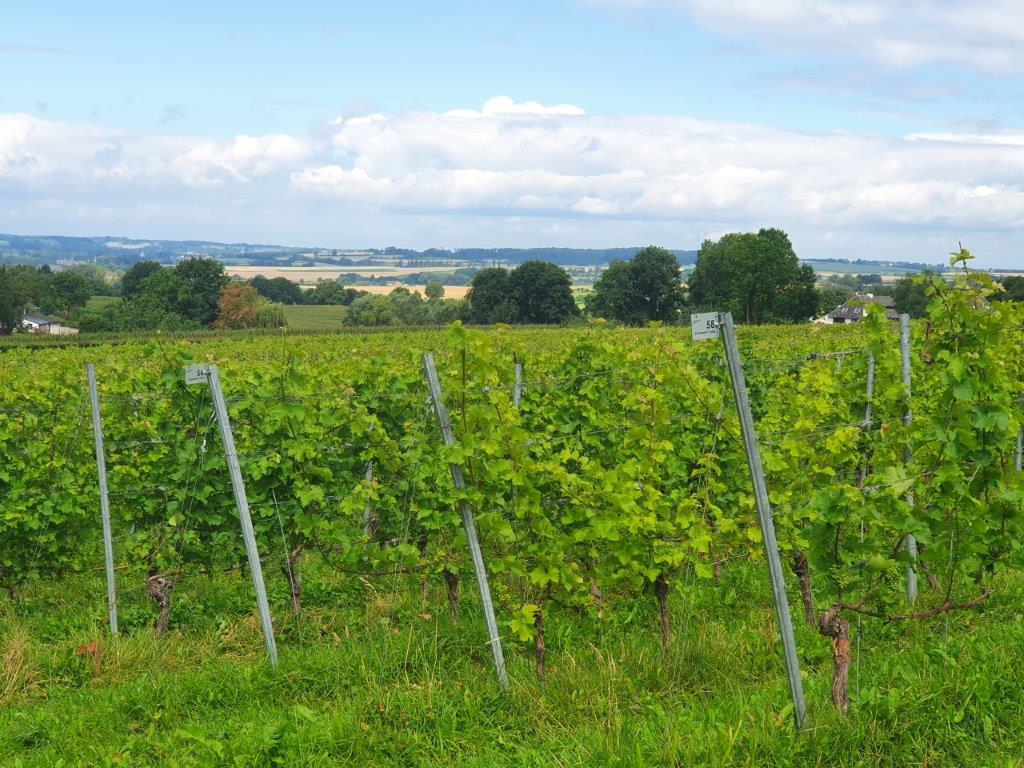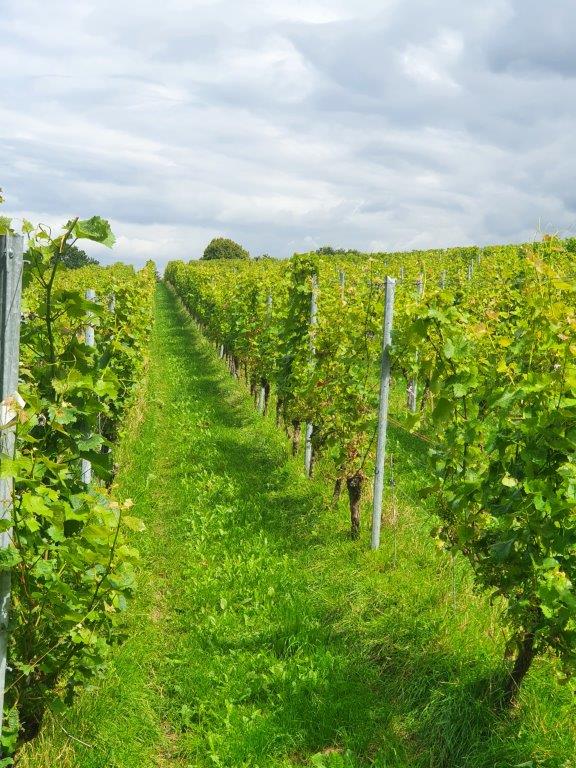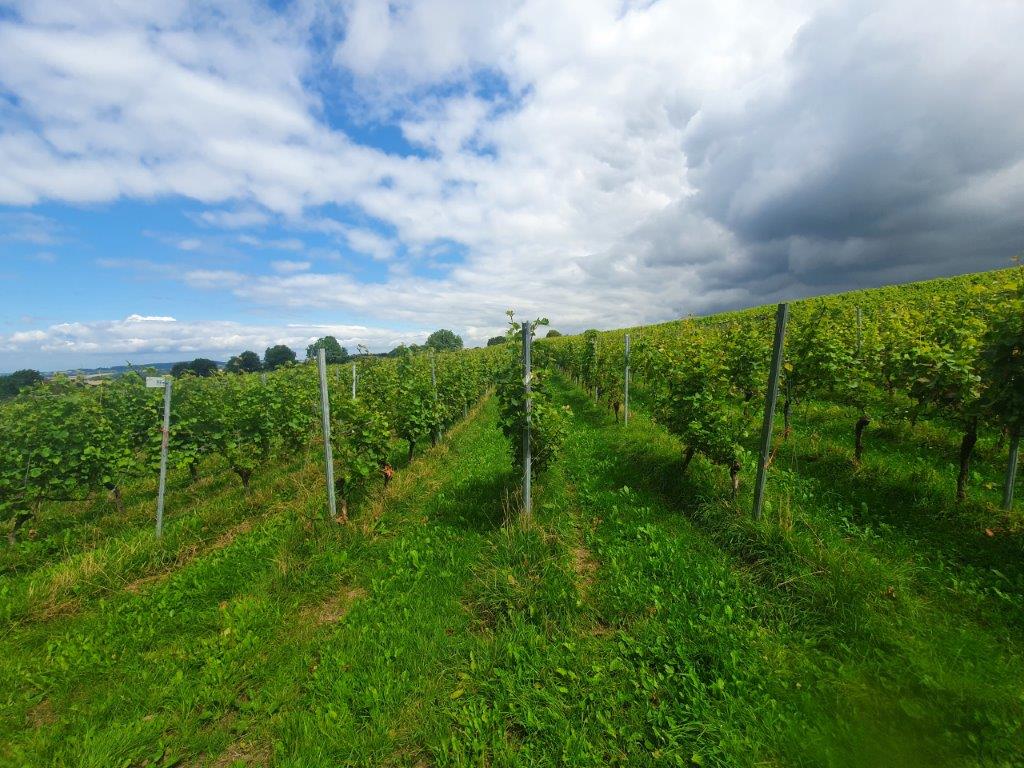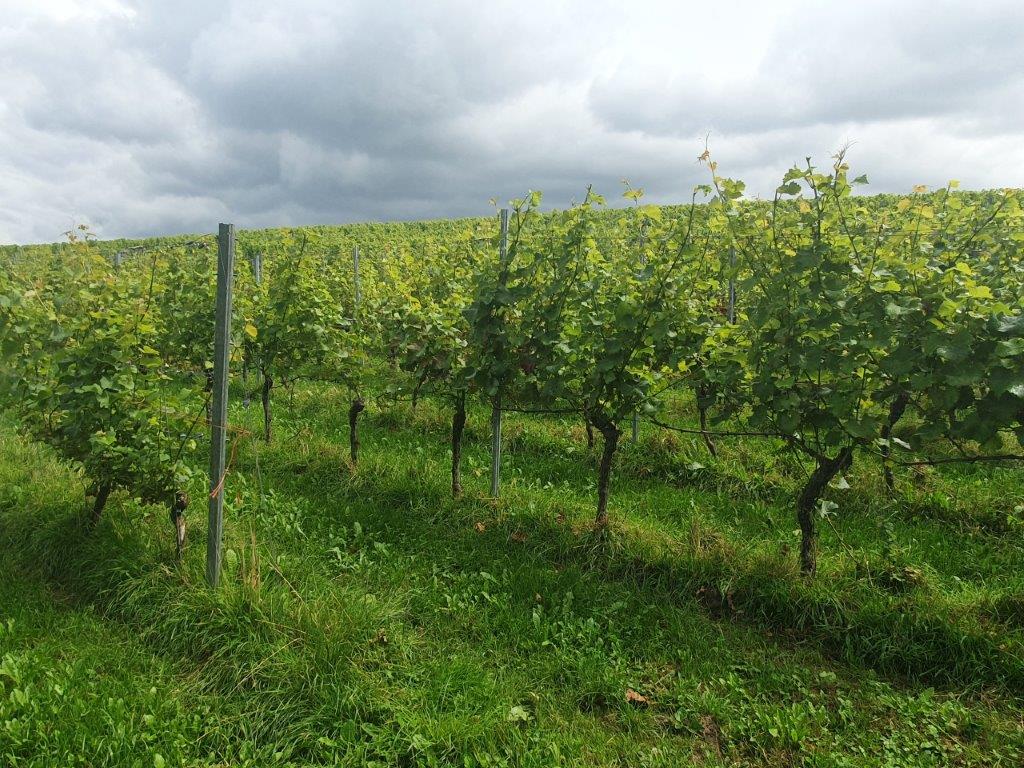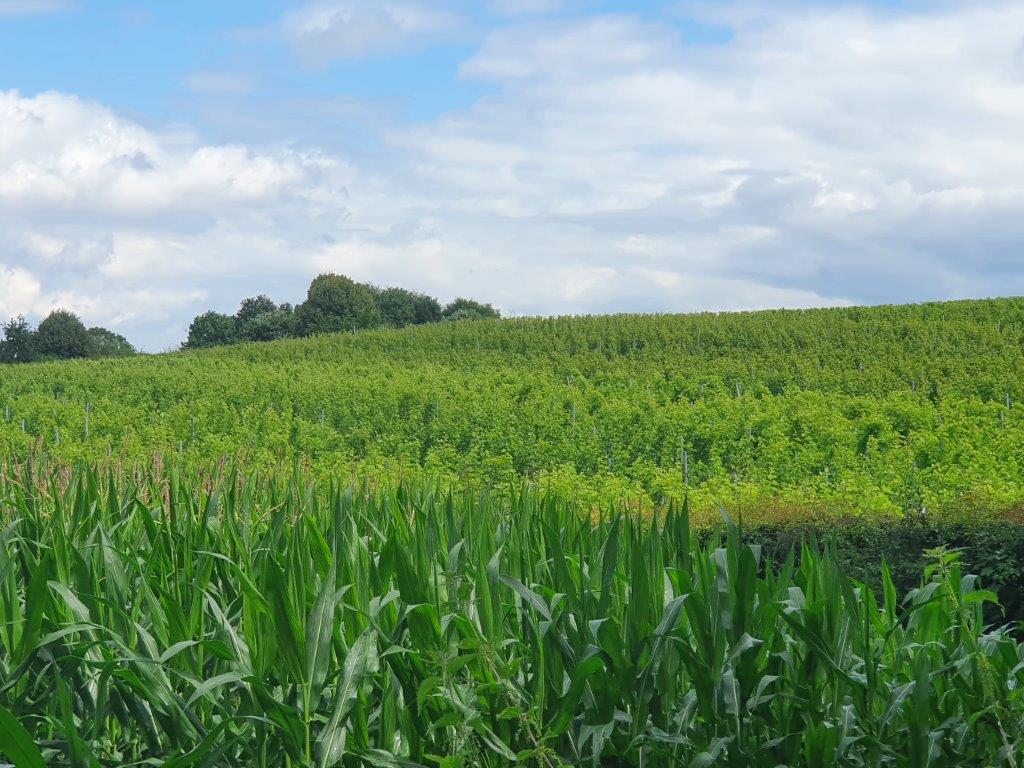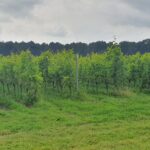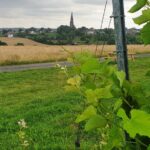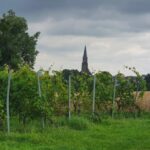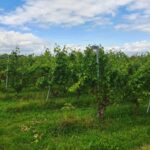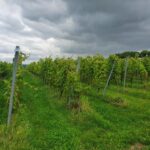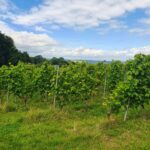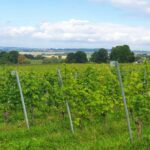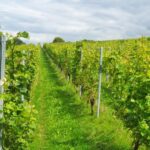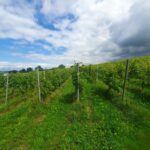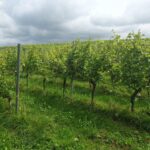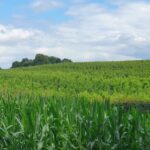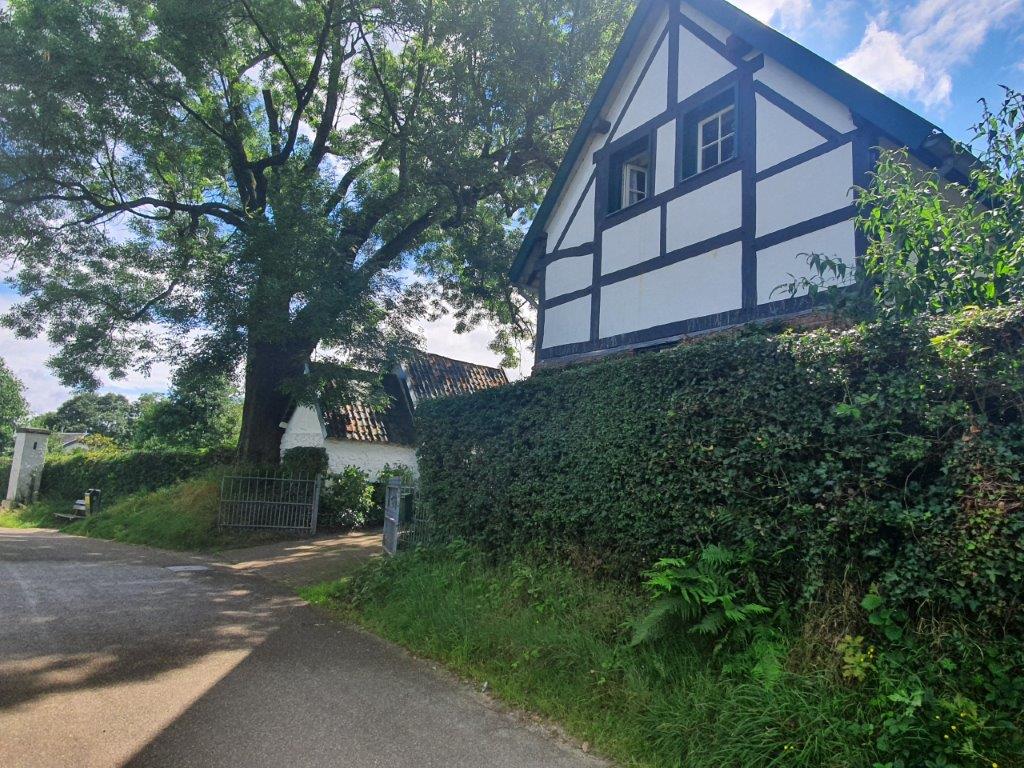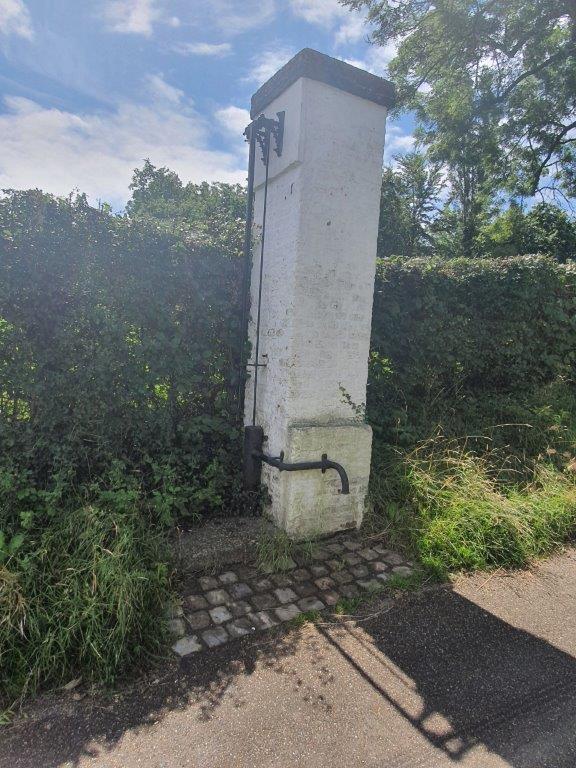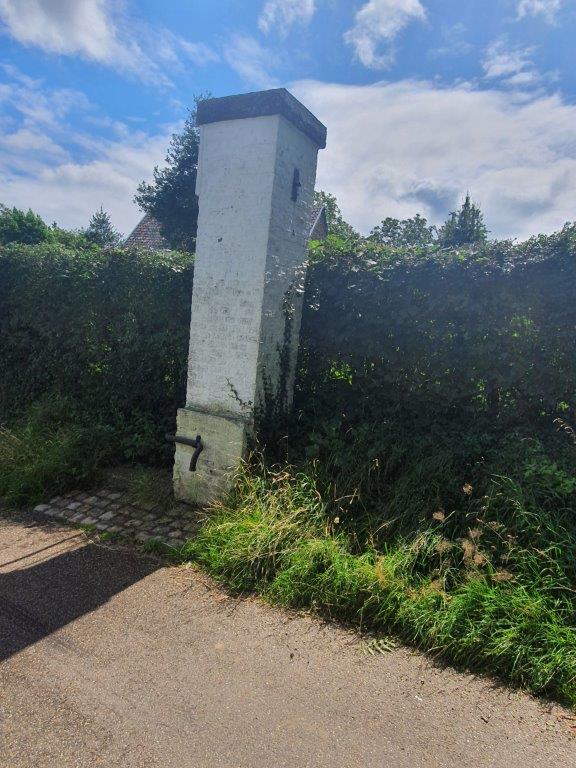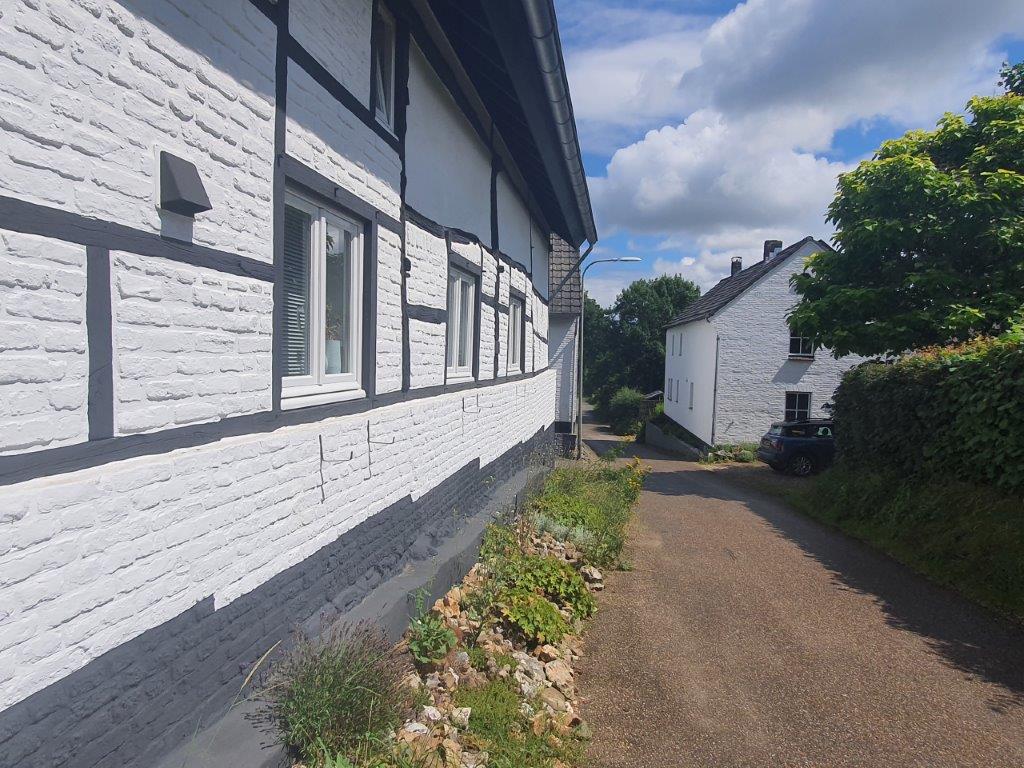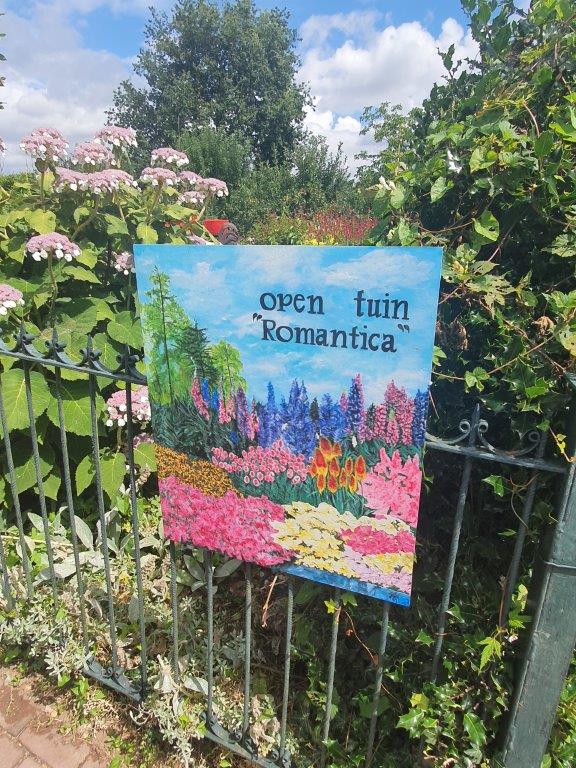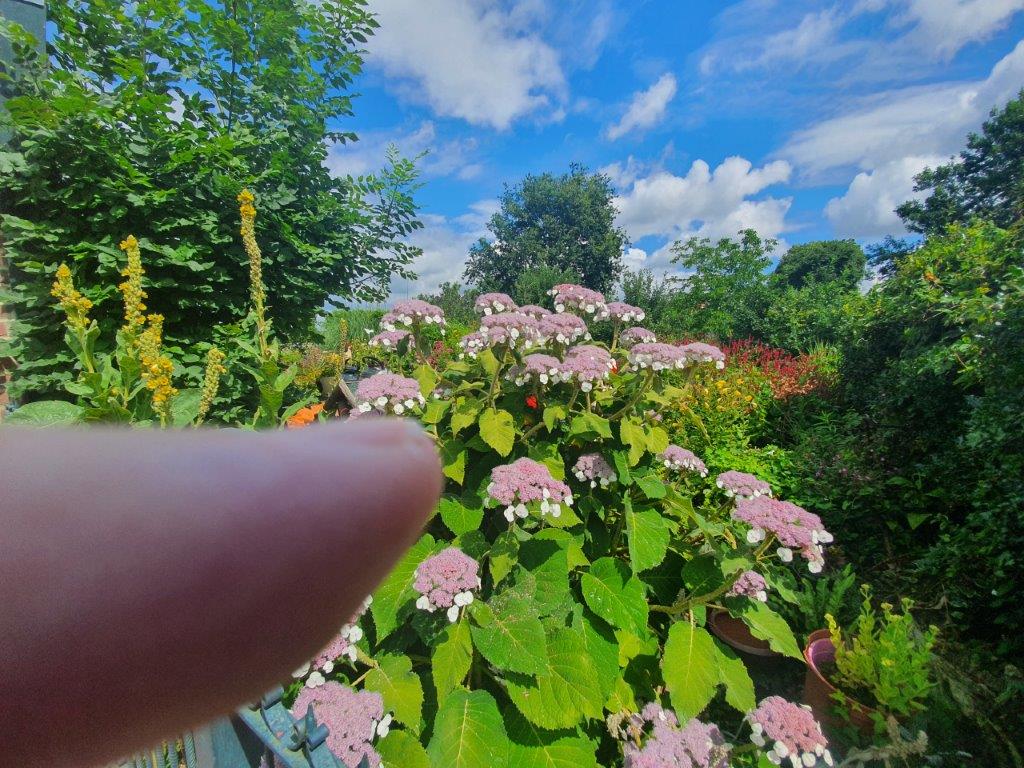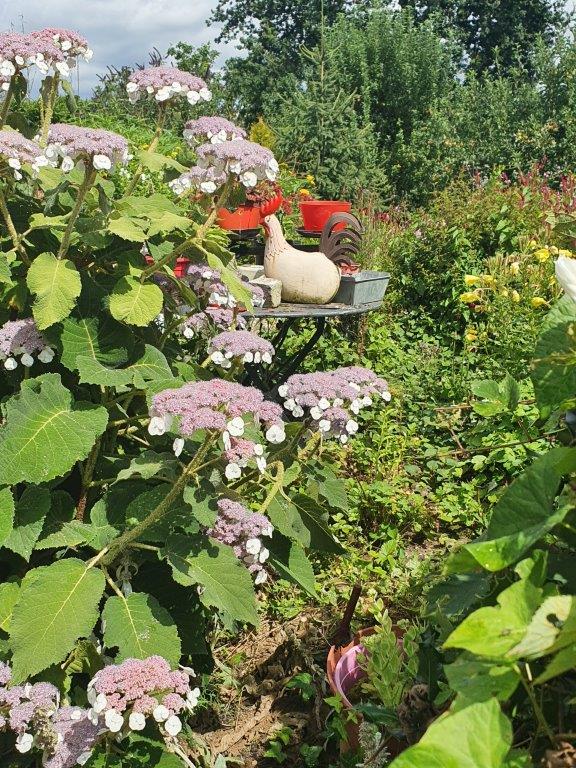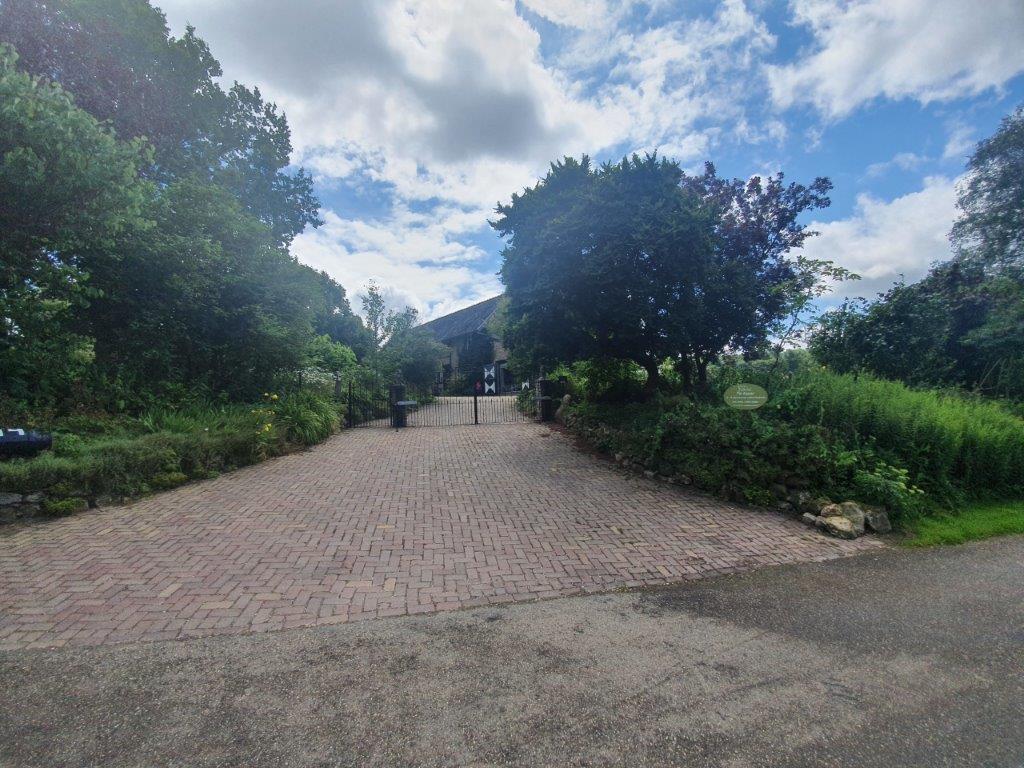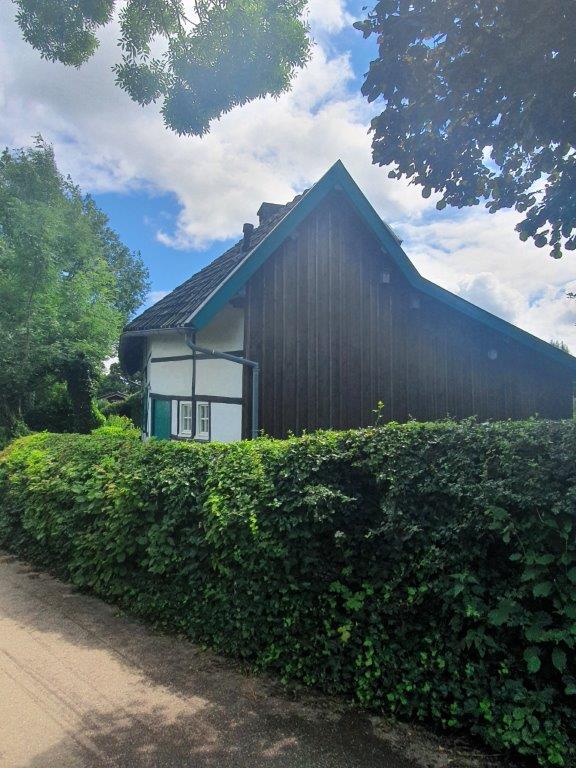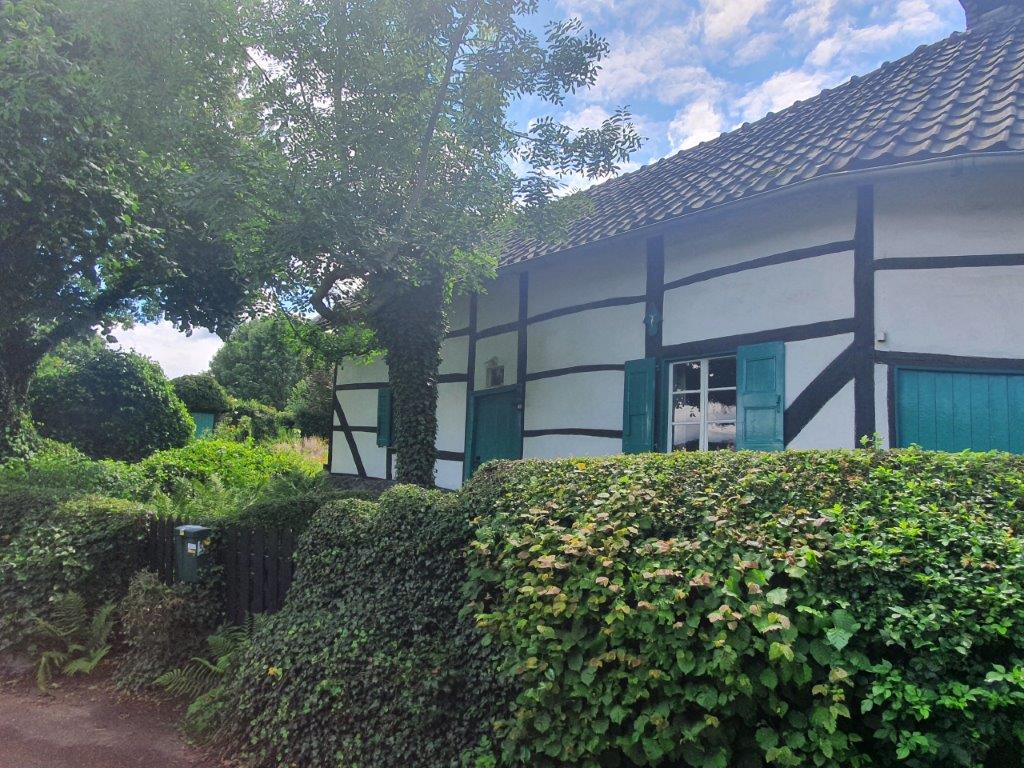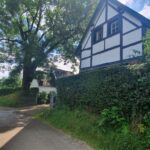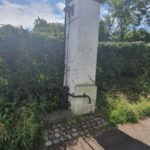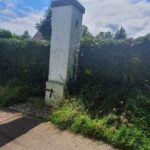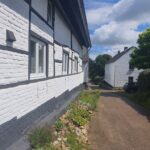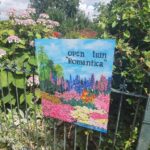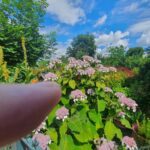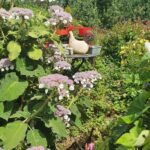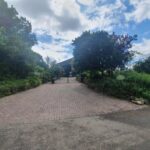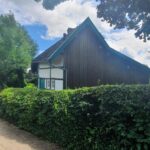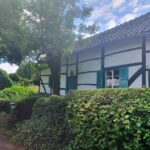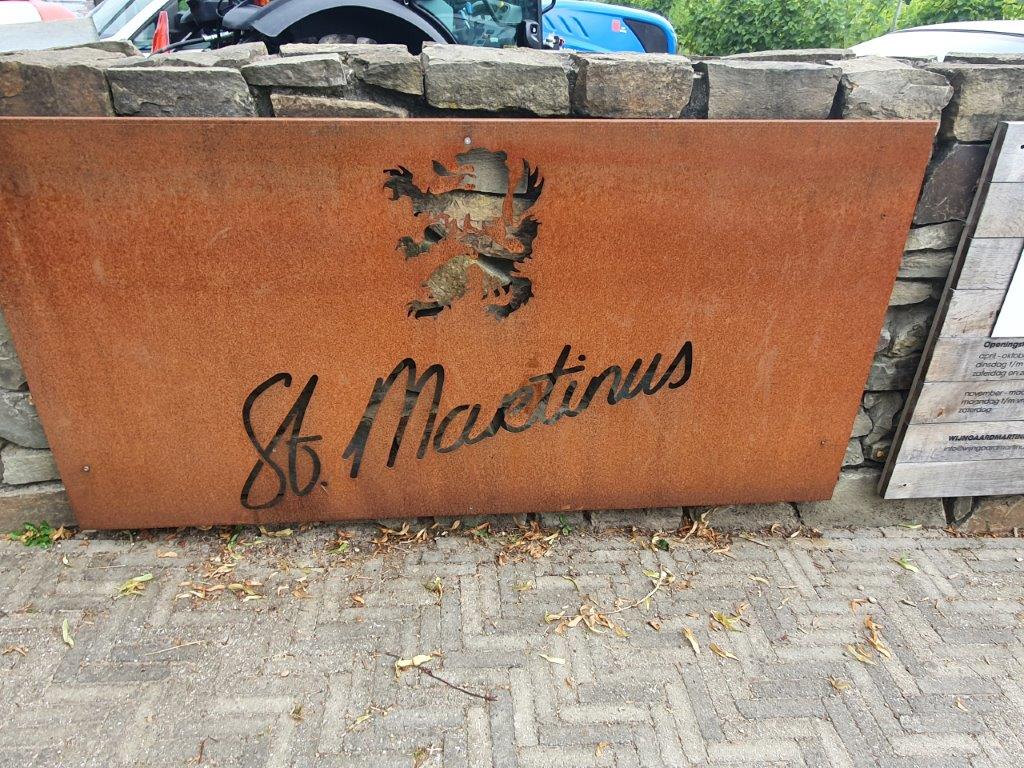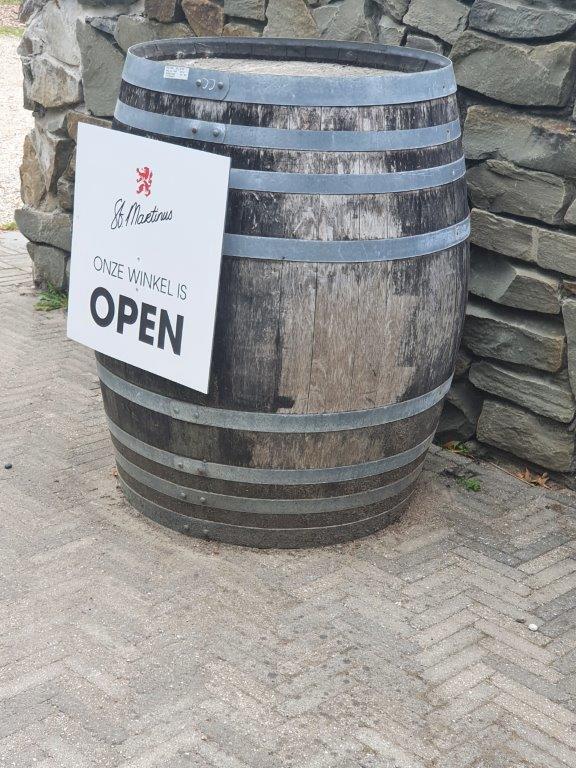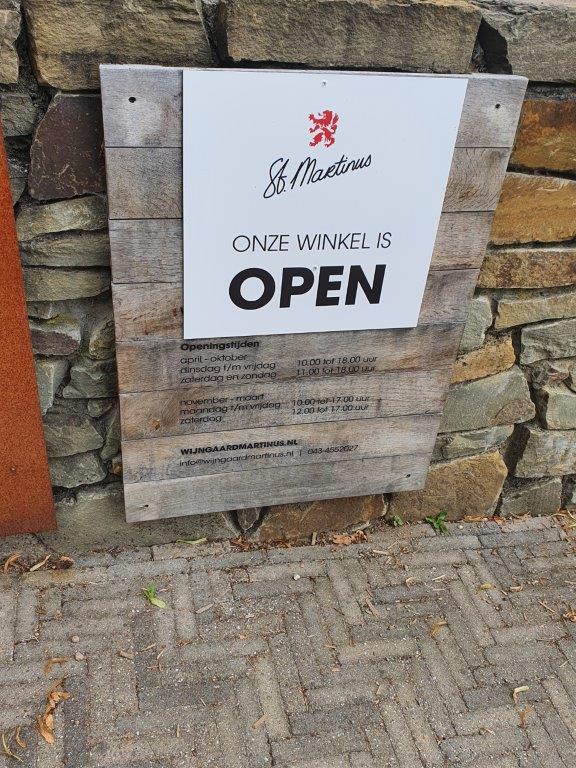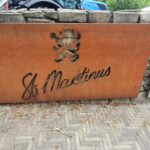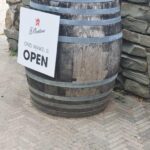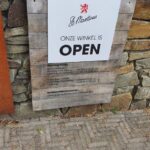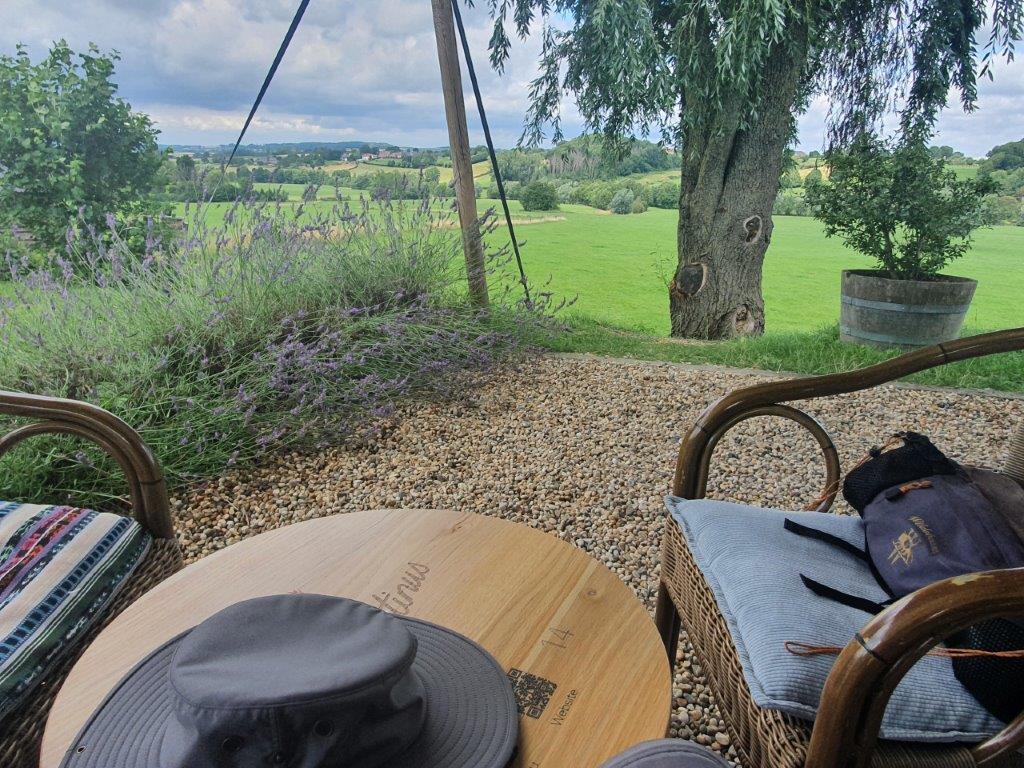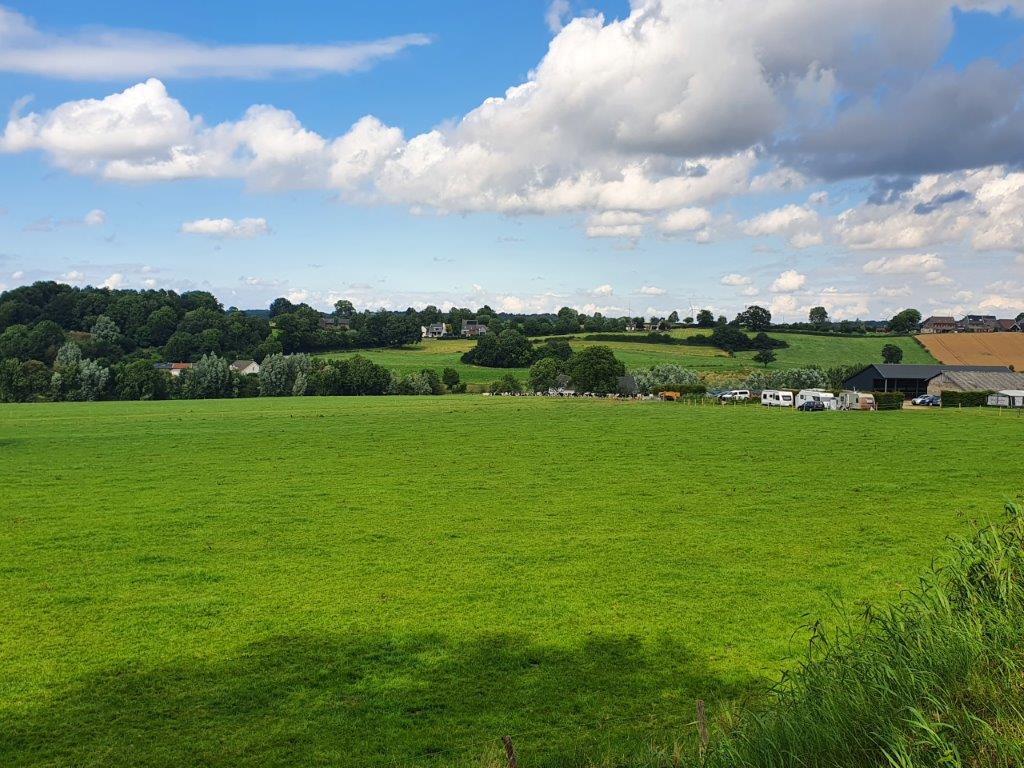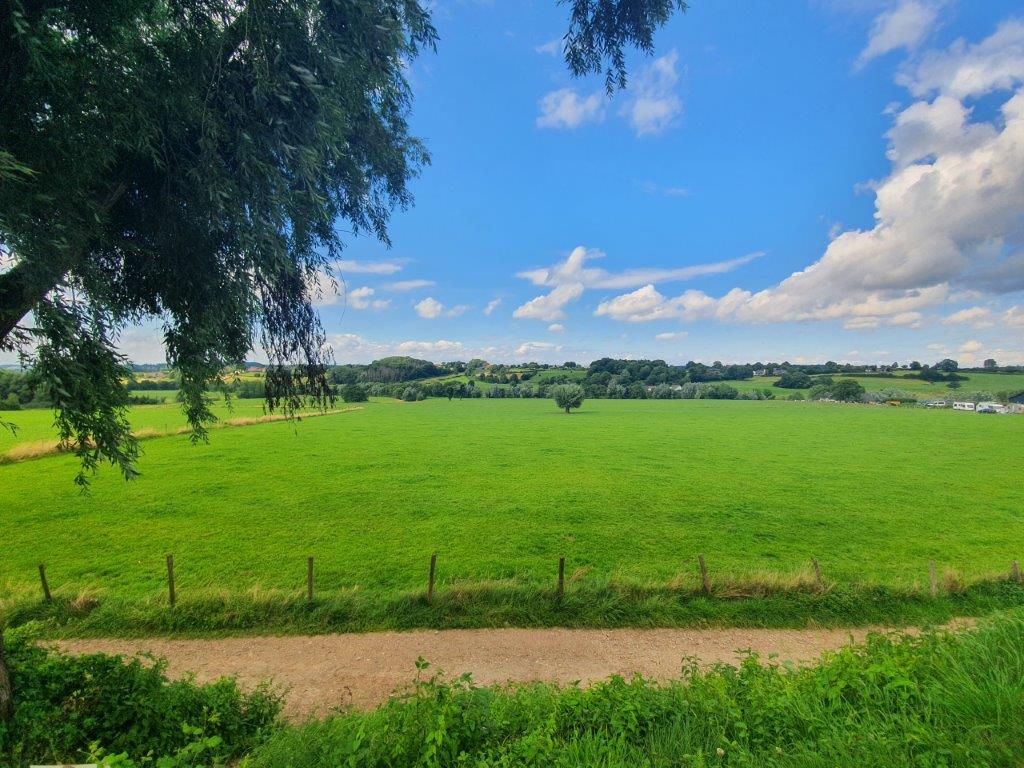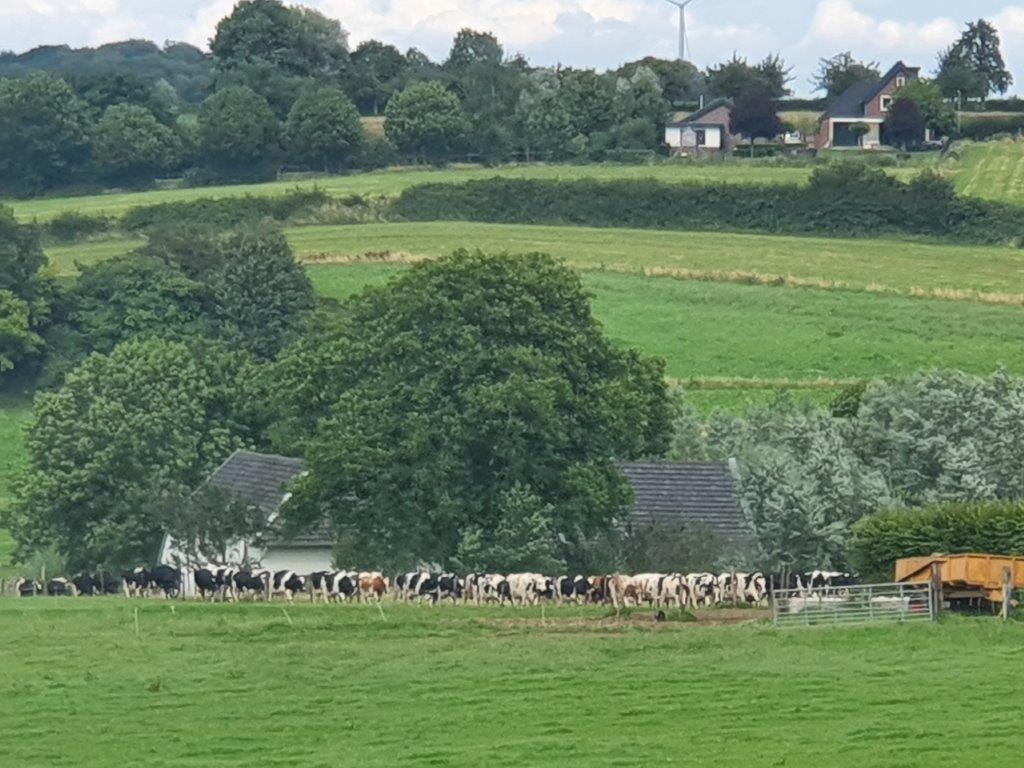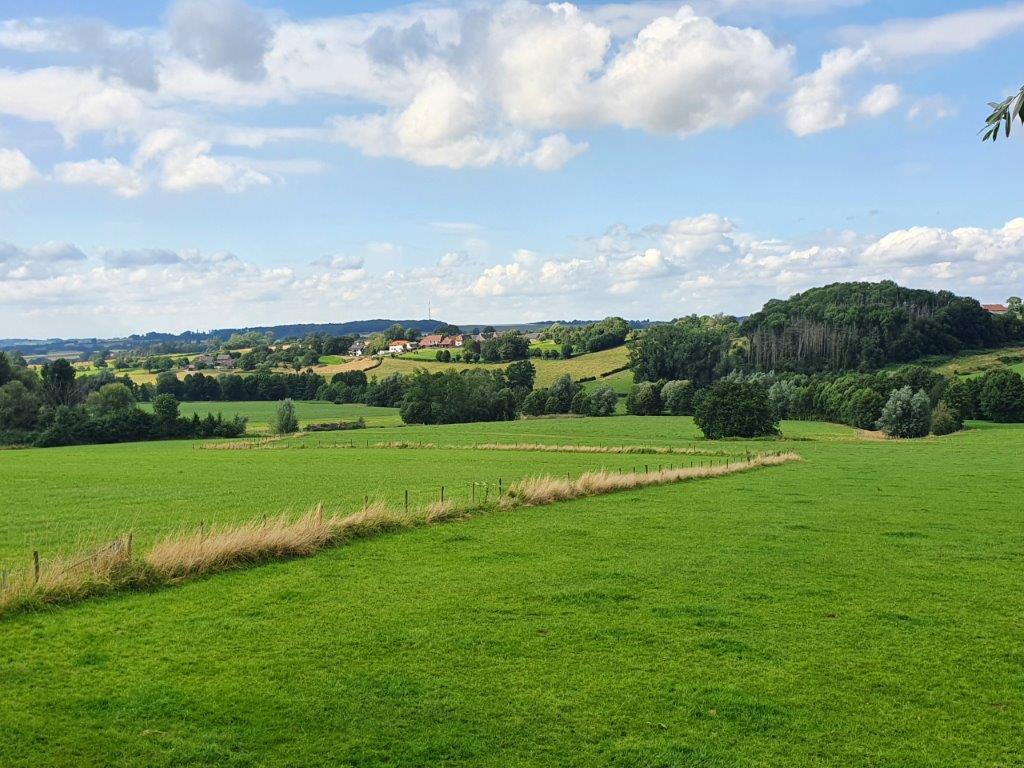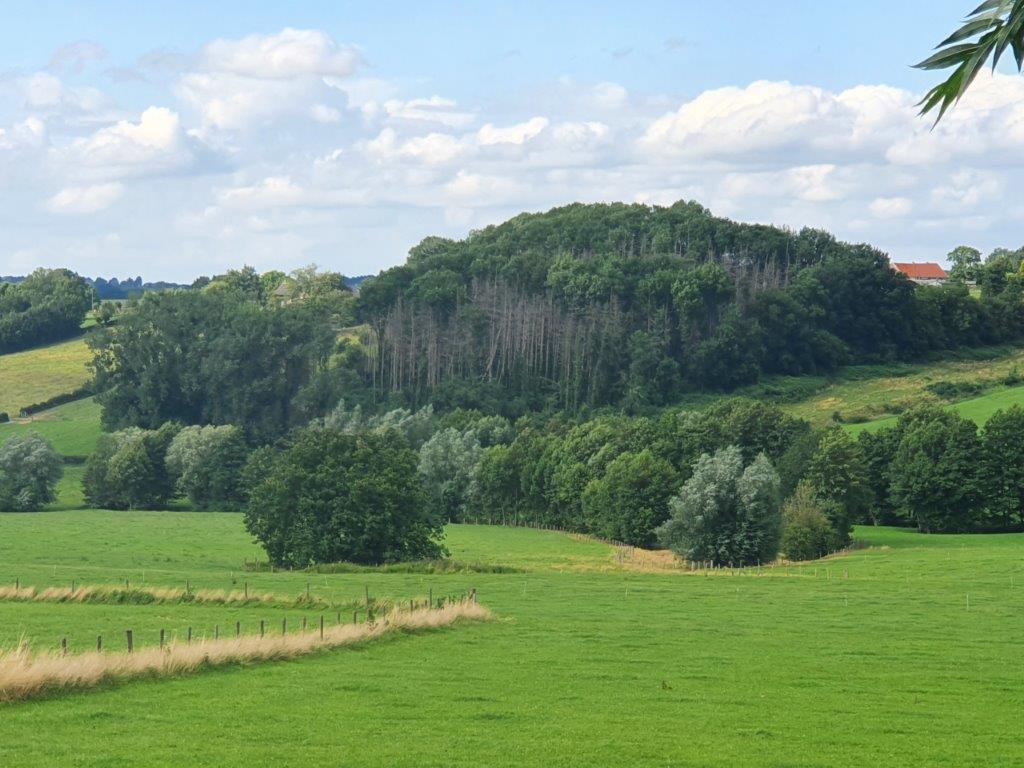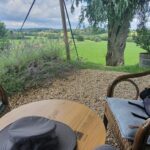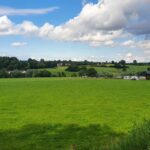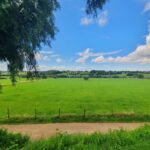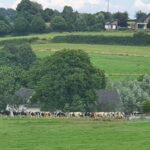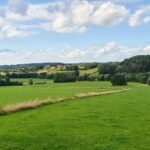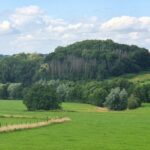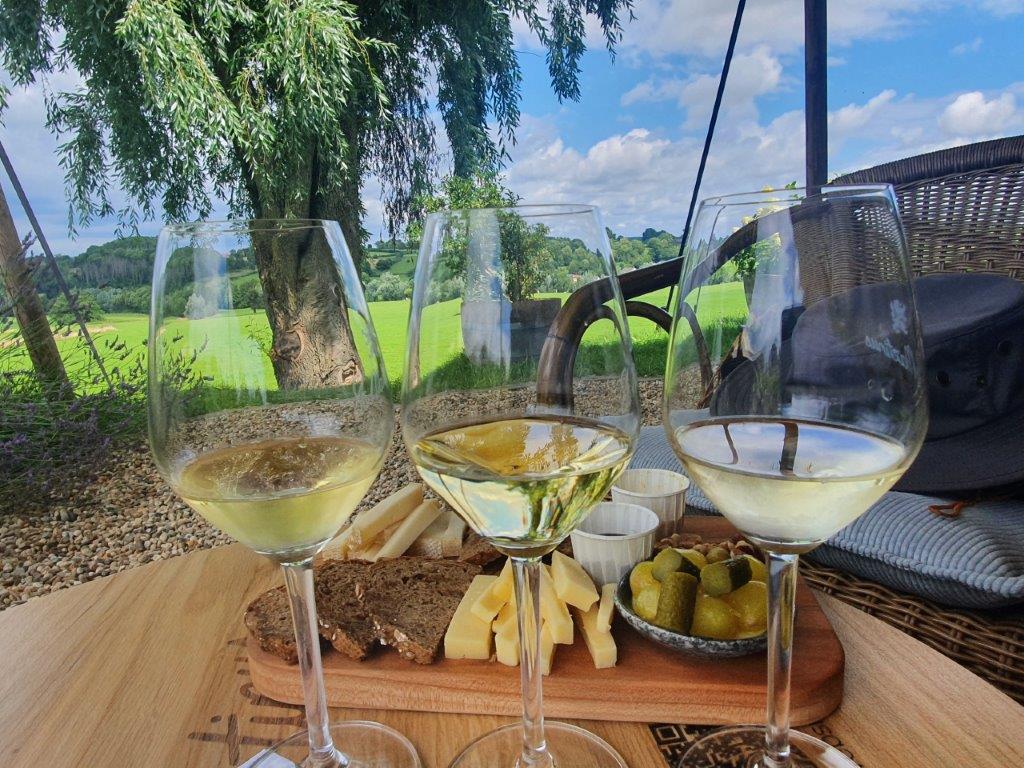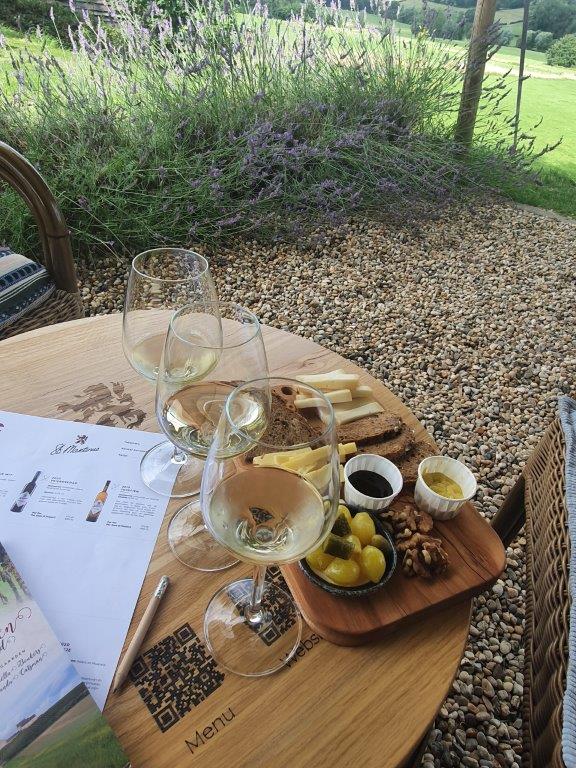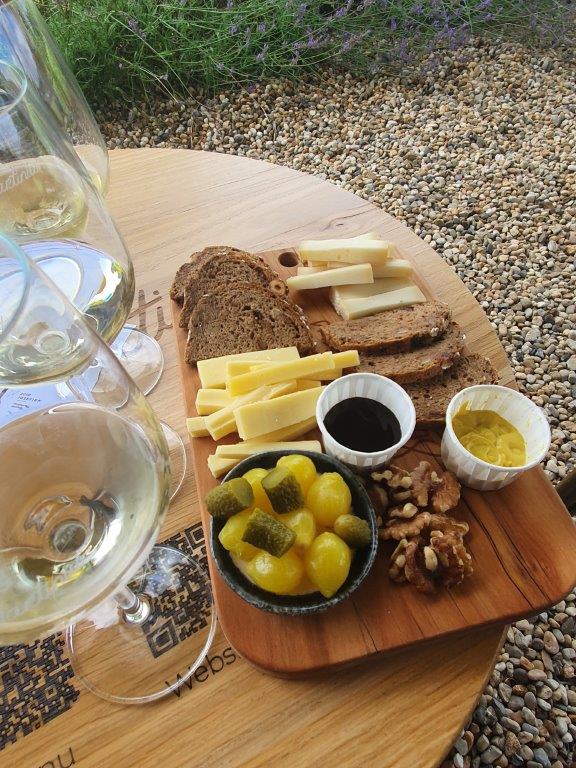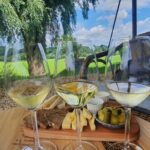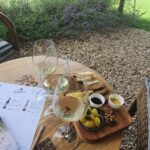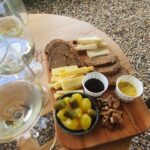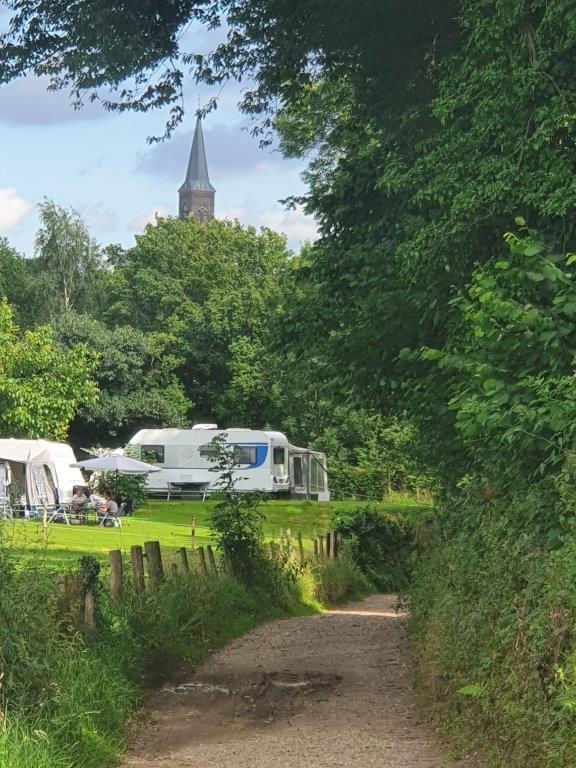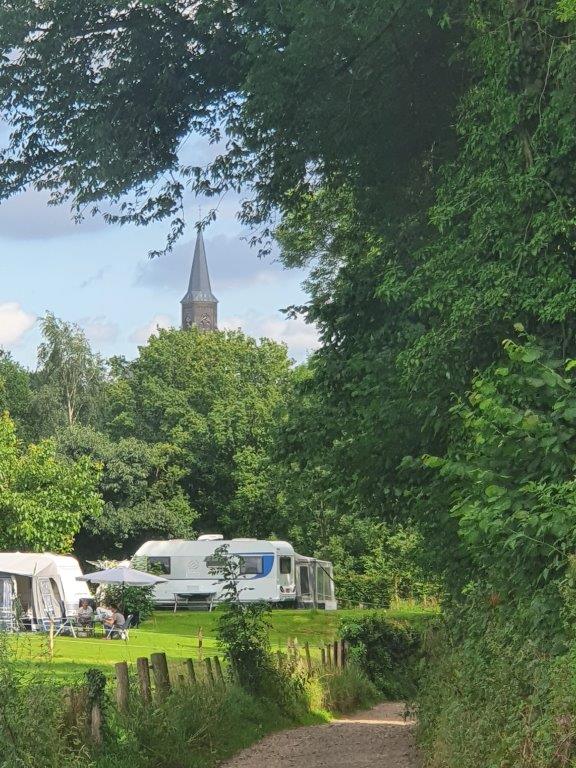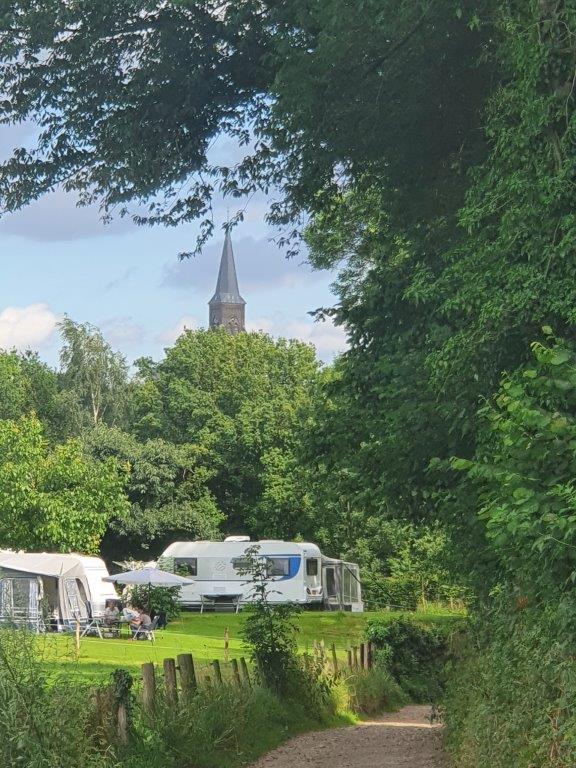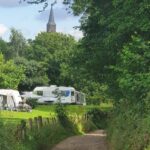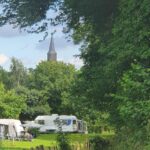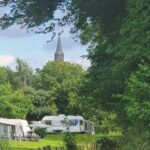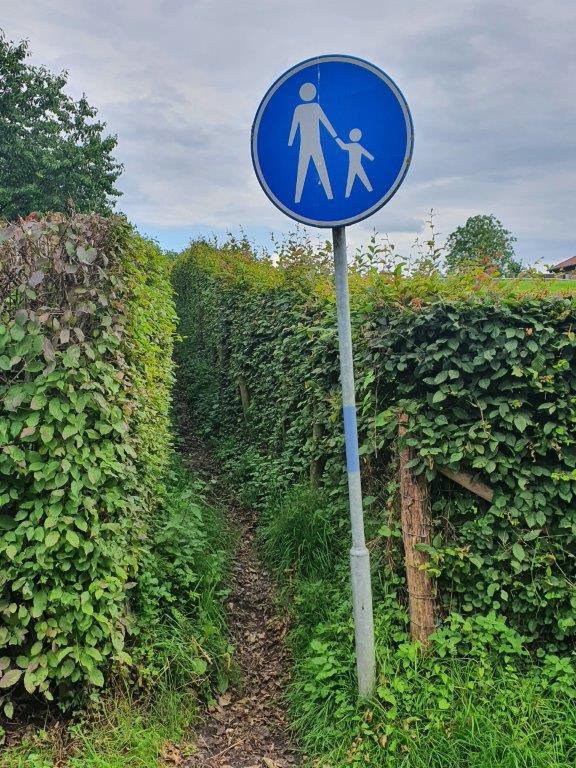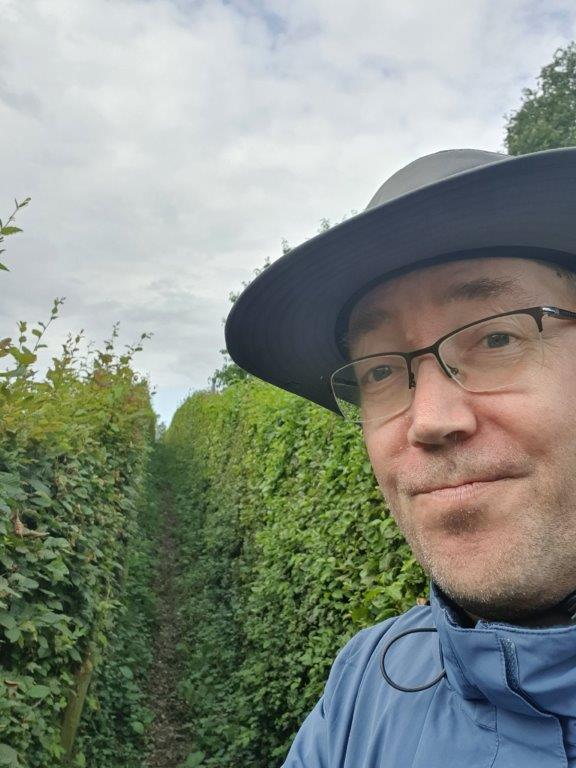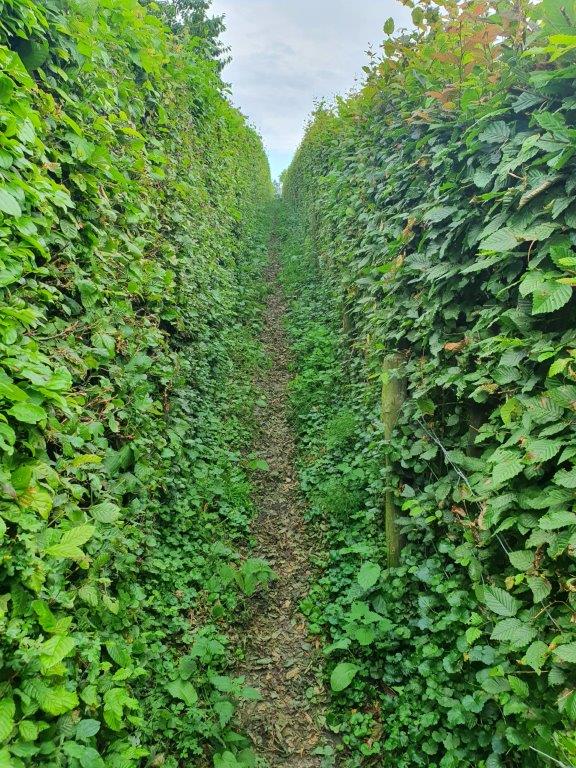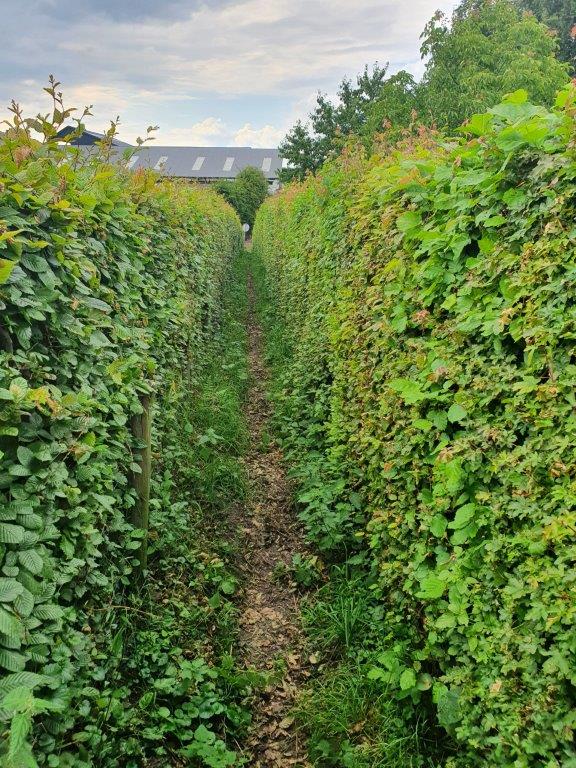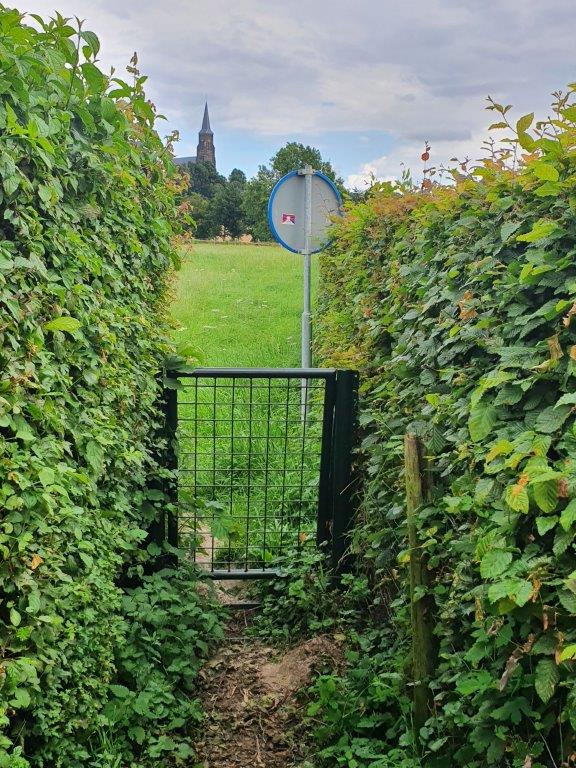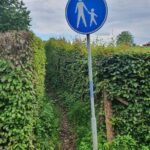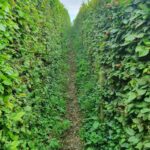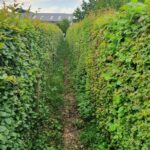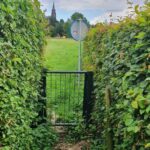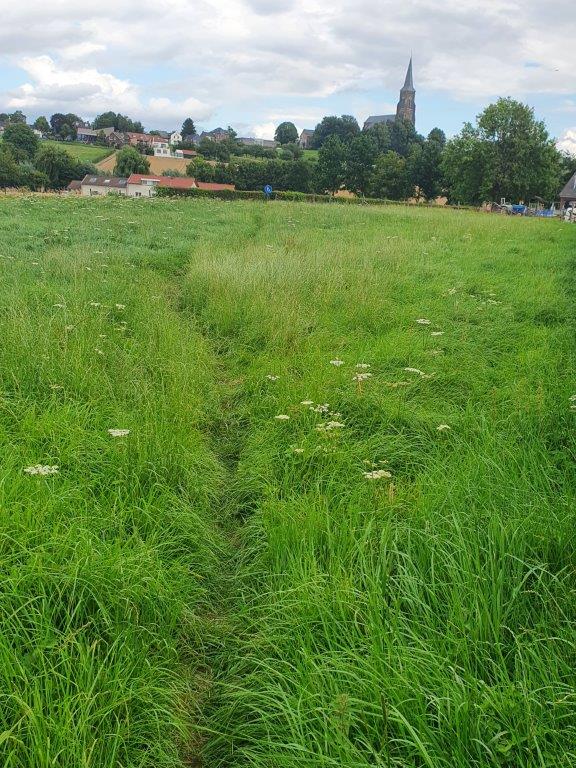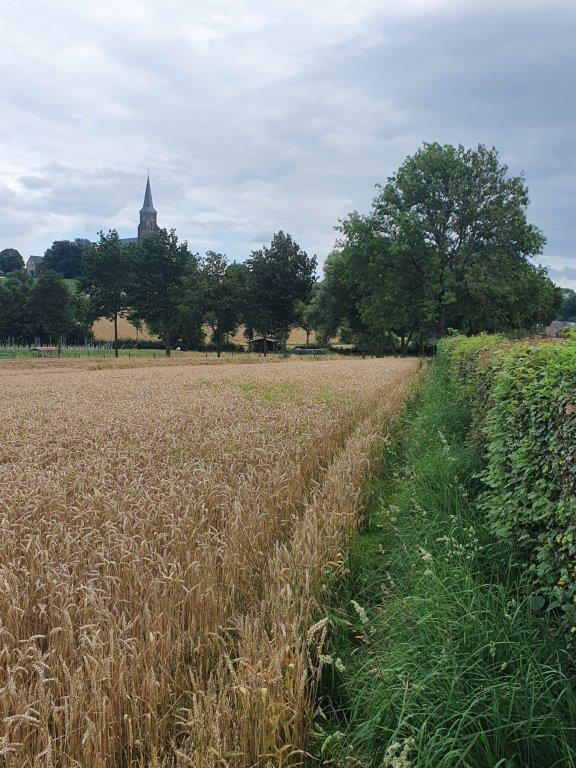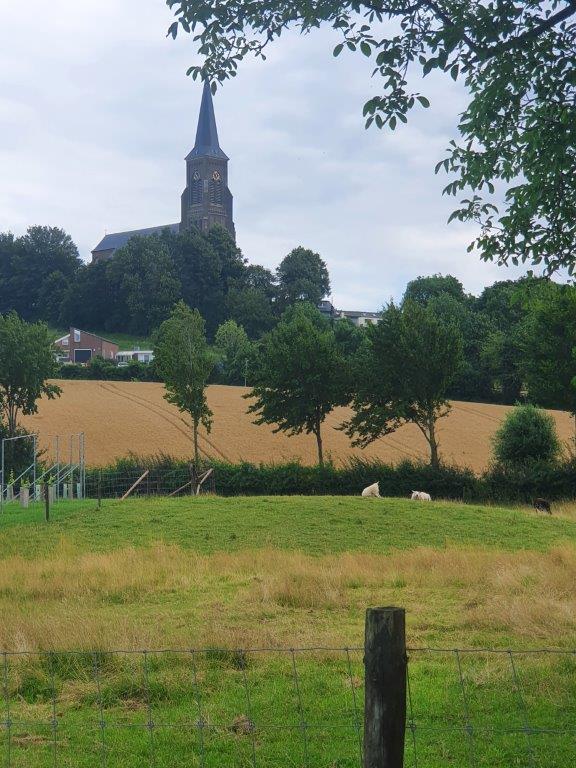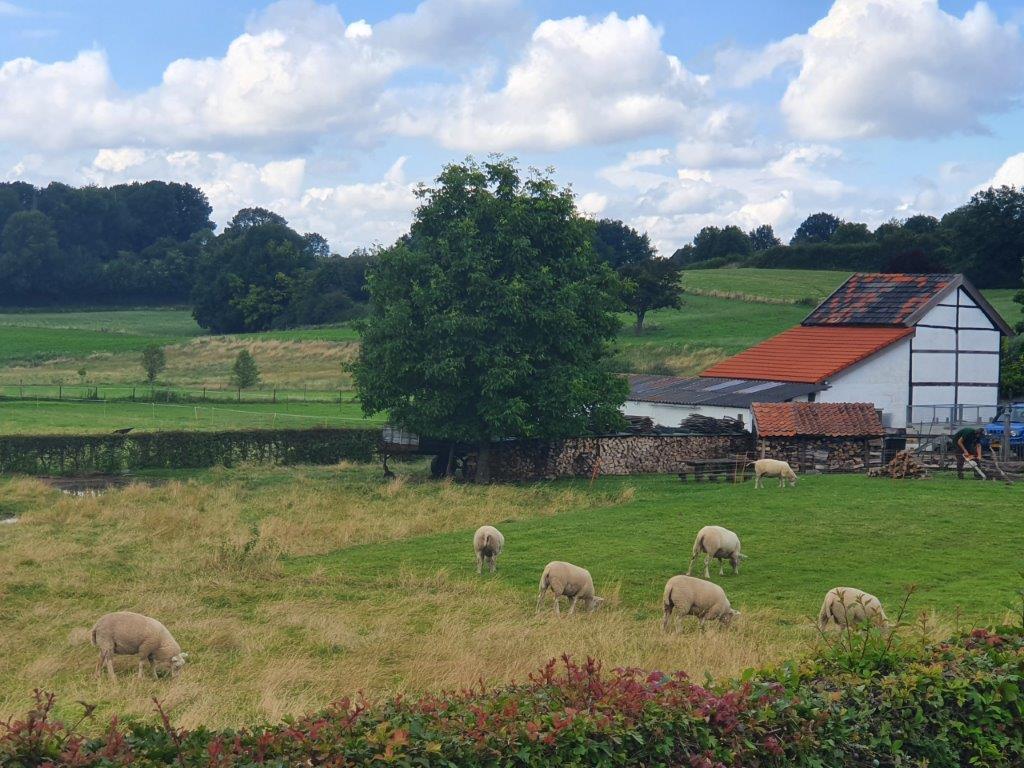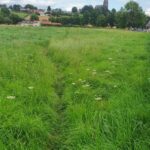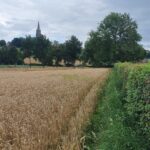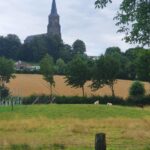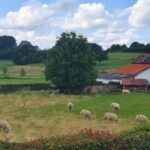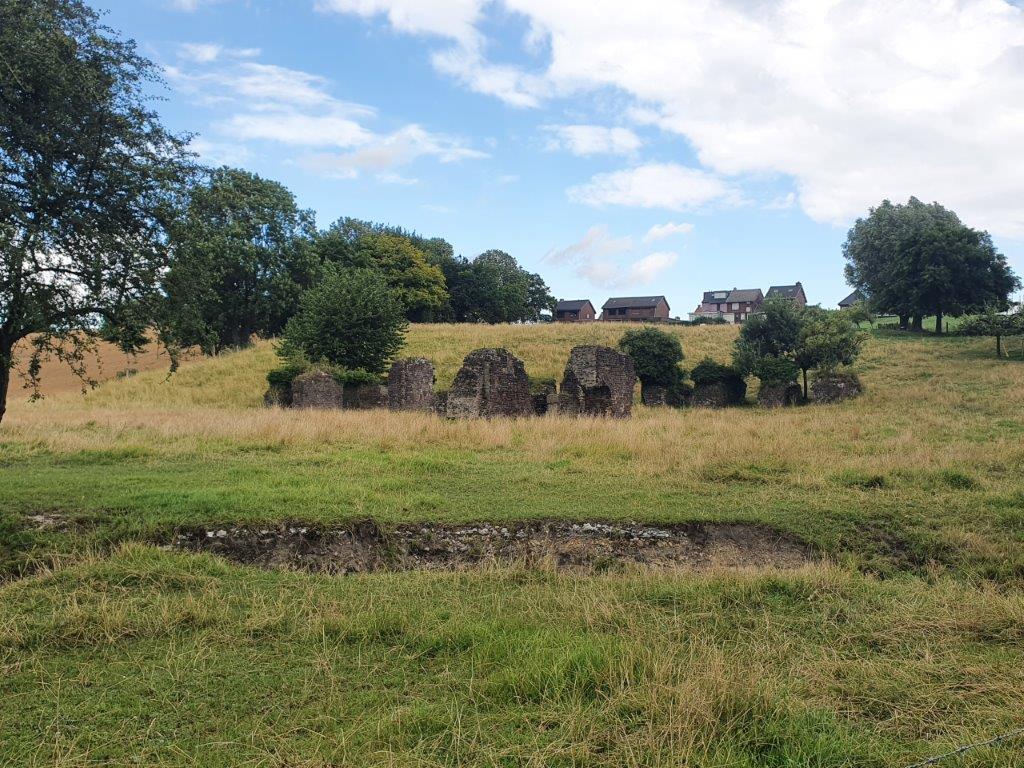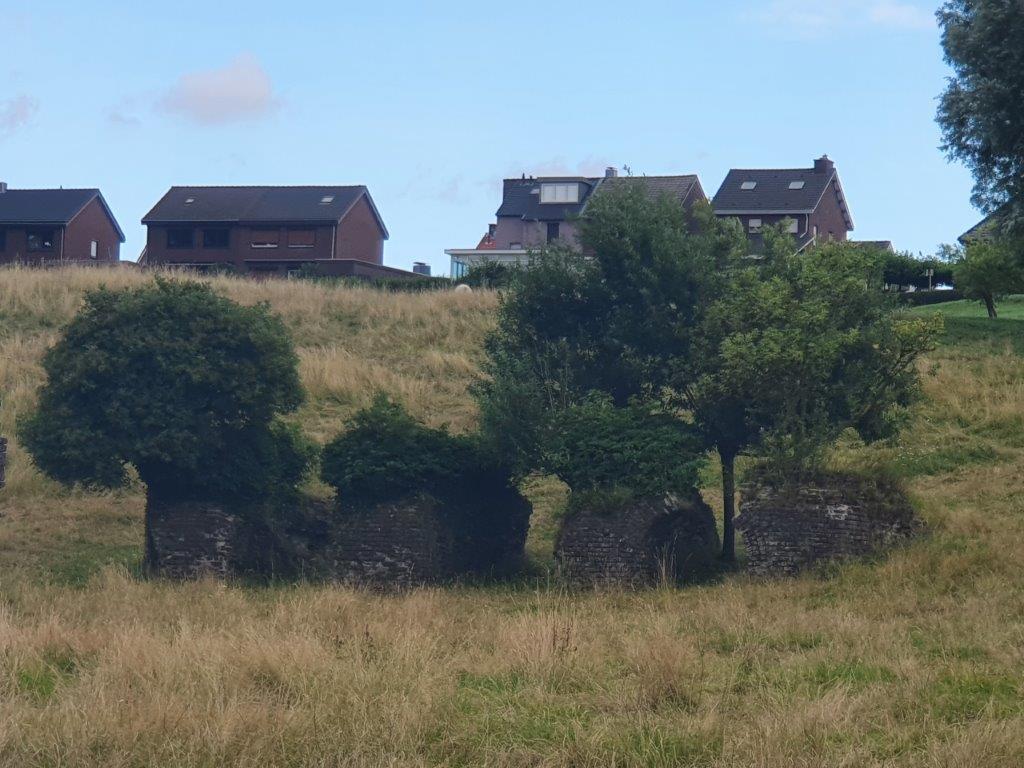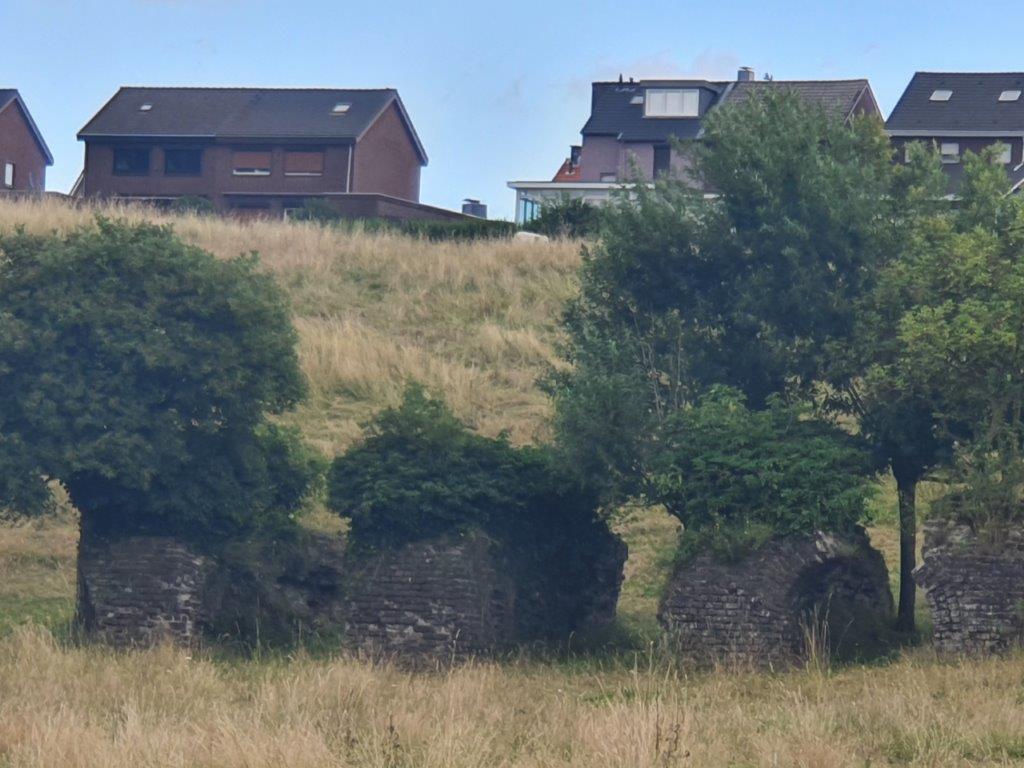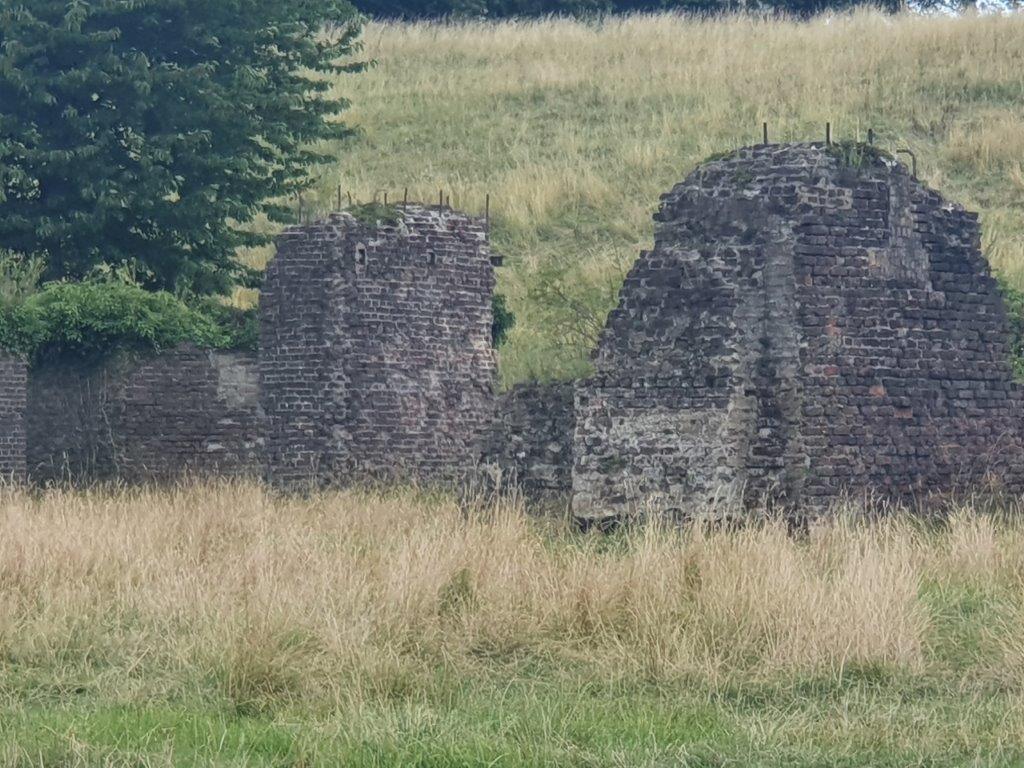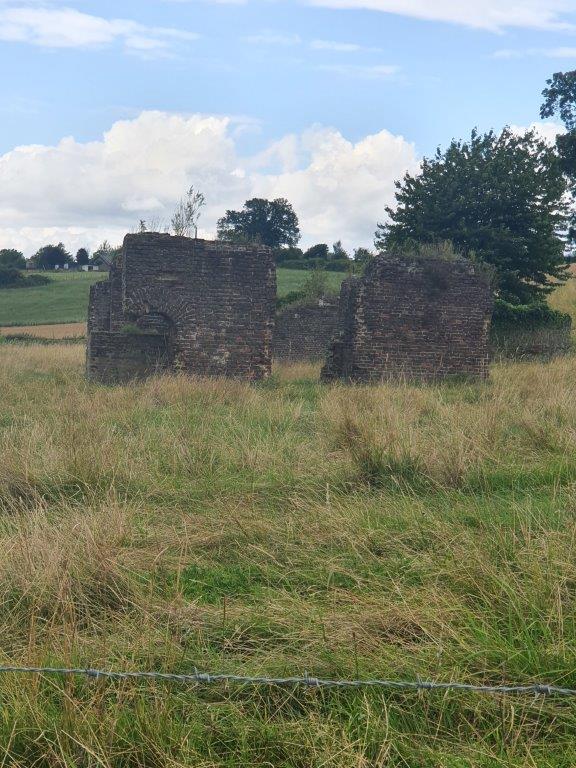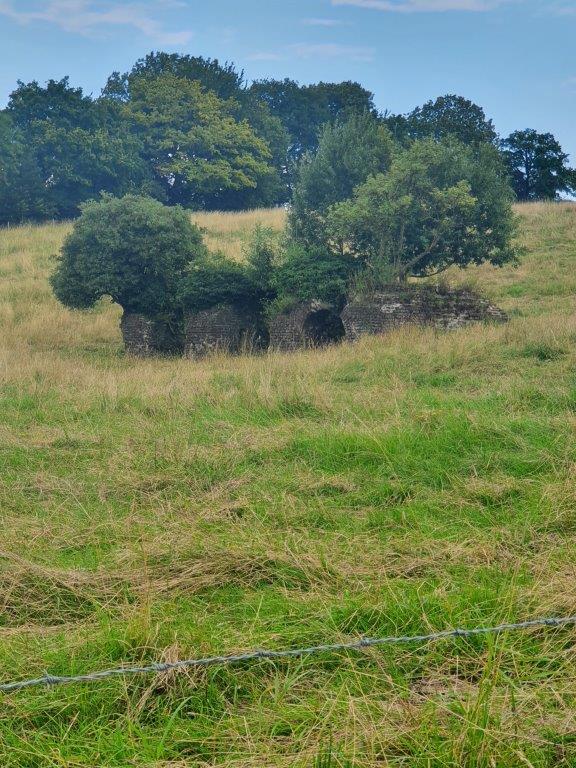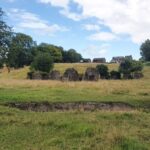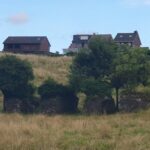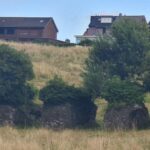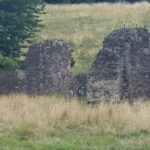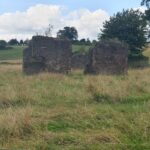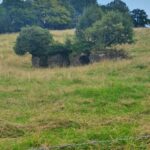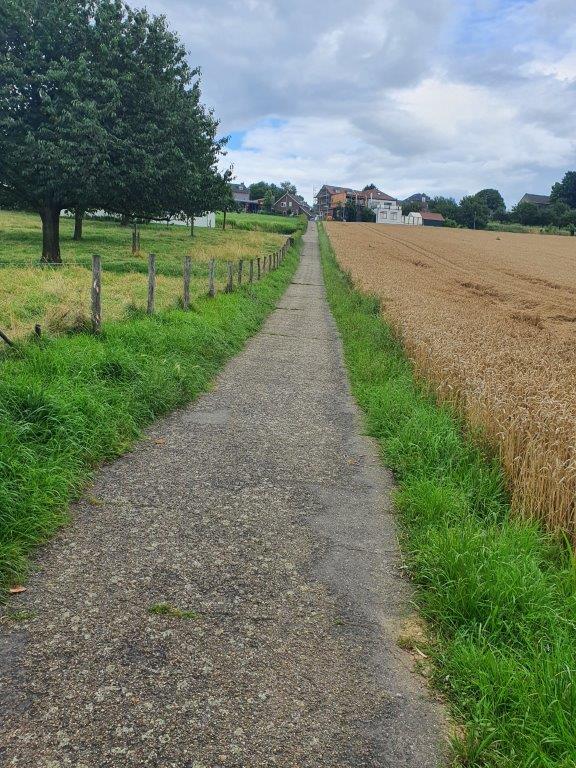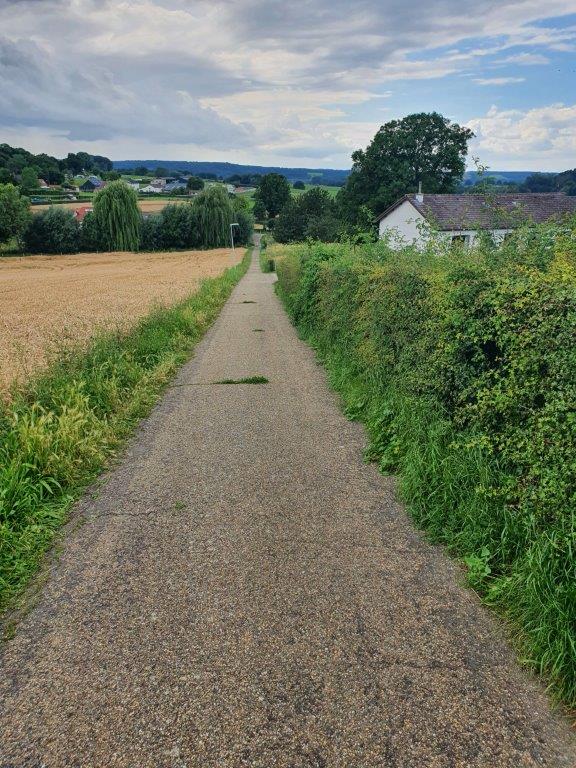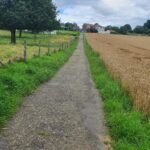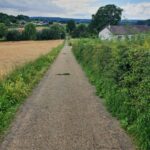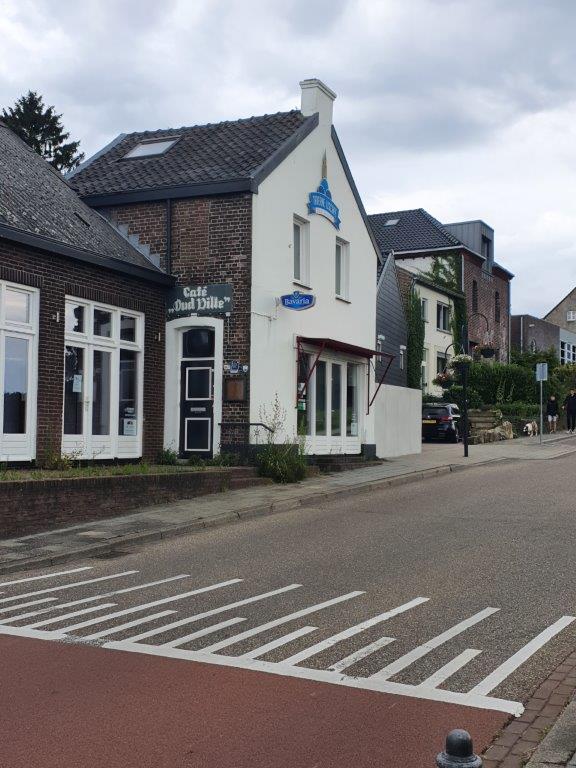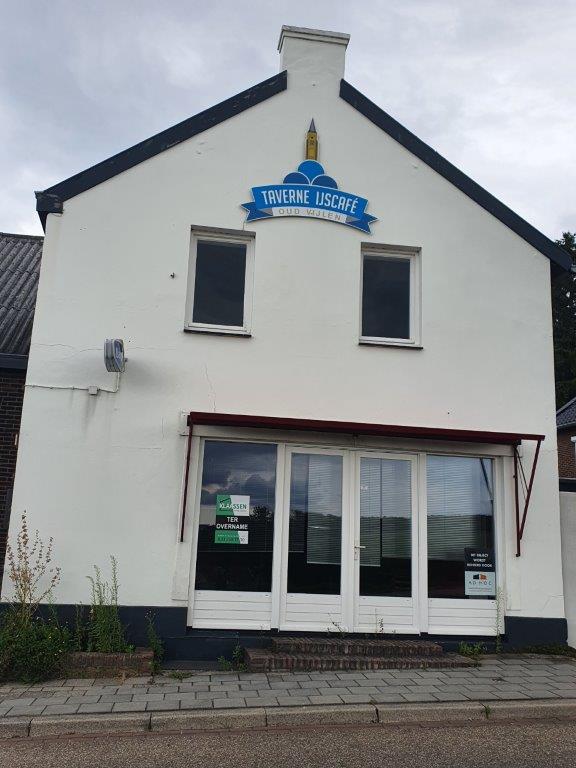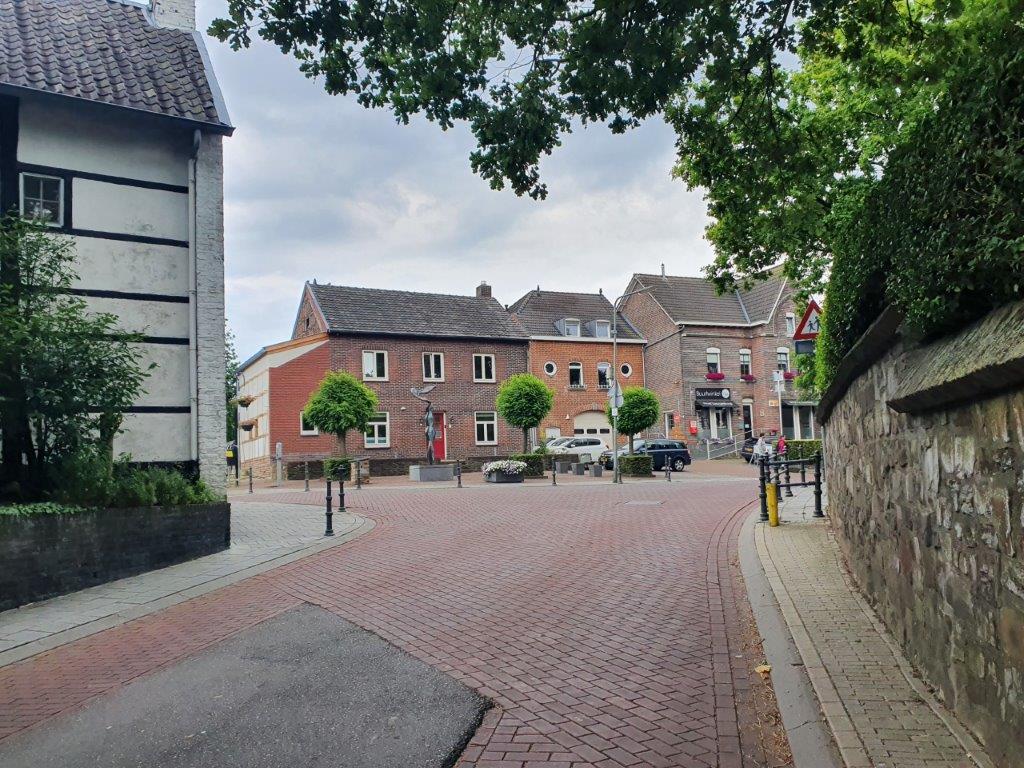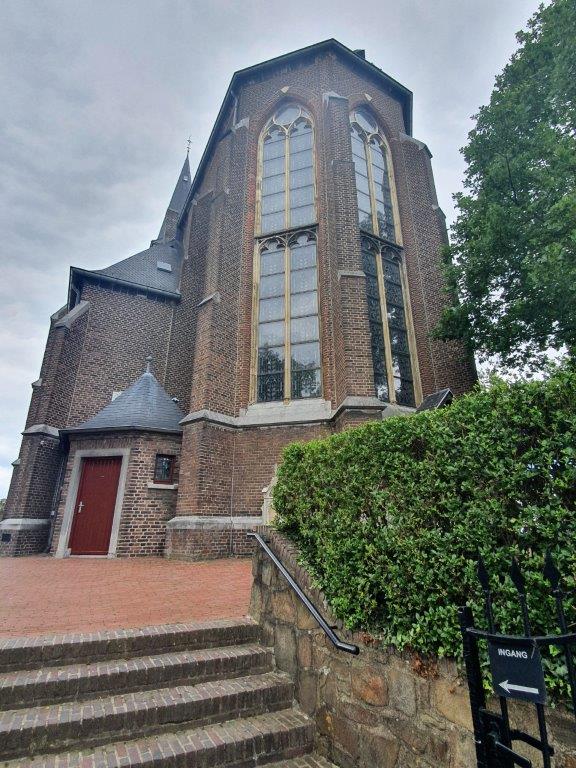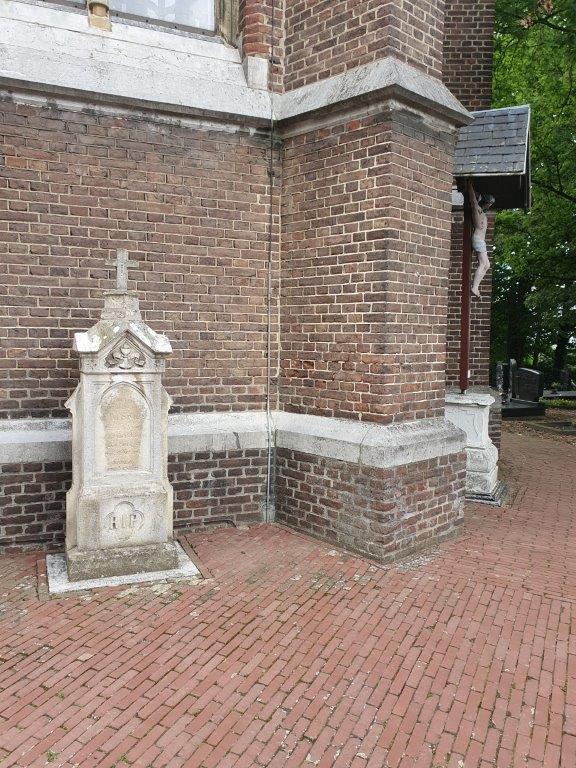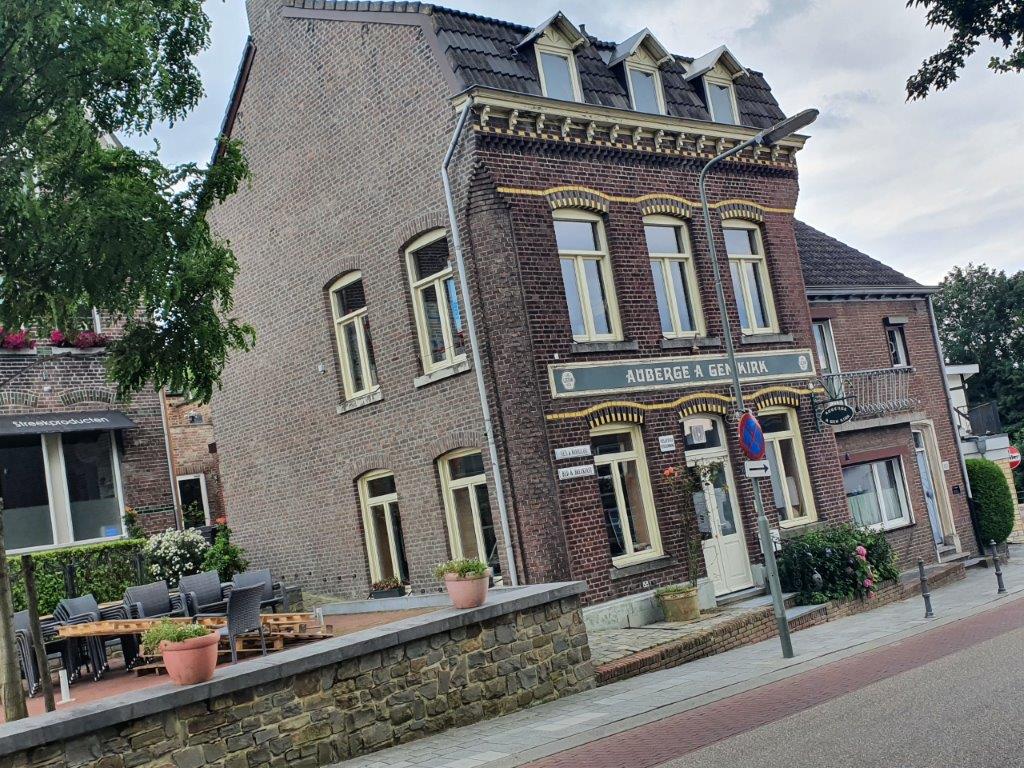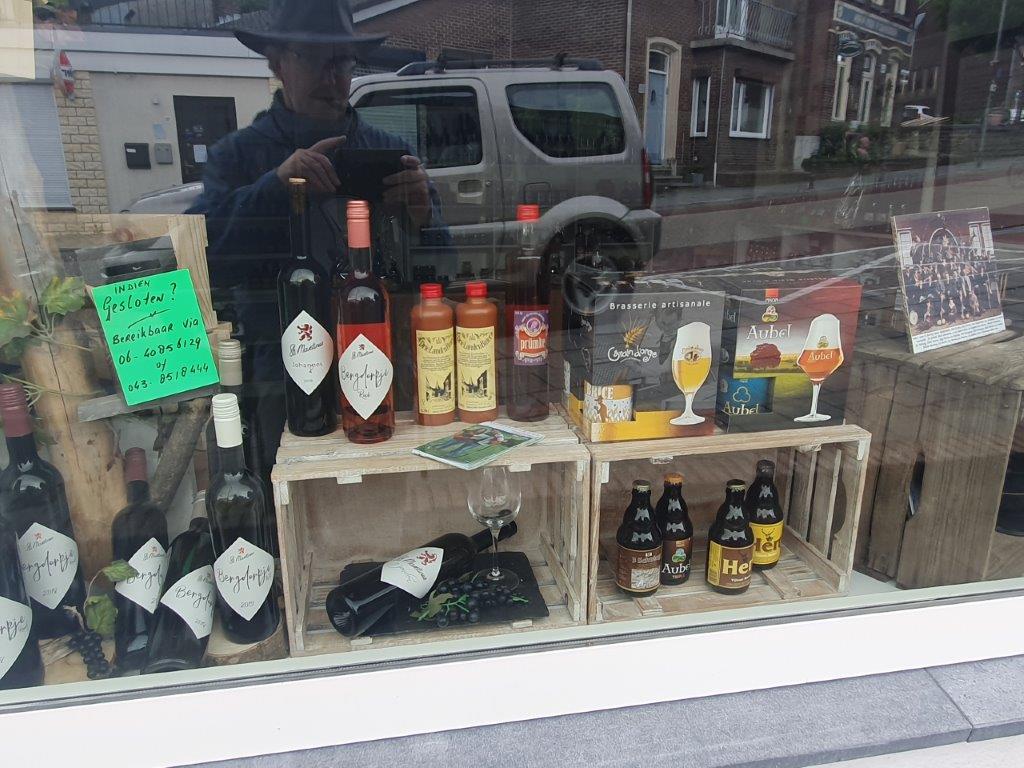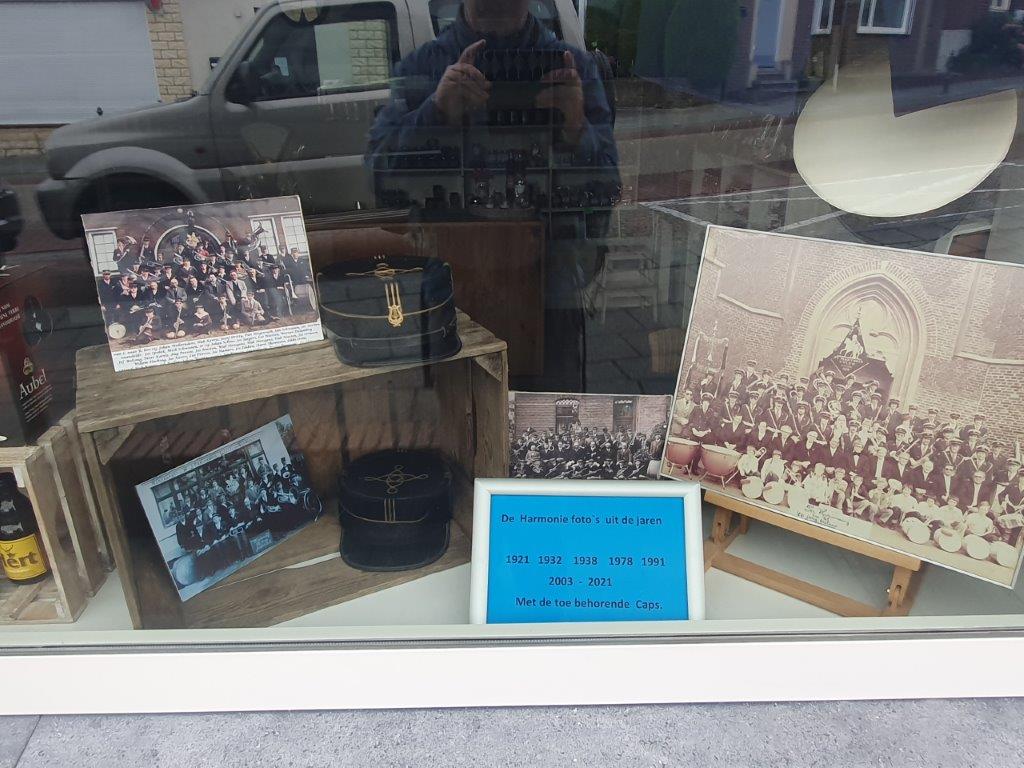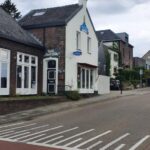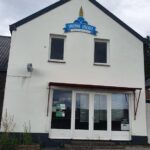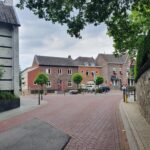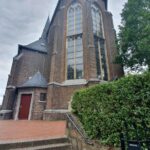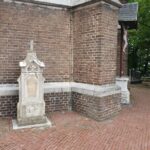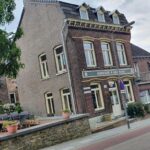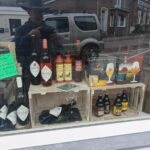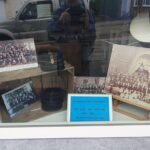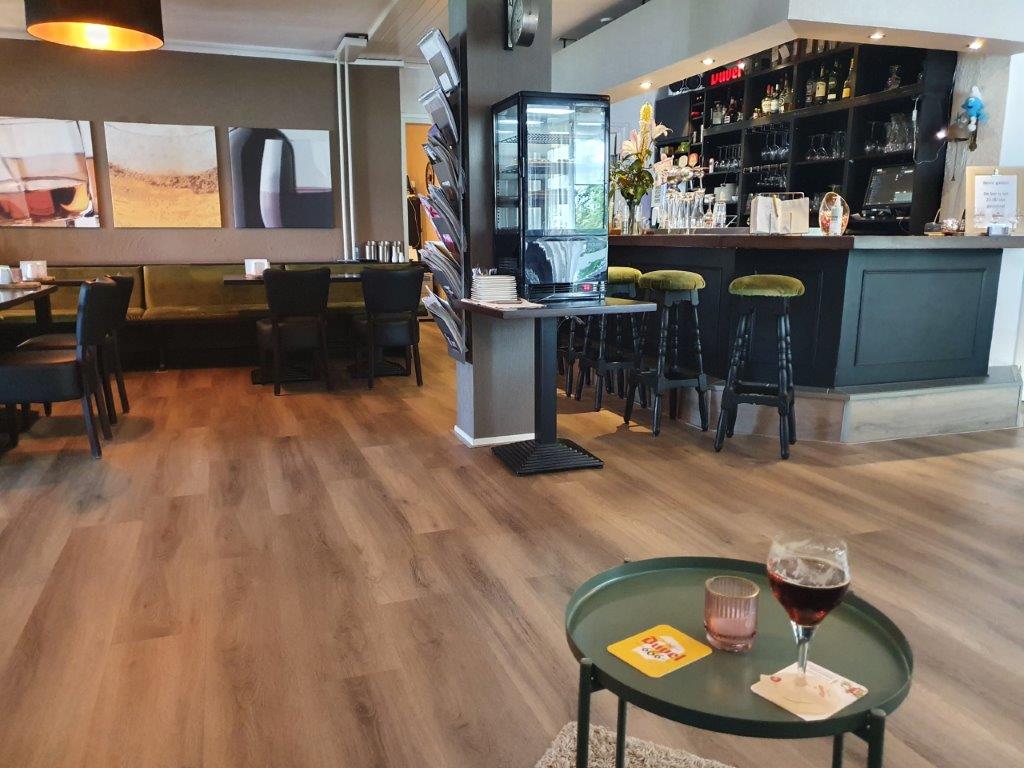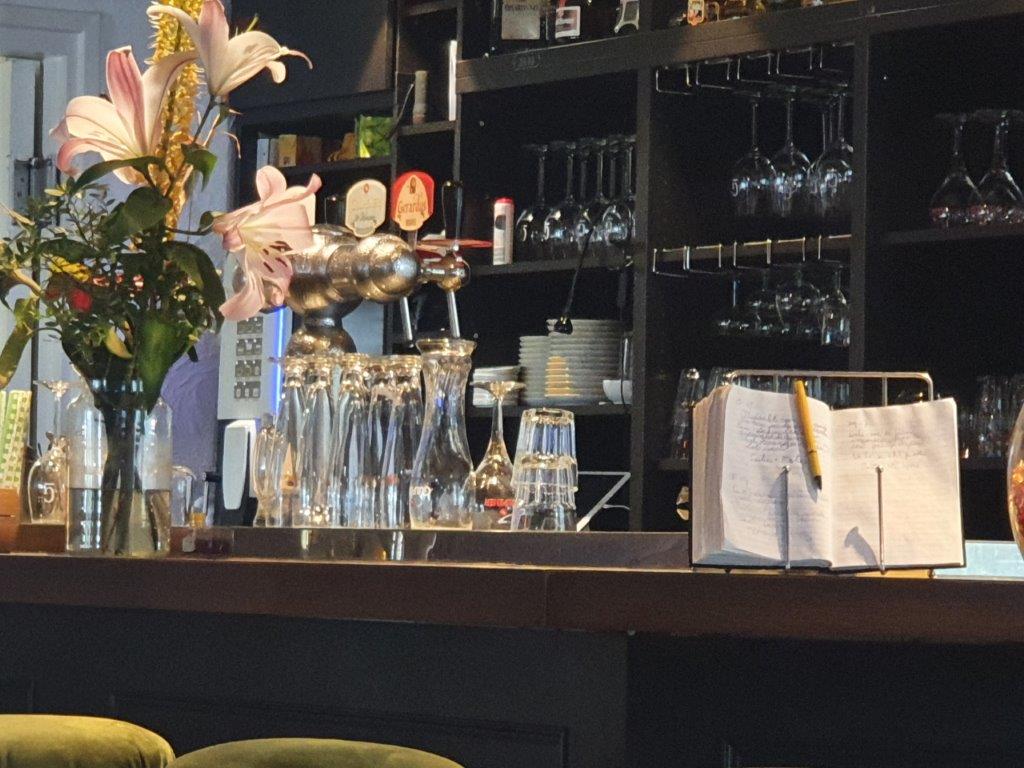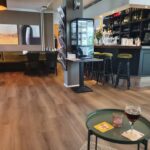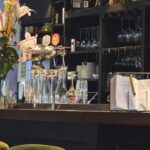Dutch Mountain Trail Deviation: Wine estate walk 2 about religion in the south of The Netherlands, wine and cement
After breakfast, The Wandelgek walked straight out of Vijlen, so not towards the village center, but opposite. He followed the Vijlenerbergweg.
The role of religion in Zuid Limburg
Limburg is one of the Dutch provinces where Catholics are in the majority, even if that majority is dwindling. Christianity has had a foothold here since the late Roman period. The oldest Christian gravestones in the Netherlands (5th/6th century) are located in the Basilica of Saint Servatius in Maastricht. The seat of the bishops of Liège is said to have originally been in Tongeren, and it is demonstrably located in Maastricht from the 6th century. Roermond has only been the episcopal city of the then established (first) diocese of Roermond since 1559. Since the establishment of the second diocese of Roermond in 1853, the area of the diocese has coincided with that of the province of Limburg.
The restoration of the episcopal hierarchy in the Netherlands (1853) ushered in a period of Catholic emancipation, after Catholics during the time of the Republic of the United Netherlands (applicable only to a small part of the province), in the French period and in the early period of the Kingdom of the Netherlands were disadvantaged. Monastic life, parish life, Catholic education, the Catholic press and Catholic associations flourished in the second half of the 19th century. From about 1900 the pillarization of society (also among Protestants, liberals and socialists) was more or less complete. Particularly in North Brabant and Limburg, the period 1900-1960 is often described as the time of the “Rich Roman Life”, a term that only came into use from the 1960s, when the heydays were in fact over (see, among others, Michel van der Plas: From the rich Roman life, 1963). Public life, including education, work organisation, health care and leisure activities, was to a large extent dominated by Catholic organisations, in particular strongly opposing the socialist pillar (see e.g. Episcopal Mandement of 1954).[12] After the Second Vatican Council (1962-1965), the influence of the Roman Catholic Church in the province gradually declined. Sunday Mass and the number of vocations to the priesthood dropped sharply, as did the birth rate, indicating an alienation from the moral precepts of the Church.
Road Crosses and Field Crosses
A road cross or a field cross is a common memorial in Catholic regions at the intersection of roads and streets. It is a religious expression that reminds passers-by that Christ died on the cross.
Road crosses exist in wooden, cast iron and stone variants. They were placed by wealthy individuals, often farmers, or by neighborhood associations raising money for them. If a road cross is placed outside an urban or village area, it is called a field cross.
If the Christ figure does not lay the head on the right but on the left shoulder, one speaks of a Wrong Lord. There are a number of road crosses that informally bear this name.
Other Cross variants
These memorials have in common that they are also intended as a call to pray for the soul’s salvation of the deceased.
- Hail Cross, usually located at a crossroads and placed to ward off bad things, especially thunder and hail damage.
- Accident or Memorial Crosses, which are placed to commemorate someone who has suffered a fatal accident at the location in question.
- Murder or kissing crosses, their placement was imposed as an additional penalty in the context of a judicial conviction for murder or manslaughter.
- Wandering crosses, these crosses were placed on large lonely plains, moors and swamp areas, where there is a danger of getting lost, resulting in possible death. In some cases, the cross serves as a signpost along well-trodden roads.
On all my walks in Zuid Limburg and also in Belgium I came across sooooo many road and field crosses that I cannot imagine how many they were. I remember that during my 1st travels on my own, I walked over the plateau of Margraten and saw many fiel crosses. Many mineworkers crossed this plateau when going to work, coming from the Maastricht area or the villages south of the plateau and going to the mines near Heerlen. These field crosses were there to provide hope, to give them an opportunity to pray for safety and to commemorate fellow workers that got involved in mining accidents.
I also once did a walking route that was build around the theme of the road and field cross. Maybe I’ll blog about that sometime.
Road and field crosses have really become an integral part of the landscape in Zuid Limburg.
Maria cave and the way of the cross
The ‘cave’ and the way of the cross are located on the edge of the Vijlenerbos with a beautiful view of Vijlen and the surrounding area. There are a number of benches and rhododendrons and other plants adorn the area. The ‘Mary Cave’ is in fact a natural stone wall with a clear white image of the Virgin and Child. The 14 stations of the cross are formed by a brick column with a house-shaped construction in cement stone and a relief of the relevant station.
Beneath are the 14 different stages depicting the way of the cross…
And this is the actual Maria ‘cave’ which is about halfway…
In 1945 this Maria cave was placed here out of gratitude that Vijlen was spared from war violence. When 7 young men from Vijlen, had returned safe from the then Netherlands East Indies, a memorial plaque was placed out of gratitude. The building was designed and manufactured by the Heerlen artist Sjef Drummen, and was built from natural stone that was mined in the Vijlenerbossen. Until WWII, the adjacent forest plots were jointly owned by the inhabitants of the village of Vijlen. In 1988 the stations of the cross, also designed by Sjef Drummen, were added and consecrated. All work was done selflessly by residents of the municipality. Eucharistic celebrations and other religious ceremonies take place here every year.
The path is located on the verge of a hill and the views are magnificent…
Near the ‘cave’ is a steep path going up towards the Vijlenerbergweg. The Wandelgek ascended and continued towards the Boscafé Het Hijgend Hert.
St Martinus and Domain Holset Wine Estate Walk Part 2
This was where he stopped his wine estate walk the day before and now he was going to continue that walk.
See this blogpost for the 1st part of the wine estate walk and for information about the actual trail description:
Dutch Mountain Trail Deviation: C’est trés Français
The ascending path ran through a forest partially via stairs, on the really steep sections.
The Wandelgek followed the Vijlenerweg and then took a forest path to the right near Boscafé Het Hijgend Hert. This path went deeper into:
The Vijlenerbos
The Vijlenerbos is an approximately 650 ha large forest and nature reserve near the town of Vijlen in the Dutch Limburg municipality of Vaals. Small parts of the Belgian municipality of Blieberg are located on the southern edge of the forest. The Vijlenerbos actually consists of several forests, all of which are owned by Staatsbosbeheer; it is therefore sometimes referred to as the Vijlenerbossen.
The Vijlenerbos is one of the few forests in the Netherlands with a pronounced microclimate. Due to the high location, the temperature is often slightly lower than elsewhere, there is often more clouds than in the valleys, which means more rain, hail and snow falls. This makes the climate similar to that of the nearby Ardennes. The forests consist for a quarter of coniferous forest and the rest of deciduous forest. The higher parts have fairly poor, acidic soils with the accompanying vegetation of birch-oak forest with lots of lingonberry and bracken; the lower parts are considerably richer in species, including beech, hornbeam, hazel, holly and sweet cherry, in the shrub layer Gelderse rose and spray elder, medlar and gooseberry. In calcareous areas (especially on the steep slopes) primrose and a berry can be found locally, and sometimes also wild garlic, a strongly fragrant wild onion. In the lower parts, stream-supporting forests with black alder and especially common ash grow. Locally along the streams are arid grasslands with rare plants such as the male orchid, black-blue rapunzel and blue monkshood. The pinniped salamander thrives in the vicinity of streams. Quite special about the fauna is the presence of 5 different mustelids: stone marten, badger, ermine, polecat and weasel. In 2014, a wild cat was captured on a wildlife camera several times. On Sunday 1 June, a wild cat was caught in the vicinity of the Vijlenerbos and equipped with a collar transmitter.
Next the trail went more north, descended and The Vijlenerbos was left behind. A landscape of hills, open fields with hedgerows, little rivers and smaller areas of trees followed.
There was a herd of cattle in a meadow. The trail crossed 2 cattle grids …
…and further north on beautiful country paths…
… towards the lower part of the village of Vijlen. On the picture beneath the church tower of Vijlen is further away and on higher ground than the building in front.
This part of the village was full of half-timbered houses.
The historic walk ‘Vijlens Past’
takes you through the most beautiful area of Vijlen and the countryside. Straight through fields, along the edge of the forest and through small hamlets. During the walk you will learn more about the interesting history of the village via information boards along the route. A look back at 1000 years of filing in a nutshell. The walk starts at the striking church of Vijlen, to the right of the entrance gate on the outer wall. The route is also signposted, follow the signs with the 1000-year logo.
The wine estate walk which The Wandelgek was following now, was partly overlapping with this historic walk and thys there were several occassiins where The Wandelgek spotted information signposts which explained Vijlens past, like e.g. the signpost above. Texts are in dutch and in german language, but sadly not in english.
Some examples of half-timbered houses…
After this the path turned towards a small rural hamlet of Roth, but before getting there, the first large vineyards were crossed…
These are the vineyards of The Martinushoeve wine estate, which is the largest wine estate of The Netherlands. The church tower of Vijlen was visible from the vineyard.
After leaving the vinyard he crossed a road towards Vijlen and went on over the hills towards Rott…
… and he reached the Rotterbos, which is part of the larger Vijlenerbos.
After a while he reached another vinyard owned by the Sint Martinushoeve wine estate where he saw some people that were guided around…
The Wandelgek circeled around the vinyard and walked a bit between the vines…
Needless to say that the views over hills, valleys and barley fields were magificent…
Then in the Rotterbos, he saw another field cross, which was probably a hail cross, although nothing gave away why the cross was located there. The forest dirt path did split here, so maybe it had a navigational purpose too.
The location certainly was very beautiful.
Then The Wandelgek saw the first buildings of the hamlet of Rott between the trees…
At the end of the path he turned right onto a paved road and followed it into the hamlet, which seemed quite old. There were again lots of half-timbered houses with beautifully well tended gardens and somewhere at the right side of the road was an old well and a water pump…
Then at the left side of the road, The Wandelgek reached The Martinushoeve, where he decided to pause to take part in a wine tasting.
There was a green meadow garden with tables and chairs from where he had a fantastic view over the land. The sun appeared from behind some clouds and The Wandelgek knew he could do an extensive sort of wine tasting, because he was very near to his end destination for today.
He sat down and enjoyed the view…
Wine estate St. Martinus
The vineyards are located in the southernmost tip of the Netherlands, between the foothills of the Ardennes, near the three-country point in the municipality of Vaals. Wijndomein St. Martinus started in 1988 with a small vineyard planted by Hans Beurskens, this vineyard quickly grew into a true testing ground. The takeover of the company in 1996 by his son Stan Beurskens heralded a new phase in which the road to deepening of knowledge was permanently taken. The vineyards ‘t Rott, Villare and Holset currently consist of 13 hectares. However, they work and harvest over 16.5 ha.
Meanwhile he checked the wine list of the estate and chose to start with a selection of 3 white wines, to start.
A cheese selection was added to that to complete the experience…
Then the tasting began…
White wines:
- Bergdorpje Wit: This fresh wine has a jasmine scent and surprises with a fruity taste of gooseberries on the palate.
- Vriendschap: Friendship is a beautiful white wine with exciting aromas of green apple and lime.
- Josefien: Like the daughter of the winemakers, this wine is alive and cheerful. Fine acids and aromas of fresh fruit make this elegant wine the perfect accompaniment to dinner.
Red wines:
- Bergdorpje Rood: A smooth, fruity red wine aged in oak, in addition to the fruity scent of red and black fruit, it also gains depth.
- Olivier: This full, round wine has a scent of black fruit in which cherries, blackberries and blackcurrants can be found. Aging for 12 months in large oak barrels gives the wine a light wood flavor and a hint of cloves.
- Johannes: This wine is characterized by a taste explosion of fruit. Recognizable are the red and exotic fruits, such as red berries and pomegranates, combined with delicate tannins. This fusion provides an exceptional taste experience.
After having tasted every wine, my preference fell on the Johannes red wine and to finish my wine tasting I ordered and enjoyed a full glass of this superior wine…
Accompanied by an excellent choice of local cheeses that was a real treet and a good base for my next endeavor which was a further section of the Dutch Mountain Trail. I had planned to leave Vijlen the next morning but was really pleasantly surprised by the beauty of the area.
After finishing his wine tasting, The Wandelgek visited the shop and the restaurant and then returned to the wine tasting garden.
The Wandelgek left the wine estate garden via a small stair going down and walked right towards the church of Vijlen and a campsite…
Doing so, he passed the vinyards wine cellar…
Cycling as well as mountain biking are 2 very popular sports, practiced in South Limburg, because of the many hills available…
After crossing another paved road, The Wandelgek continued the Wine estate walk through a bunch of hedges…
It felt quite secluded to walk between green hedges and it felt a bit like being in the famous labyrinth scenes from the movie Harry Potter and the Goblet of Fire and the Jim Henson movie Labyrinth with David Bowie.
After going through a low iron gate, the hedges opened up into a meadow, which The Wandelgek crossed …
Dutch Cement Factory
Then he reached a paved road and a site where once a dutch cement factory had been located…
The Nederlandsche Portland-Cementfabriek or new factory was one of two cement factories in Vijlen in the Dutch municipality of Vaals. The factory was located in the valley of the Lombergbeek at the foot of the Vijlenberg, southwest of the village. To the west of the factory is the hamlet of Melleschet.
The factory had its own narrow gauge railway for the transport of the material. The track gauge was 60 centimeters. The track complex had a length of 820 meters and consisted of three points, sixteen turntables and eleven tipping carts.
The factory produced cement, whereby the limestone was extracted in the limestone quarry in Vijlen, the pure lime used came from the Halembaye Groeve and the clay used came from a Vaalser quarry.
History
On June 18, 1875, a permit was obtained from the Provincial Executive of the Duchy of Limburg for the establishment of a cement factory, the Aachen-Vijlener Portland Cement Werk, which was built on top of the Vijlenberg. The Limestone of Vijlen from the Vijlenberg was used for the production of the cement. The extraction of this limestone first took place in an open quarry that was located on the factory site, but since 1877 people switched to the extraction of limestone in underground tunnels. This underground limestone quarry consisted of a tunnel 12 meters below the surface, with several transverse passages where the limestone was extracted. Because of the great risk of collapse, this was ordered by the Provincial Executive to stop, after which the cross corridors that had already been dug were filled in. Then, in 1880, mining continued in an opencast quarry at the end of the tunnel. Around 1899 a second factory was opened, the Nederlandsche Portland-Cementfabriek. For the supply of limestone, a tunnel was constructed under the Vijlenberg to the opencast quarry of the Aachen-Vijlener Portland Cement Werk. In 1917 the capacity of the factory was increased from 8,000 then production in one year to 15,000. In 1919, production in both factories was stopped due to a lack of coal, the costs were also too high and there was too much competition from other countries. In 1922 a new owner tried to restart the Aachen-Vijlener Portland Cement Werk, but in the same year two people were killed in an accident and the old factory was closed. Demolition of this factory started in 1927. On December 1, 1927, the Nederlandsche Portland-Cementfabriek was bought by the ENCI, but the unfavorably located factory was too outdated and on June 16, 1929 it was stopped. Most of the factory was demolished in the 1930s. During the Second World War, one of the tunnels of the quarry was used as an air raid shelter and after the war there was briefly a mushroom farm. After the Second World War, the limestone quarry was filled up with waste and was given the name De Koel. In 1982 the quarry was further filled with soil and rubble (from a textile factory in Vaals) and in 2004 the Koel was transformed into a village square. In 2019, the location of the factory is in ruins.
There were still some ruined remains of the factory left…
Then The Wandelgek reached the ascend to the upper part of Vijlen and to the point where he had started the wine estate walk, the previous day. See: Dutch Mountain Trail Deviation: C’est trés Français
The last part of the Wine estate walk was going uphill towards Vijlens village center…
During my walks on the Dutch Mountain trail towards Vaals and Vijlen and my subsequent walks on the Wine Estate walk, the church tower of Vijlen was almost nowhere out of vision. It is build on high ground and the tower itself is not a low building either so it popped up almost everywhere, after each bend in the road or after leaving a patch of forest and thus it functioned as a navigational beacon, which The Wandelgek would leave behind….
At this point on top of the ridge on which Vijlen was built, The Wandelgek finished the Wine Estate Walk and turned towards Vijlen’s village center and his hotel…
In the old village center, The Wandelgek saw this building which had been occupied by an ice café. He was not sure wether it had been in there in 199?, but he finished his multiple day thru hike from Eupen to Epen with an extension to Vijlen on the doorstep of that building, enjoying the setting sun and taking a bus from the nearby busstand towards Maastricht. Another thing The Wandelgek noticed was the beer shop 😋.
Then he continued his walk to Hotel De Linde where he enjoyed some delicious draft beers before he went to his room for a long hot shower…
Dinner was again fabulous…
His stay at Hotel De Linde and Vijlen had been a really satisfying one.
After that The Wandelgek enjoyed the evening hours in the bar and after that he packed his stuff for the upcoming walk and got to bed.



